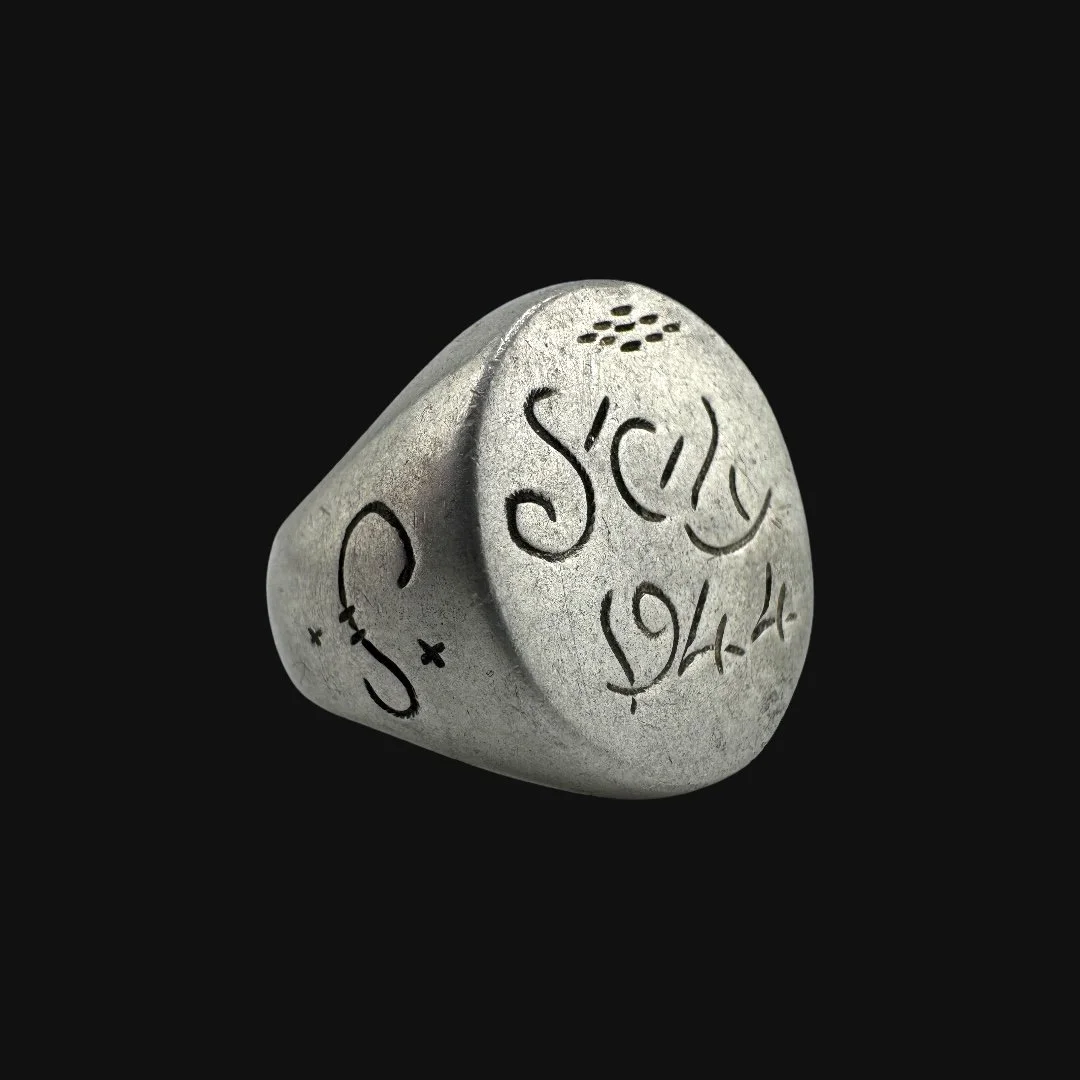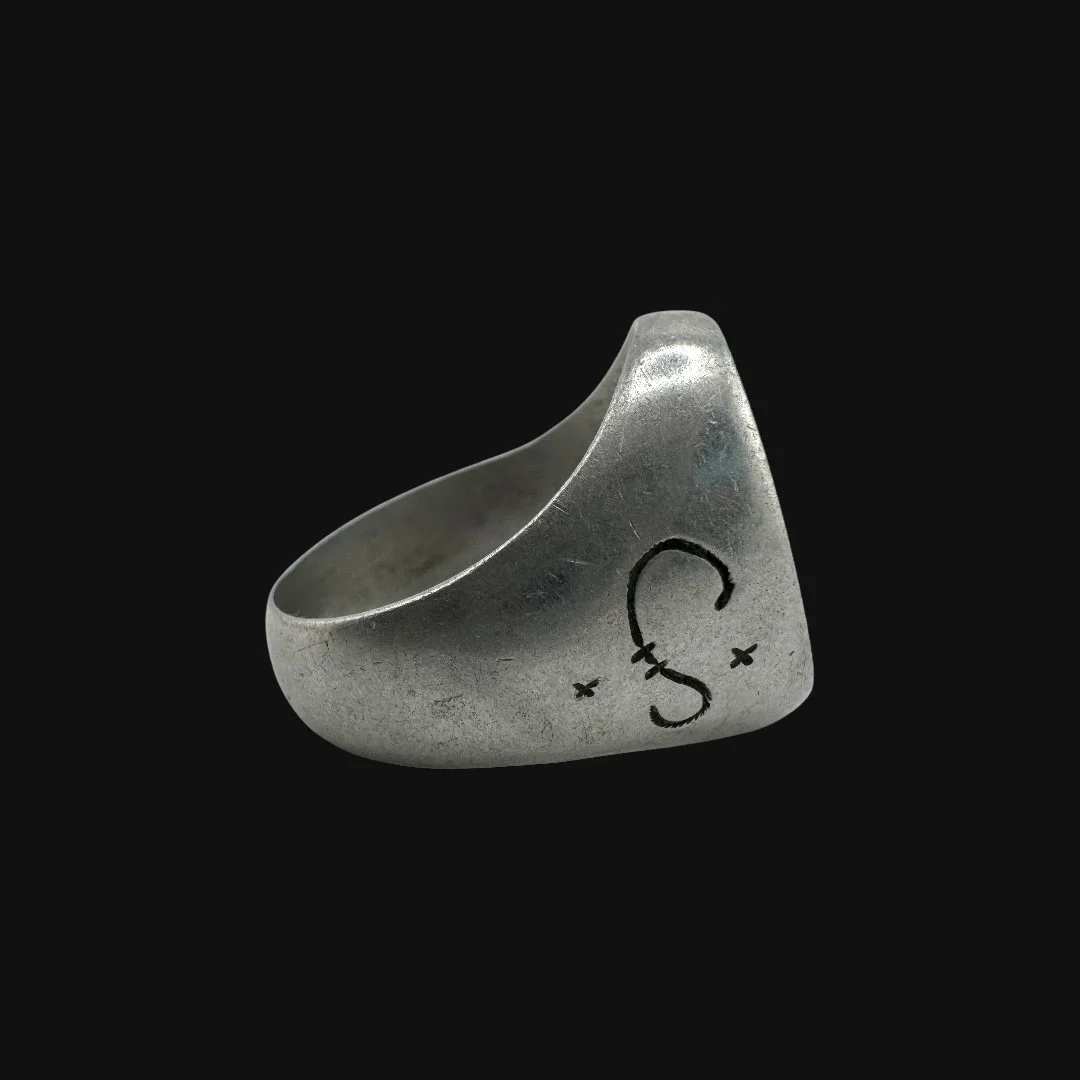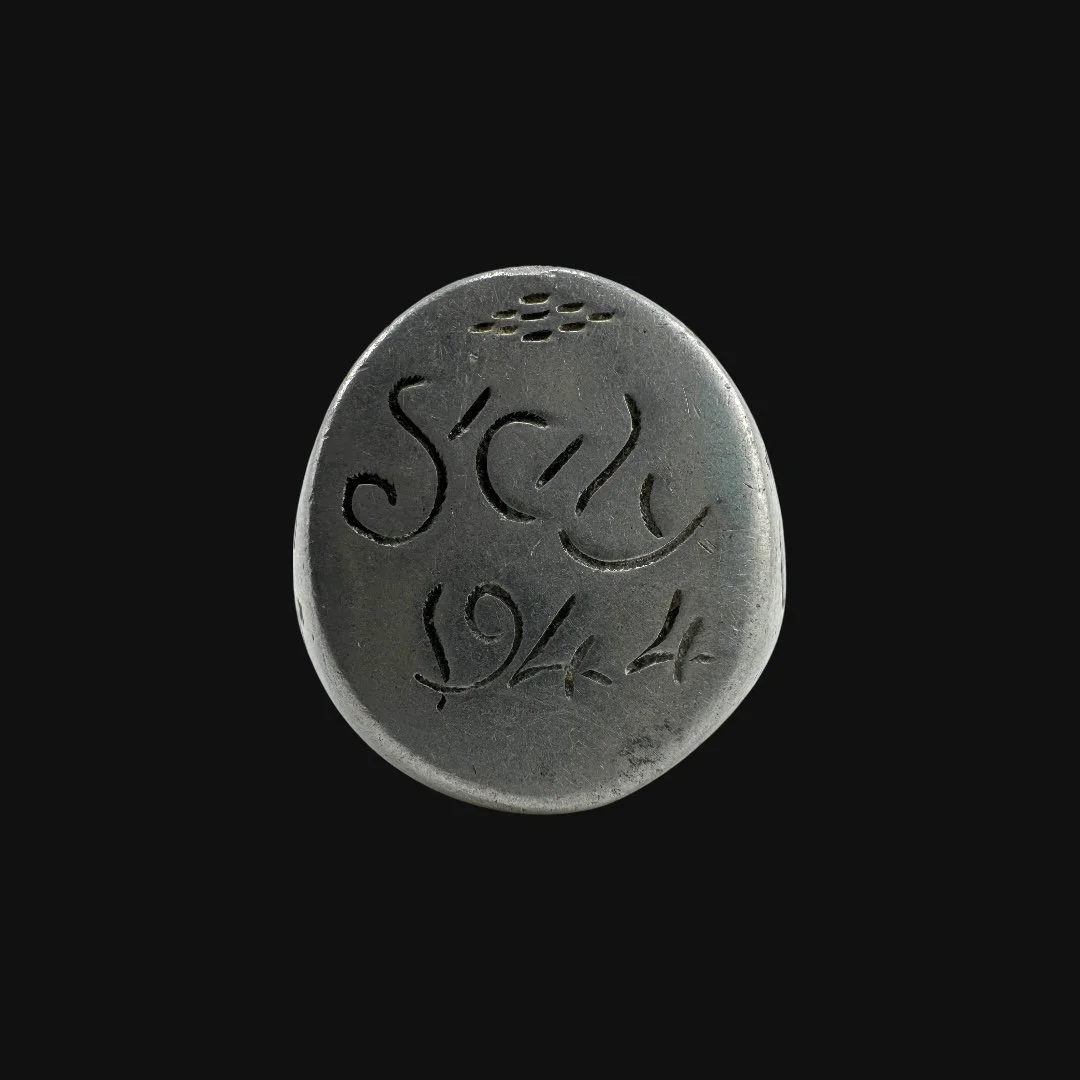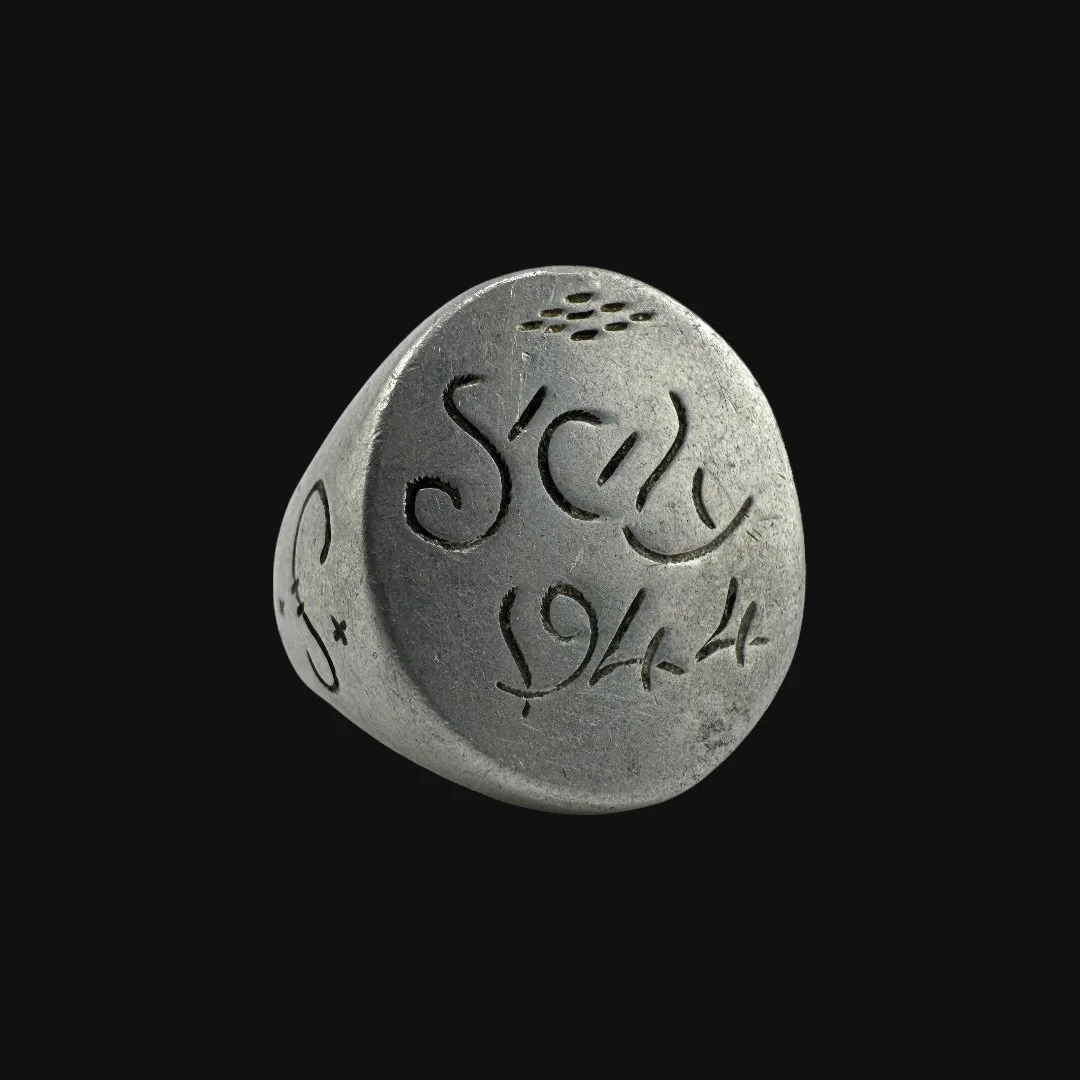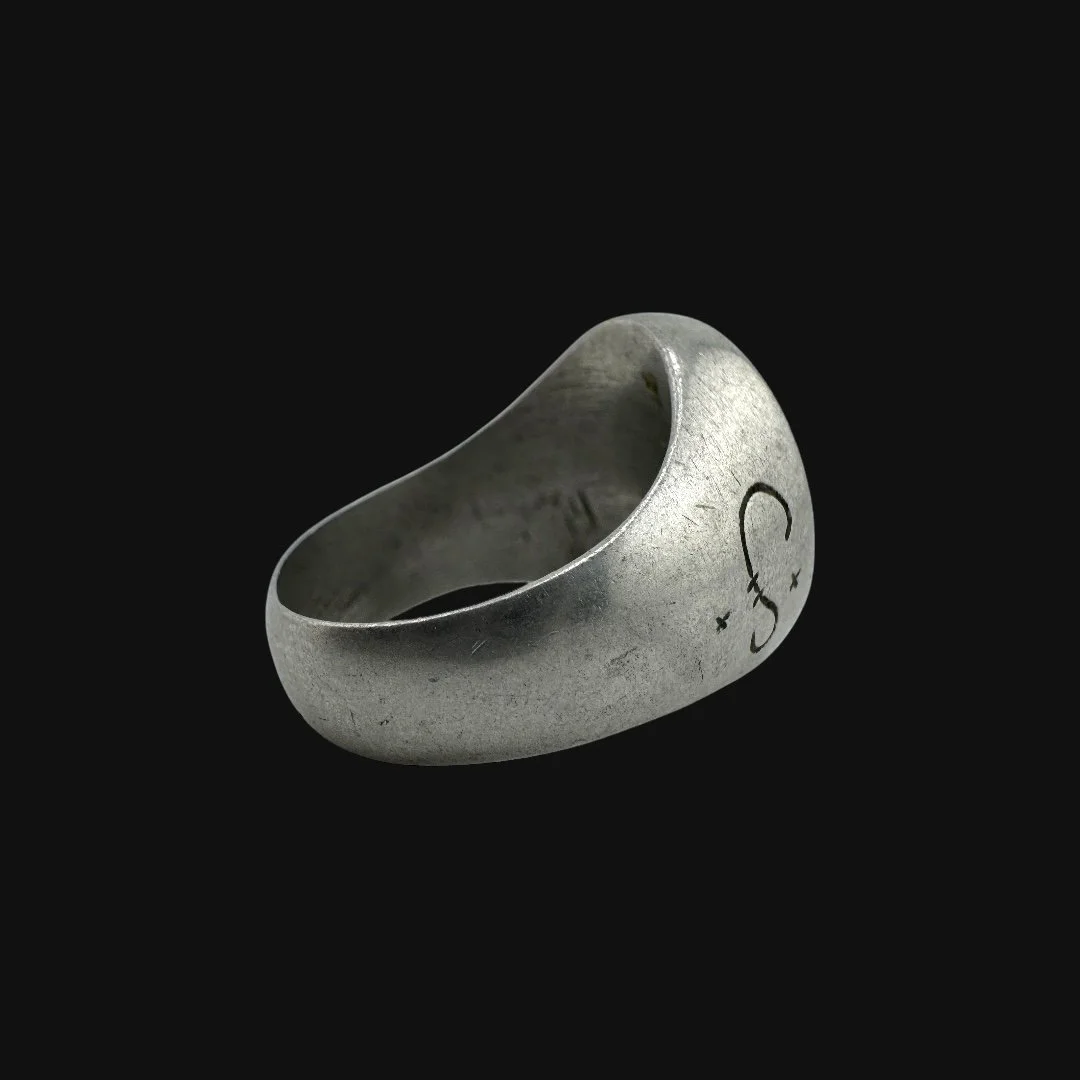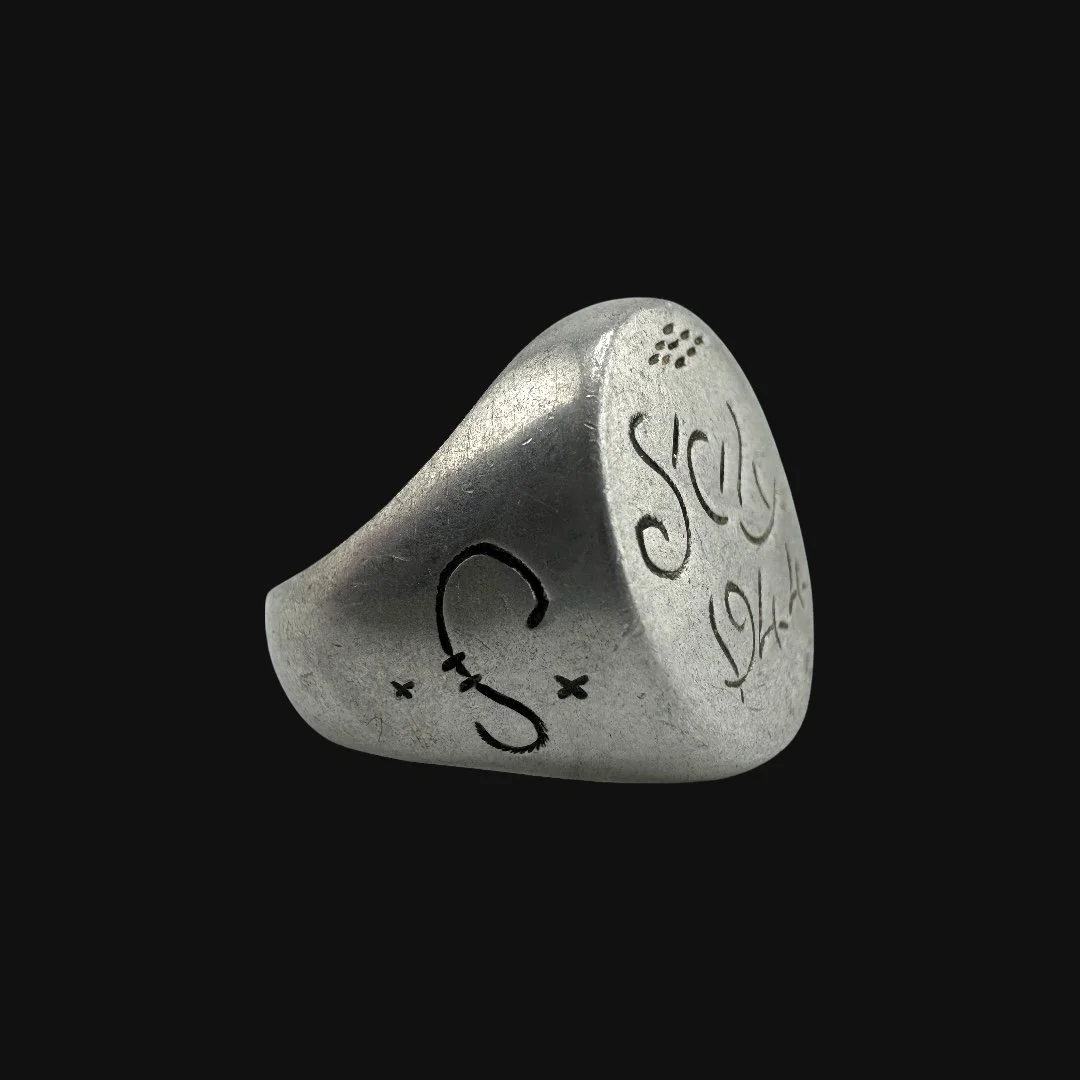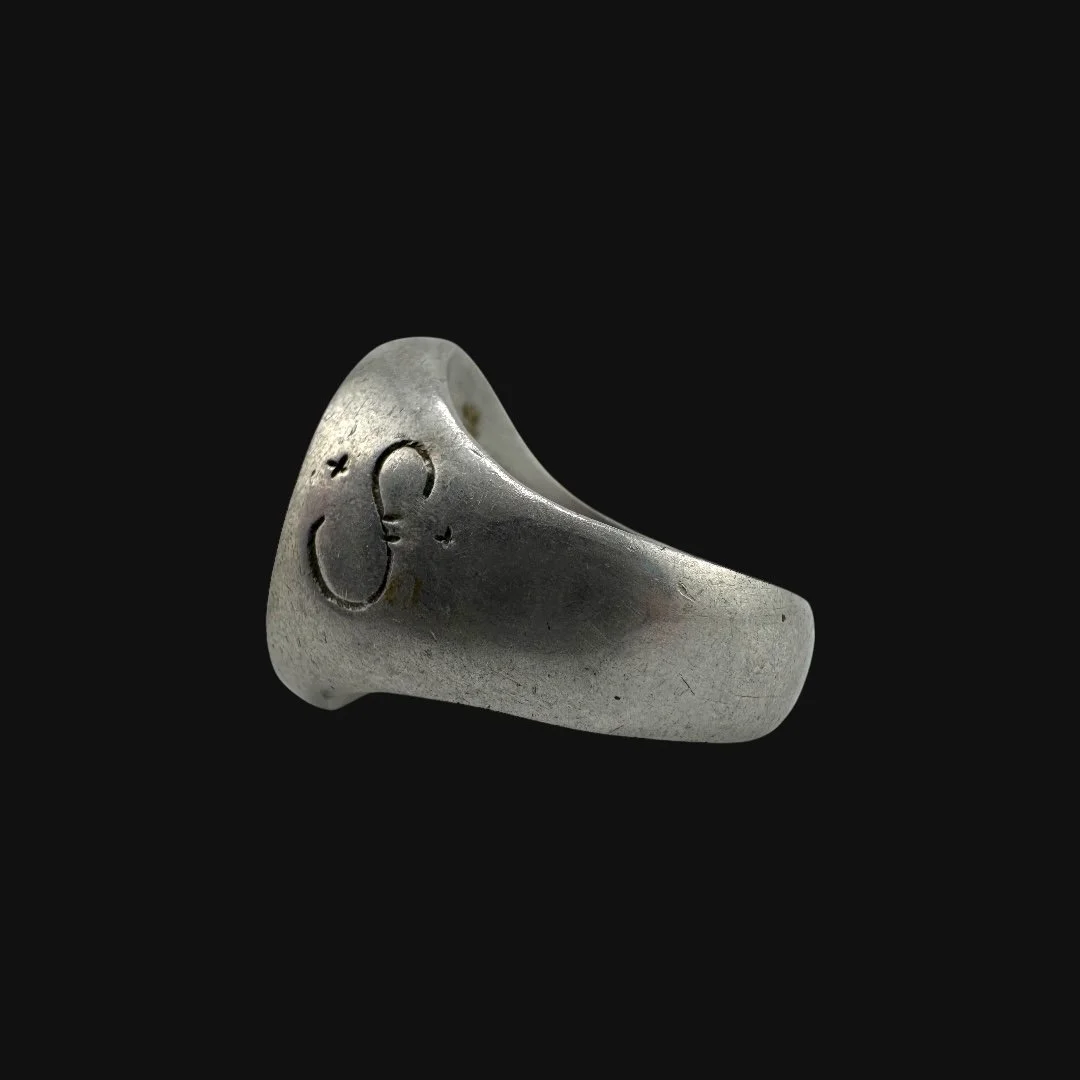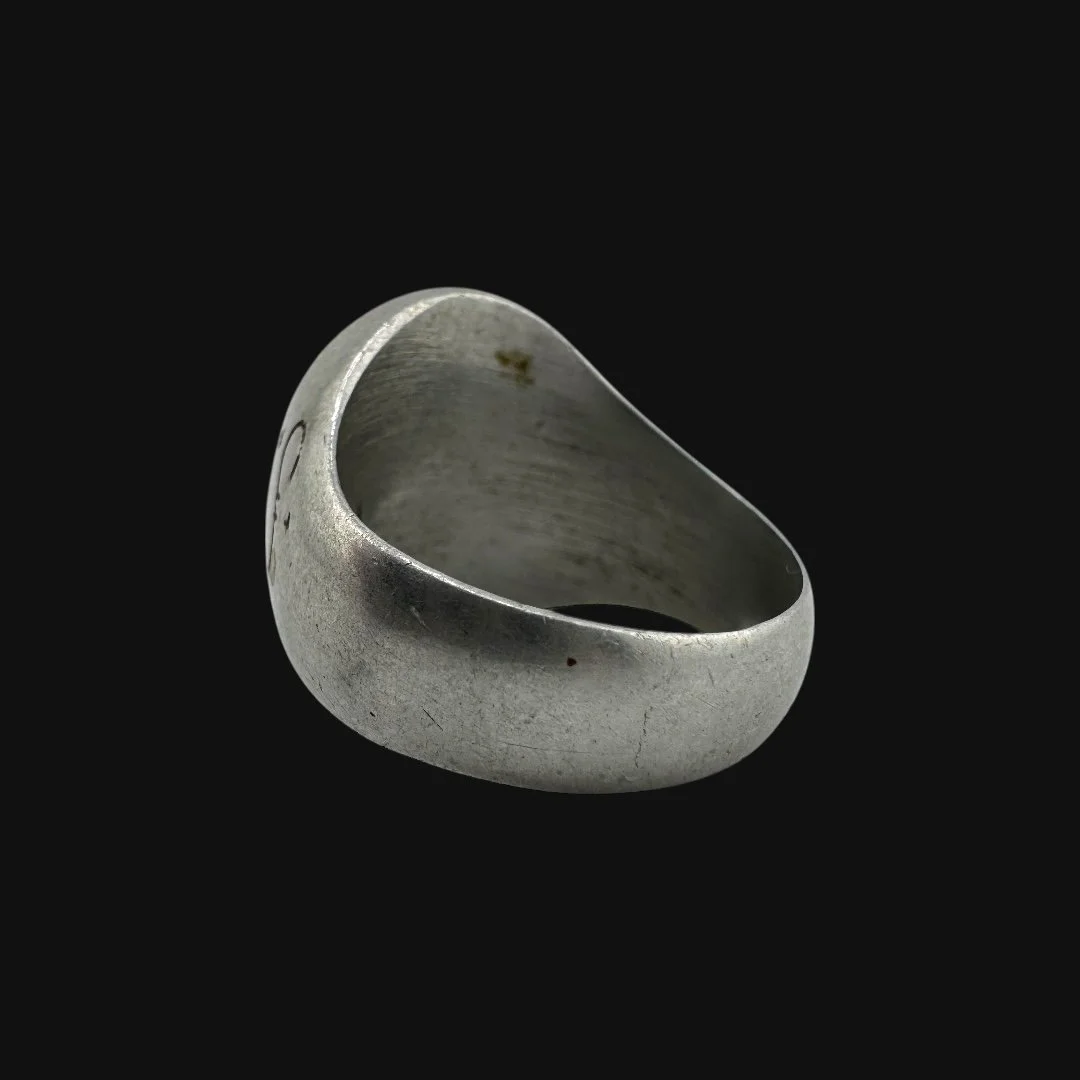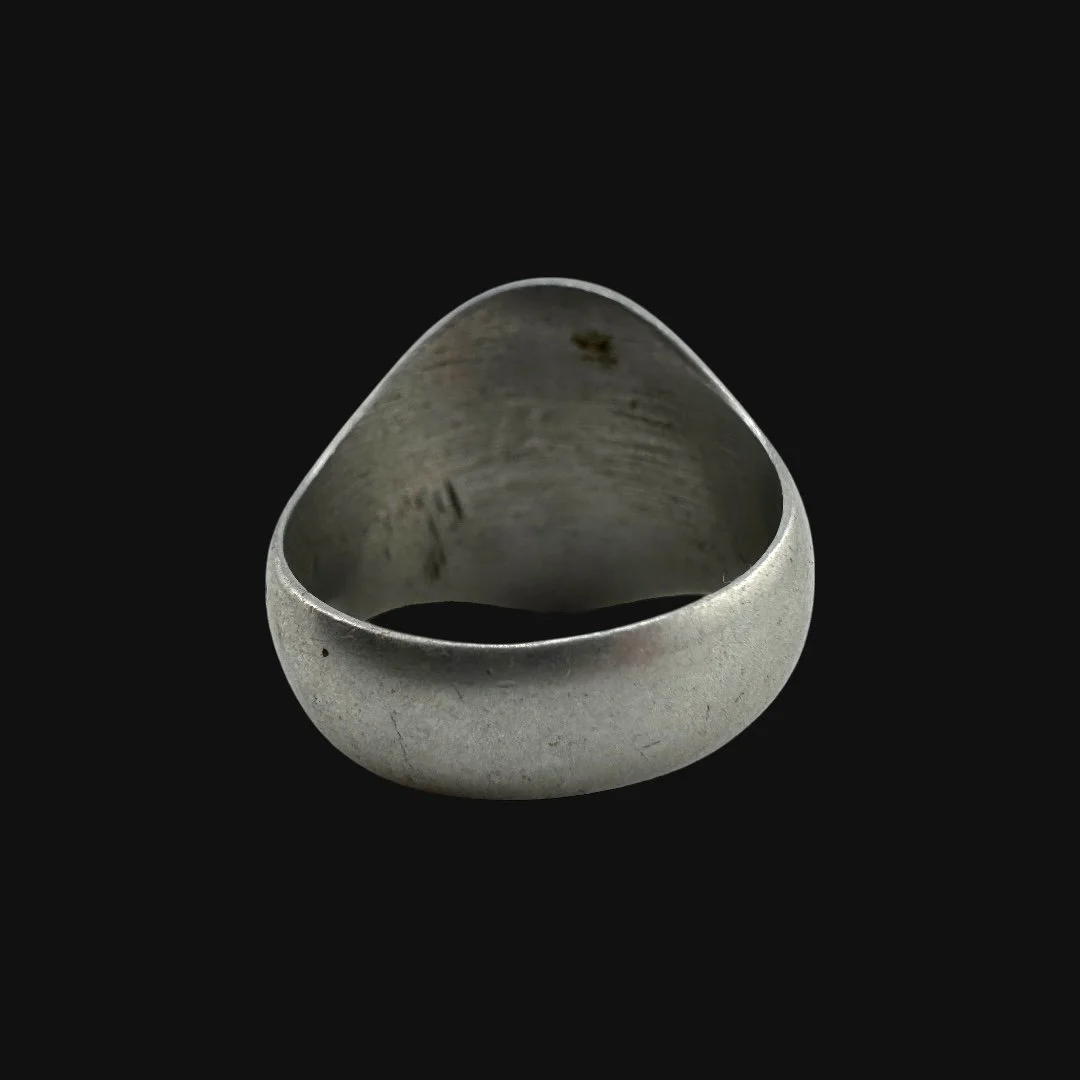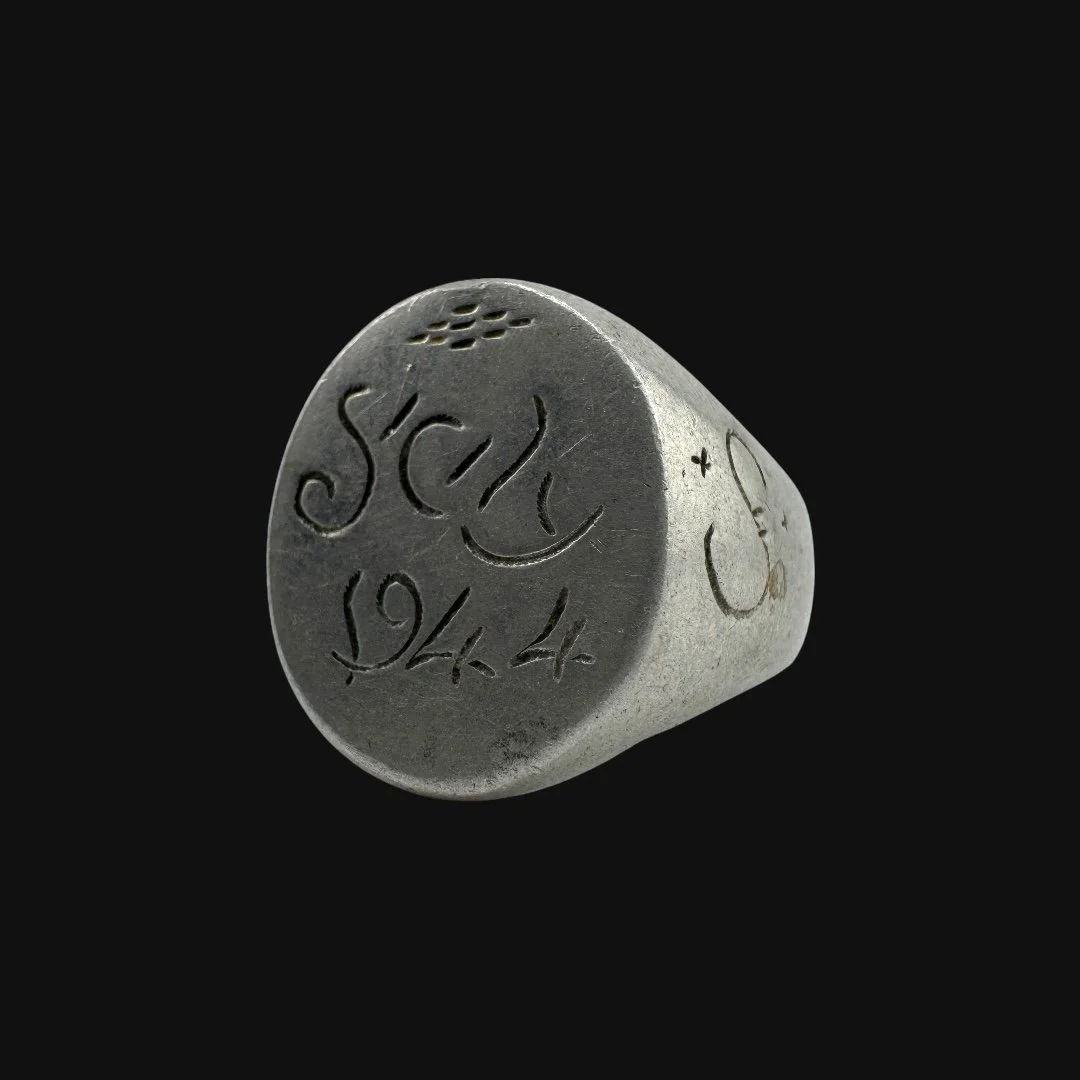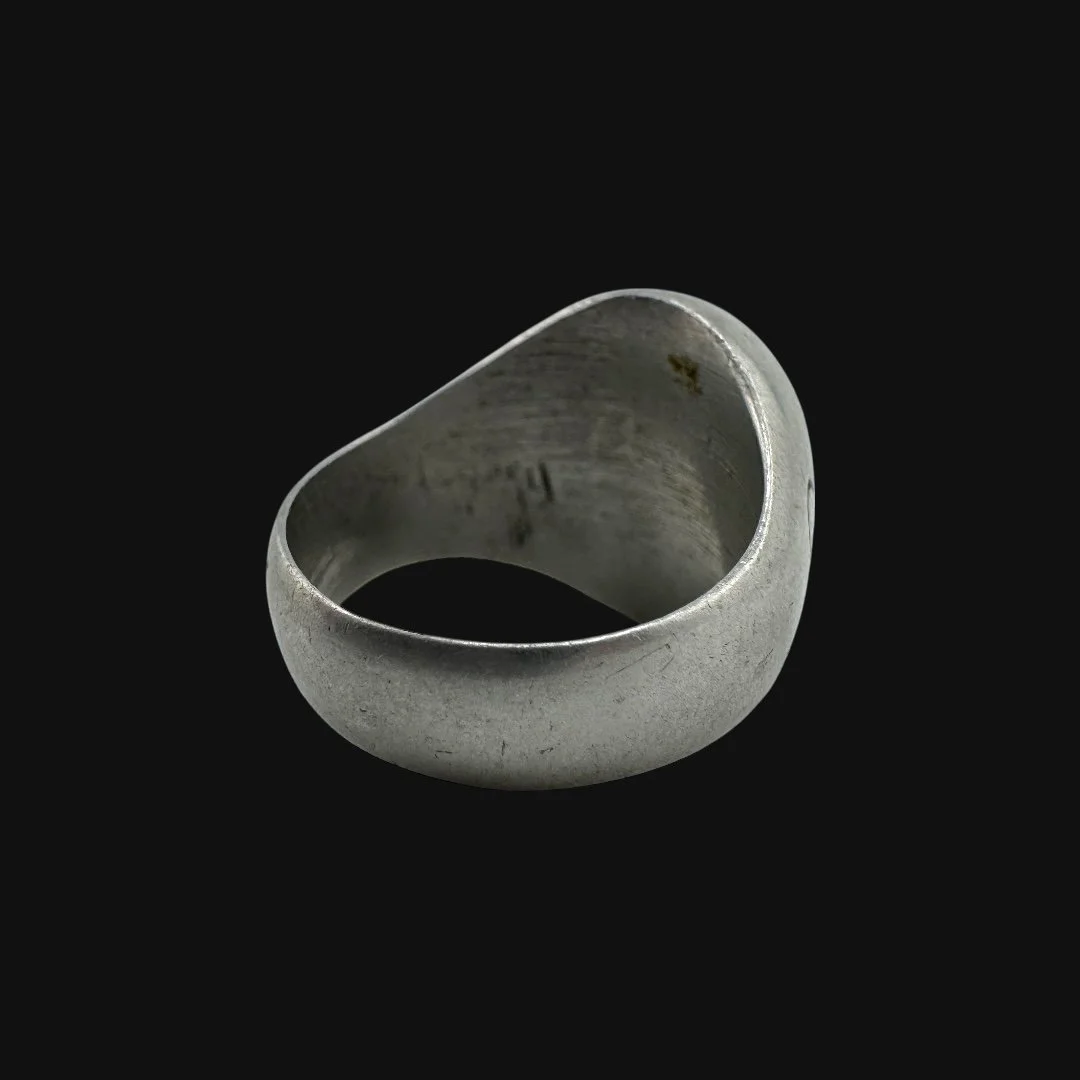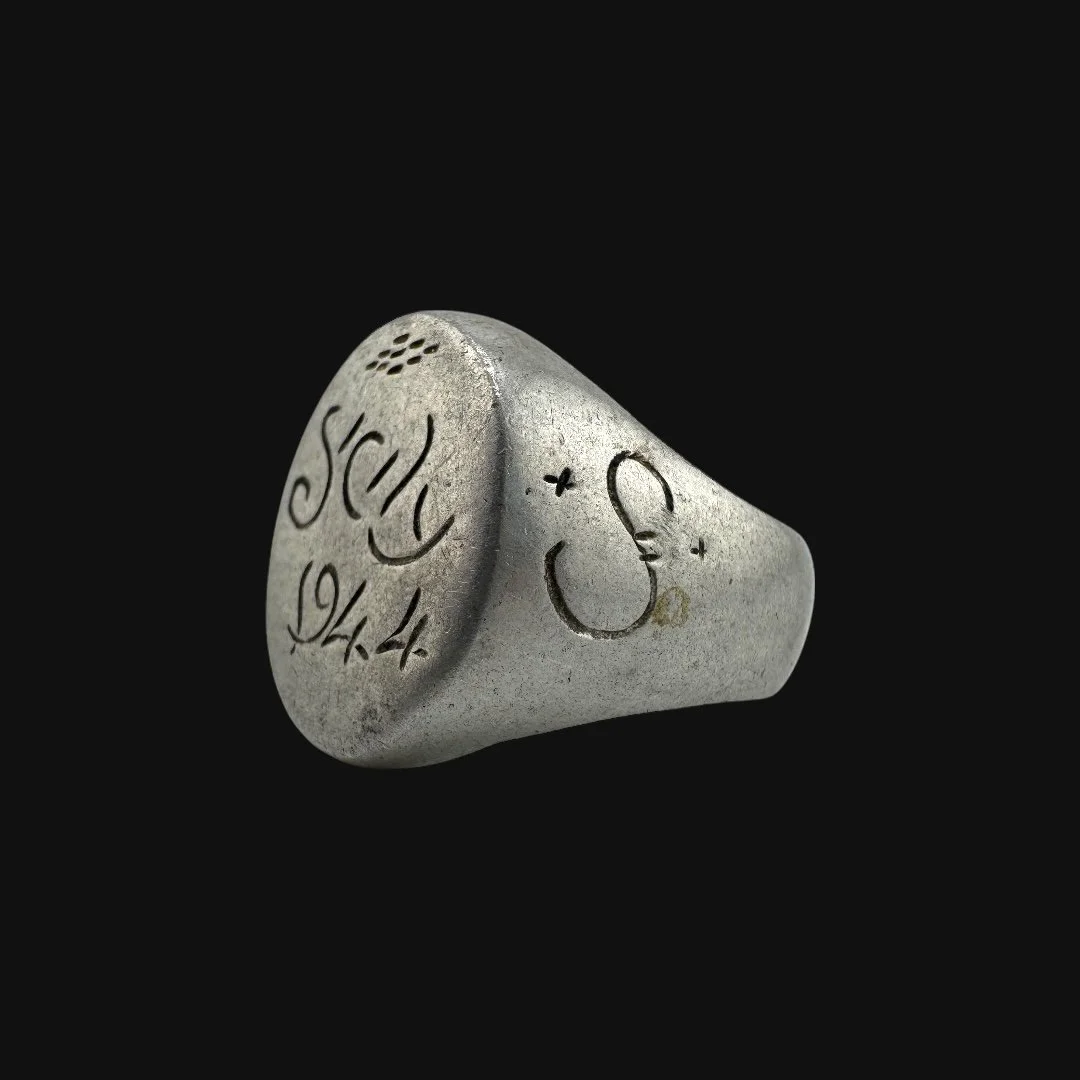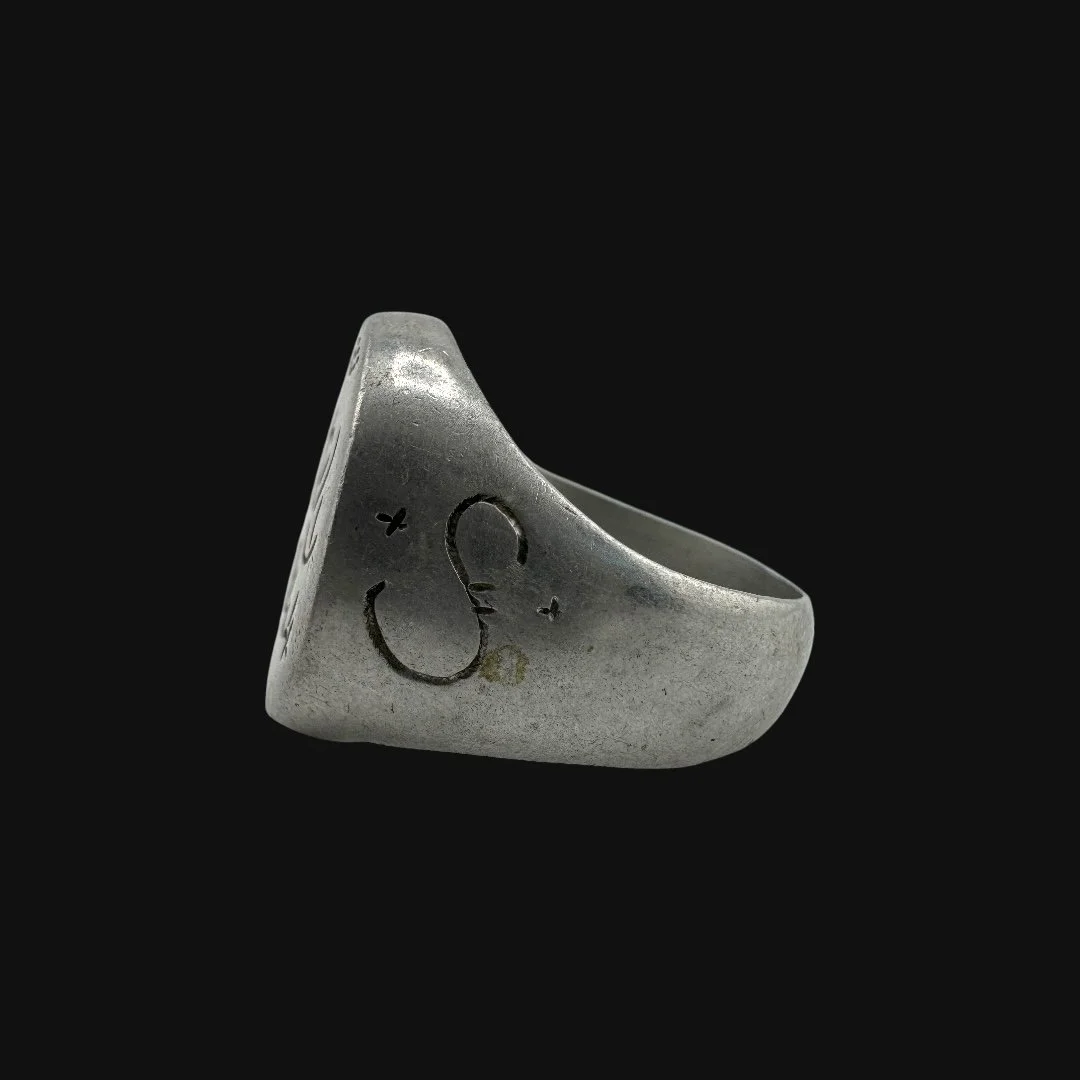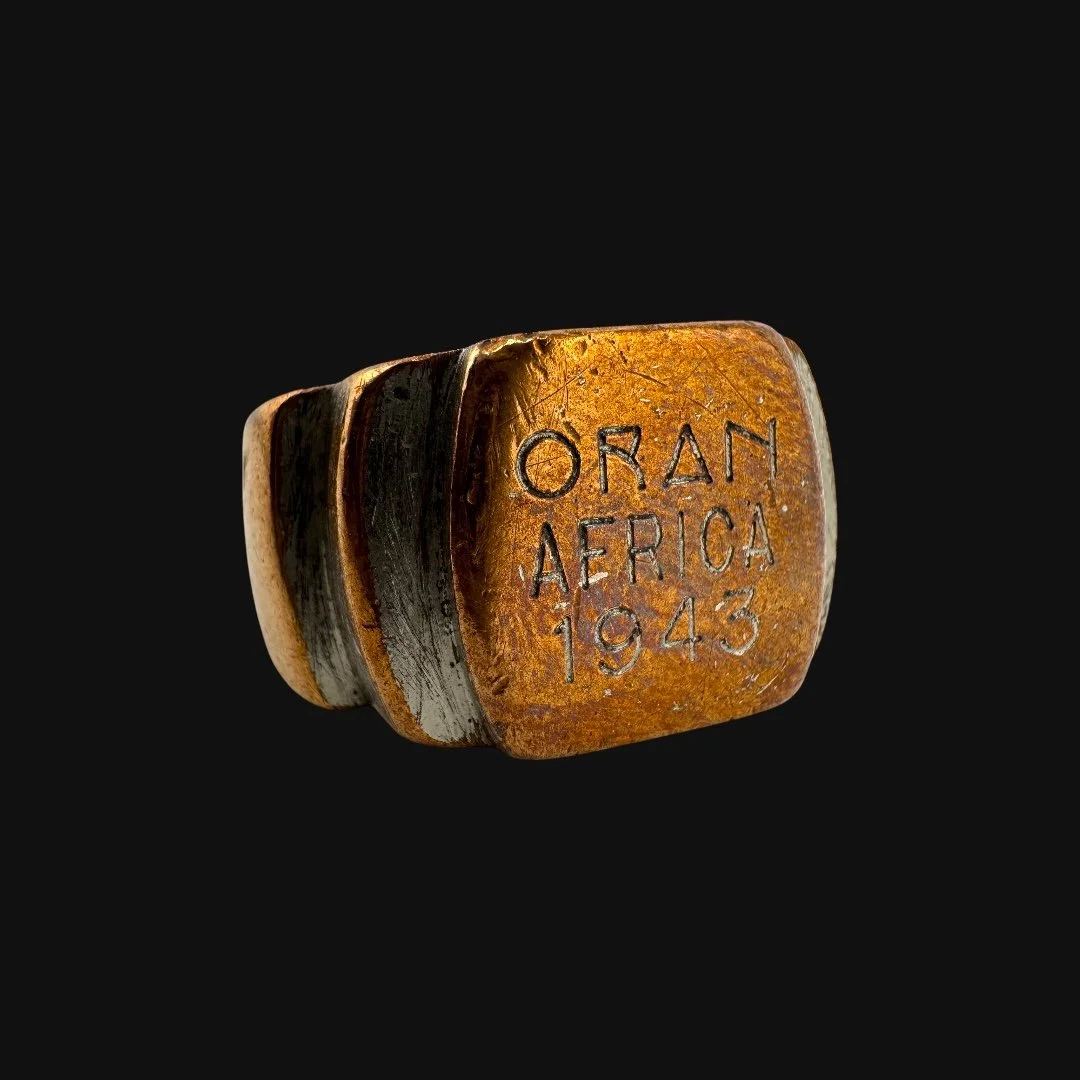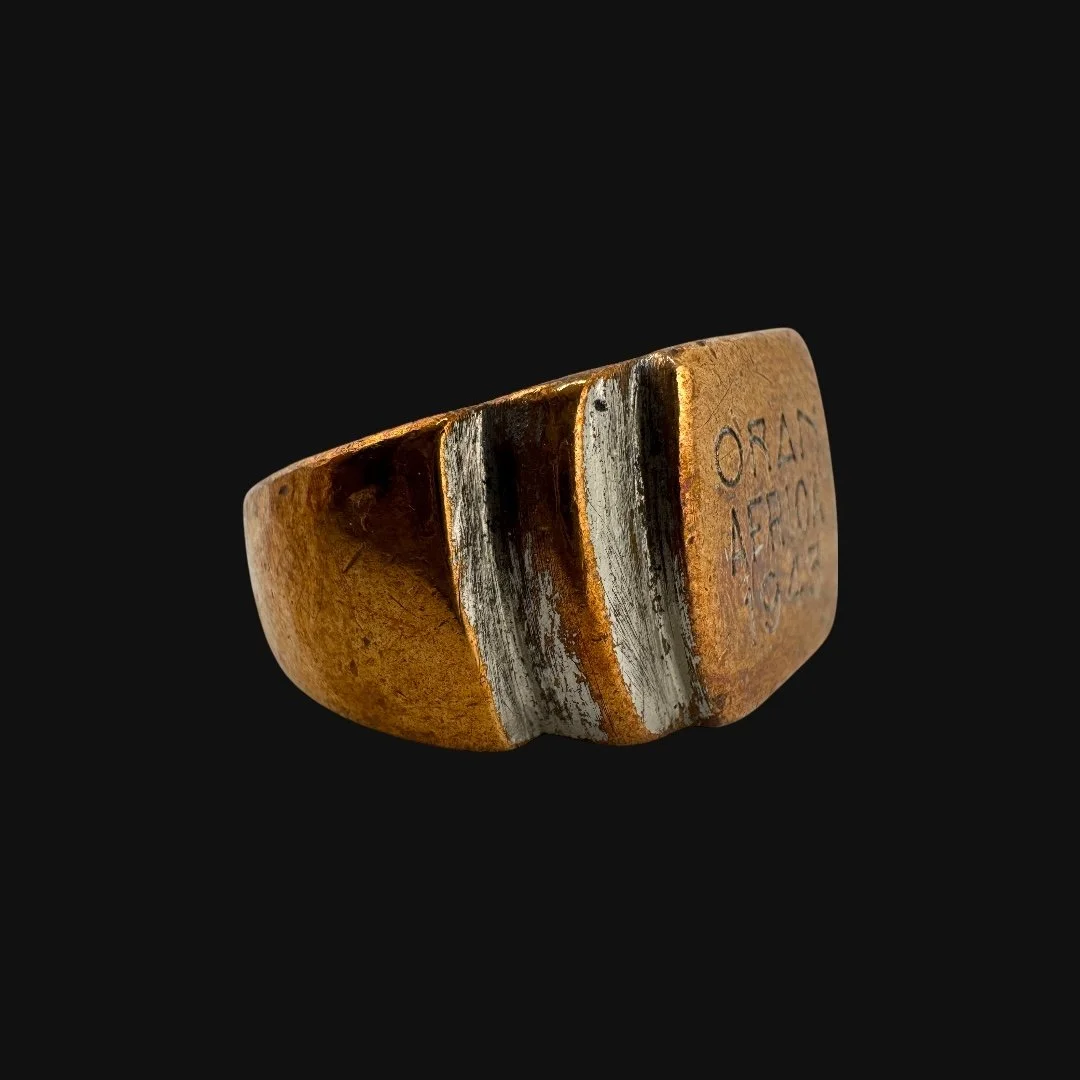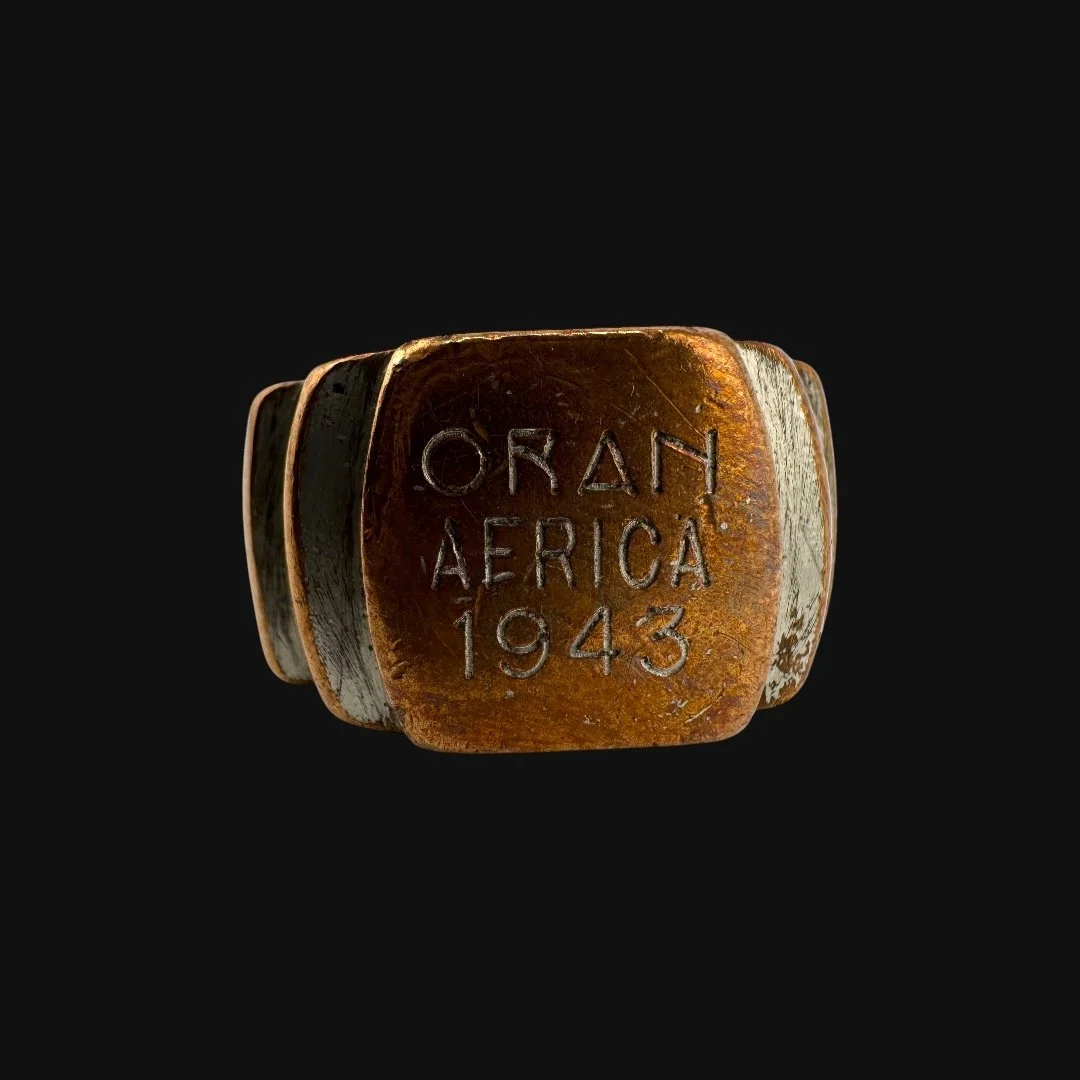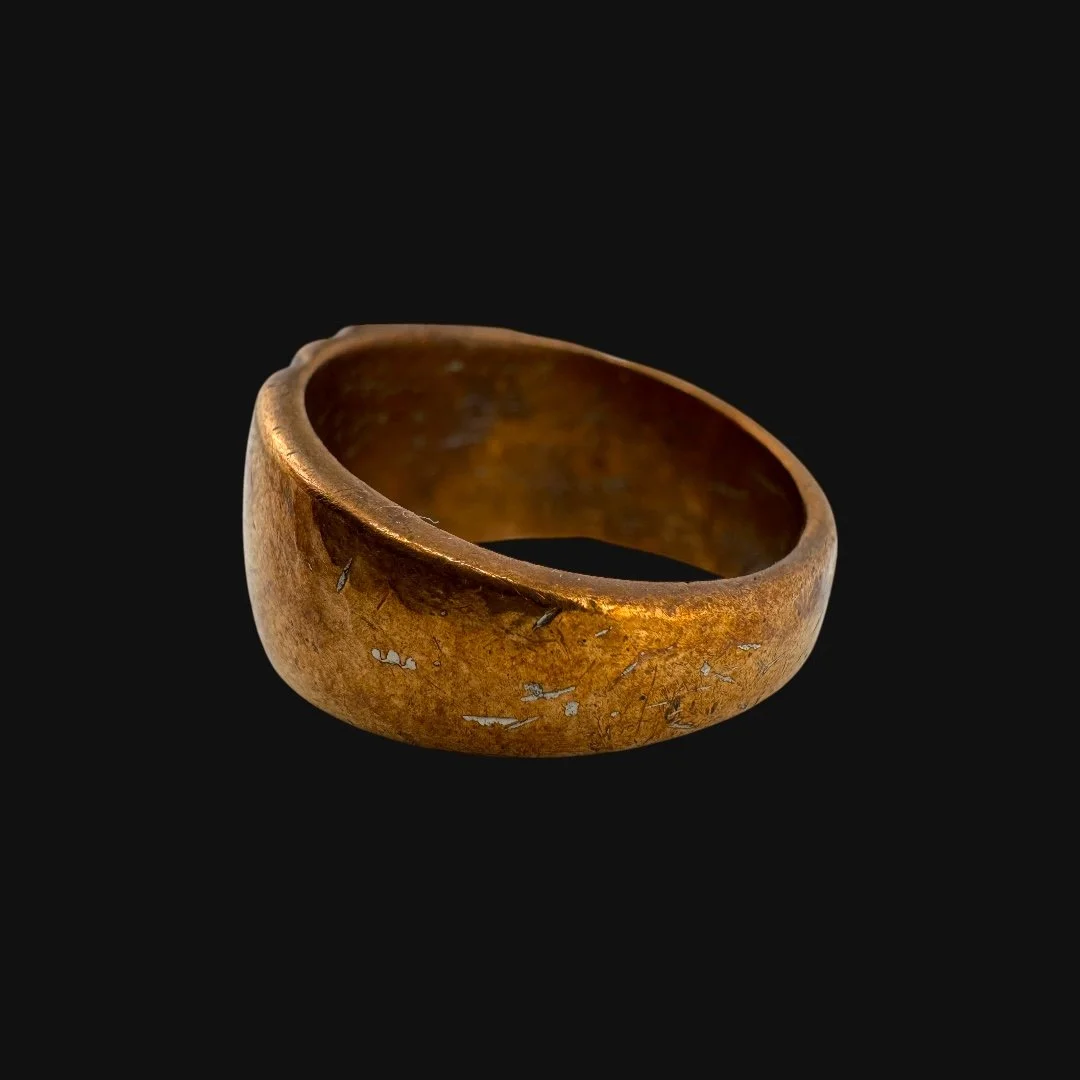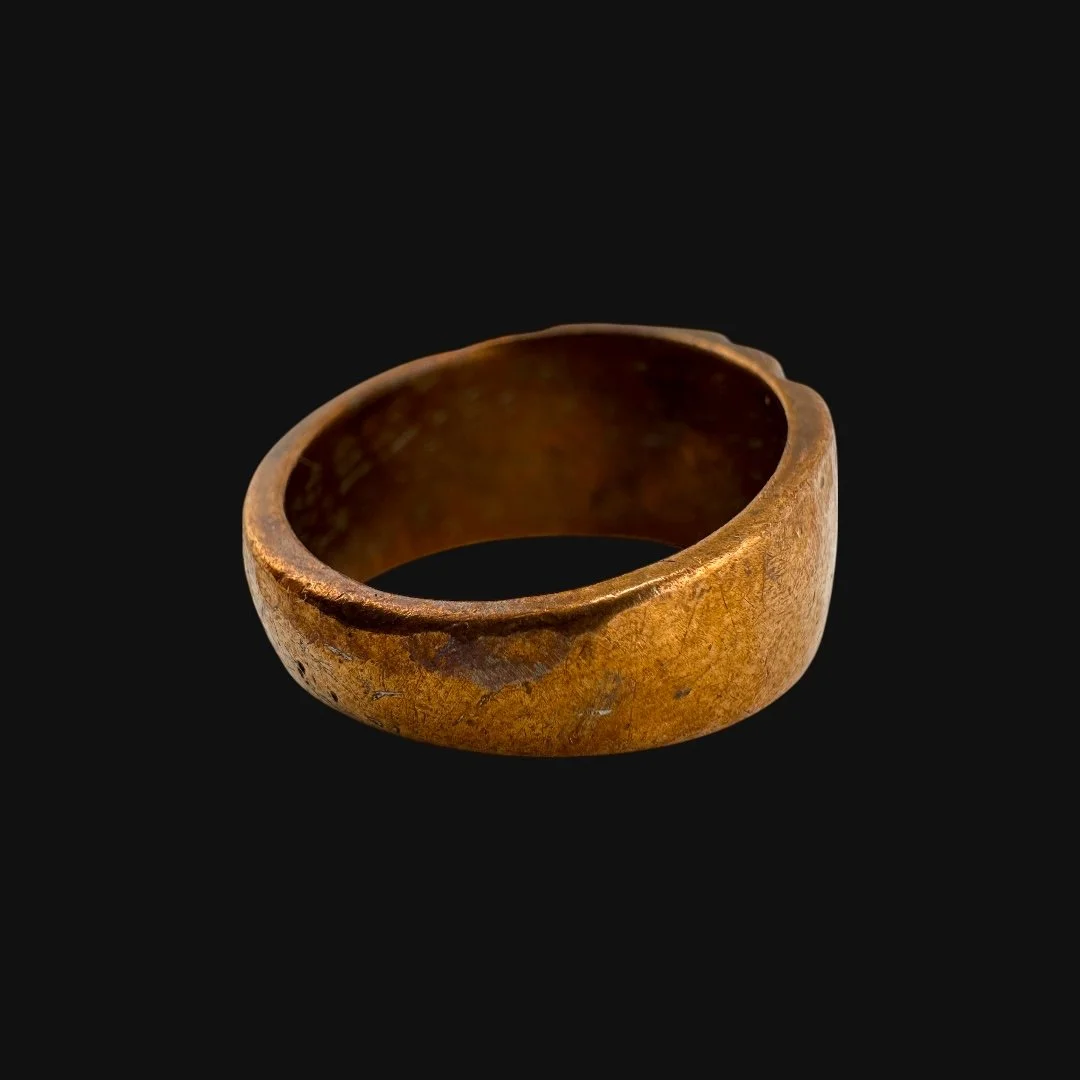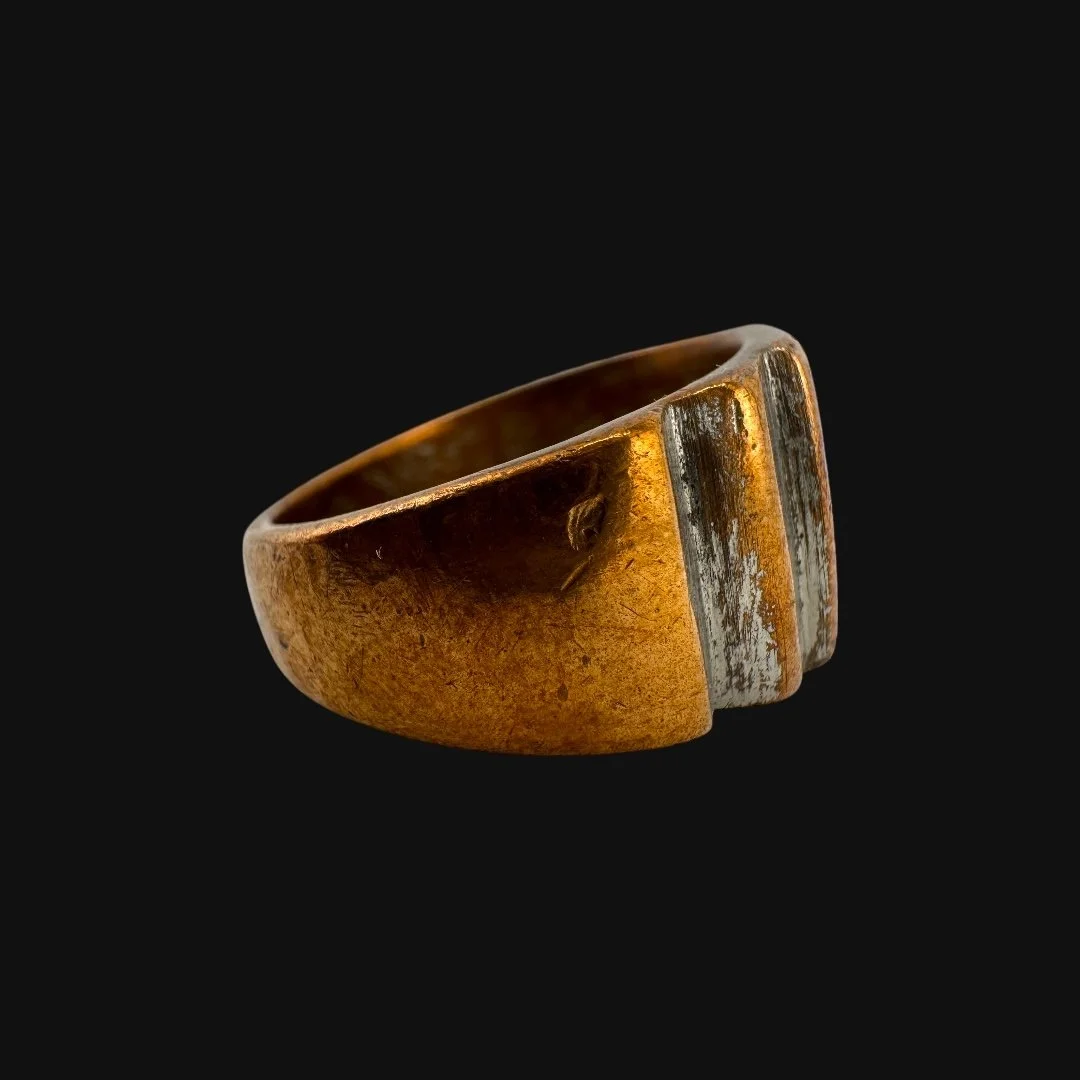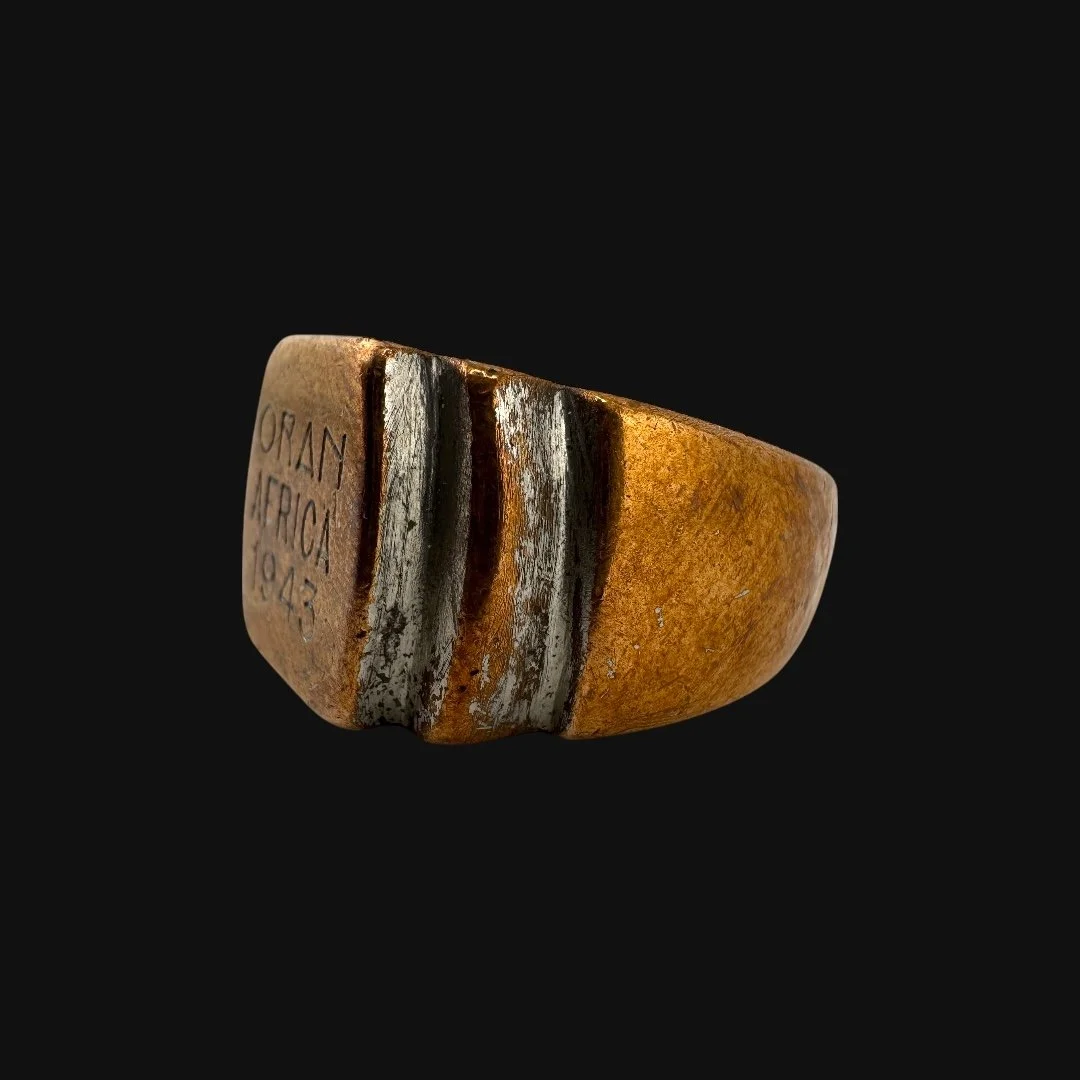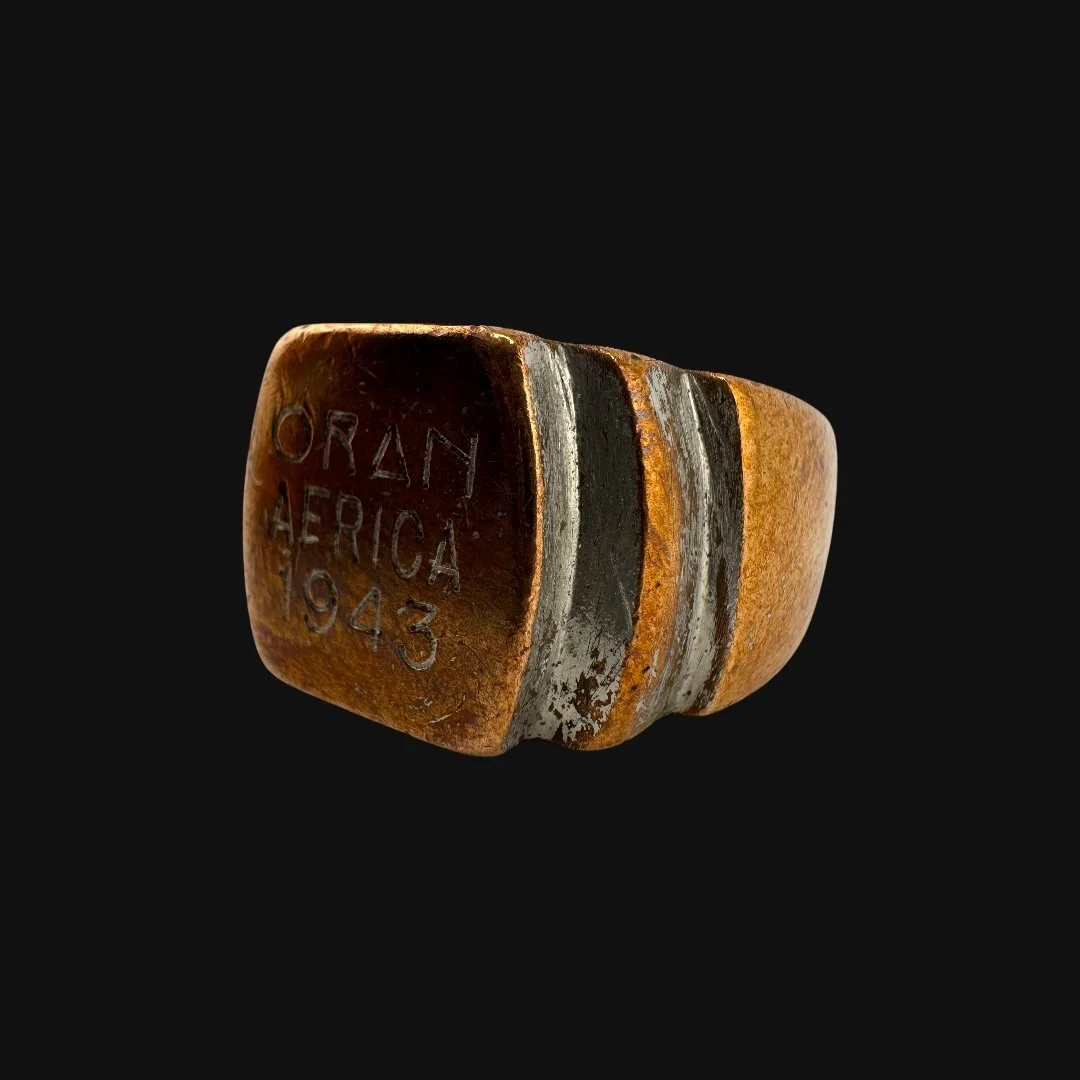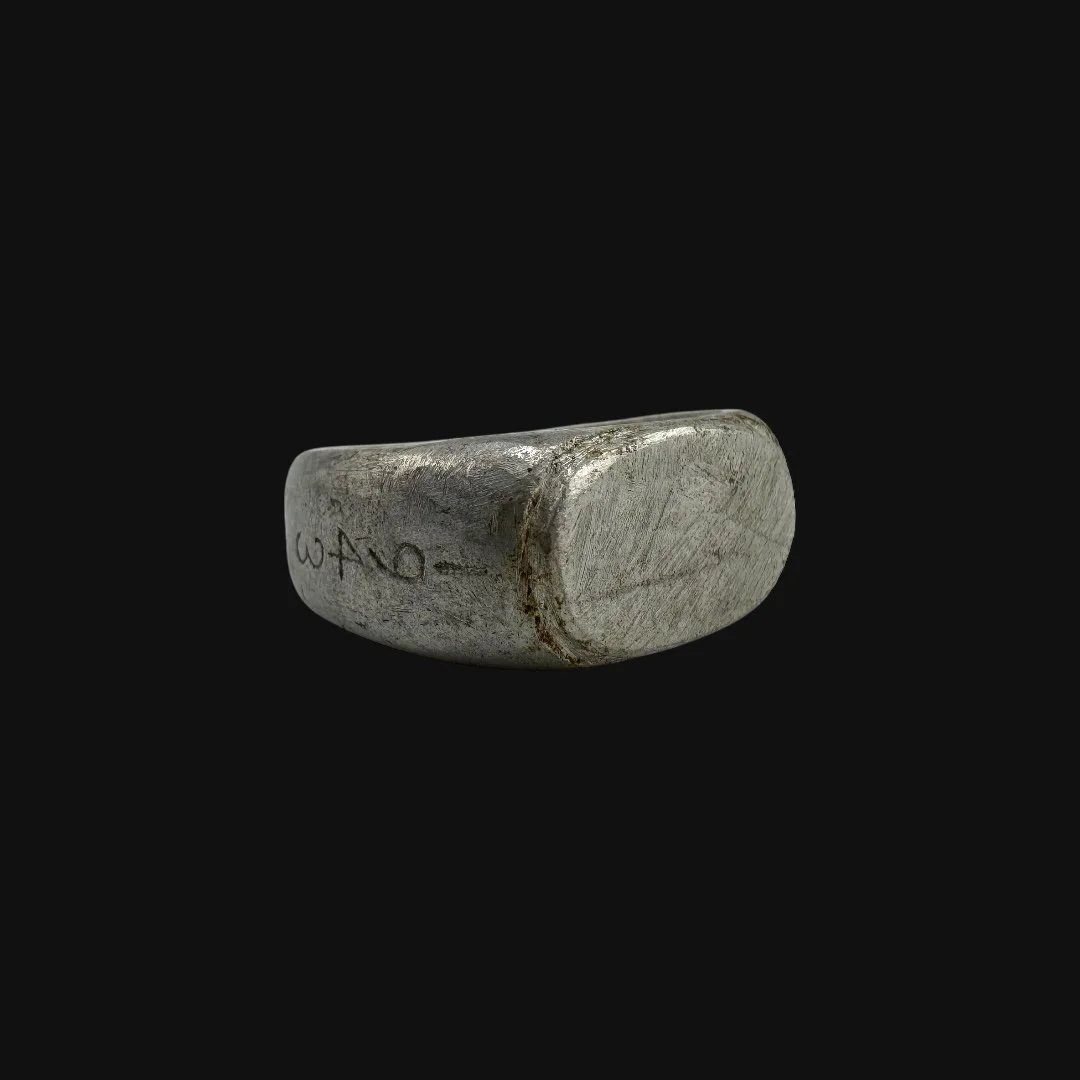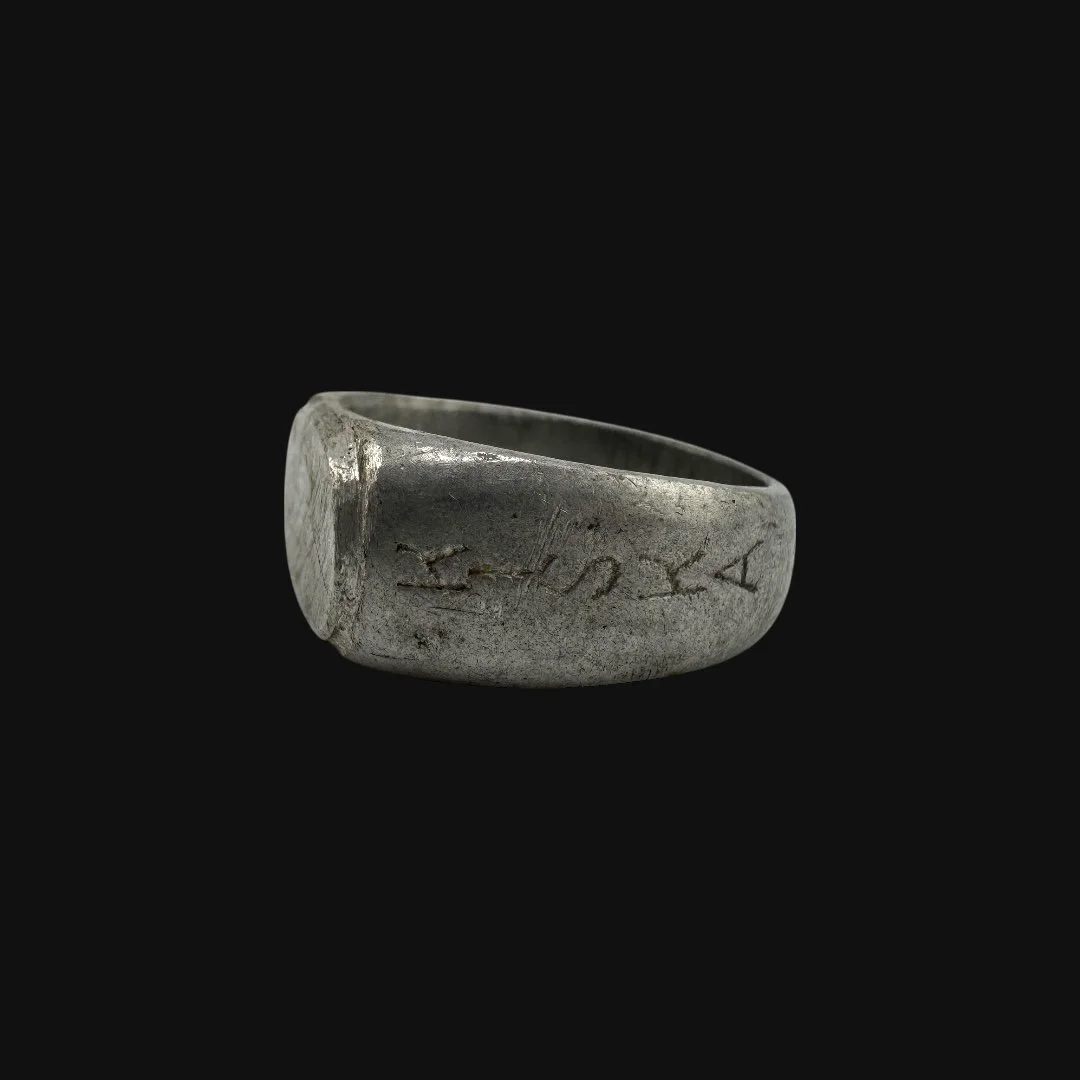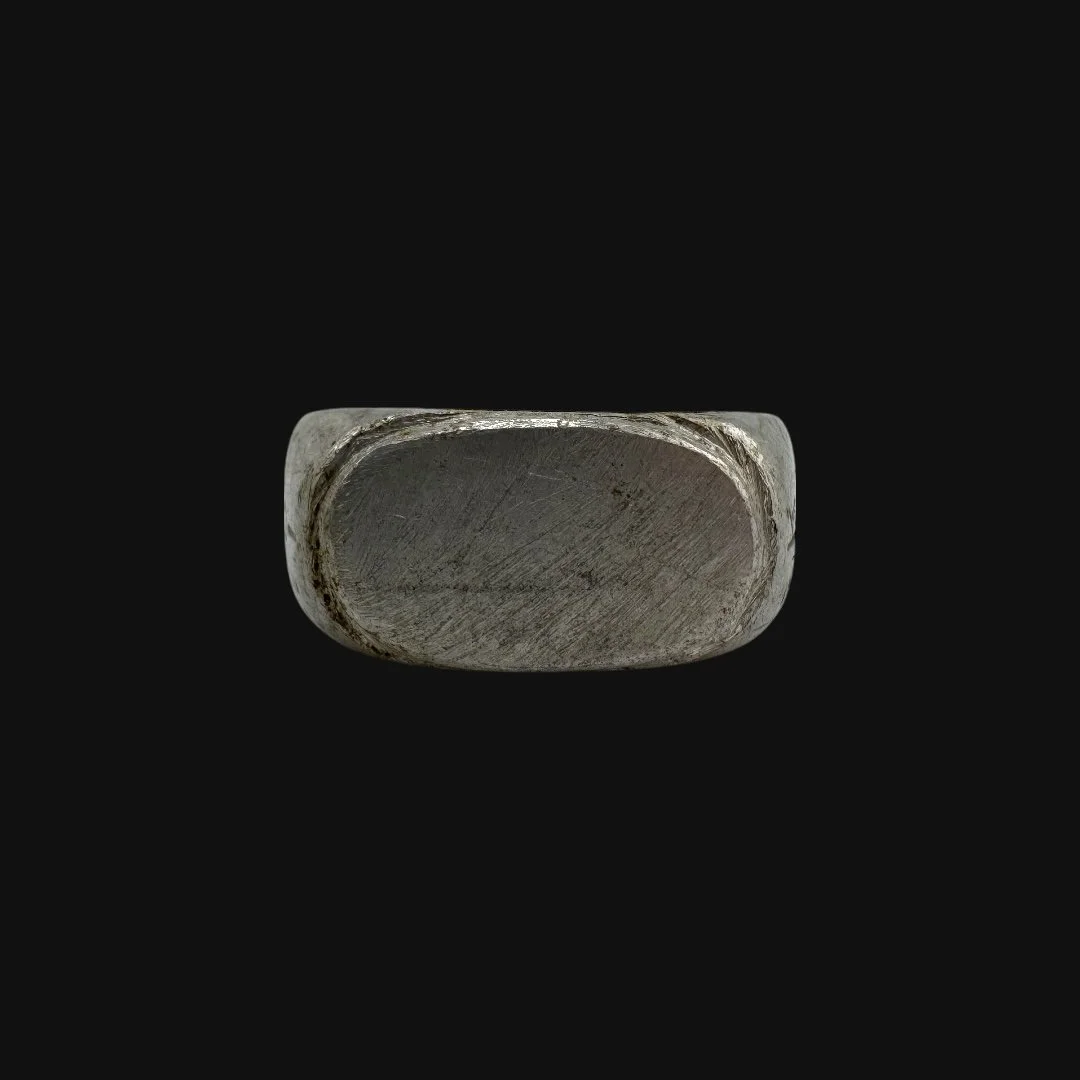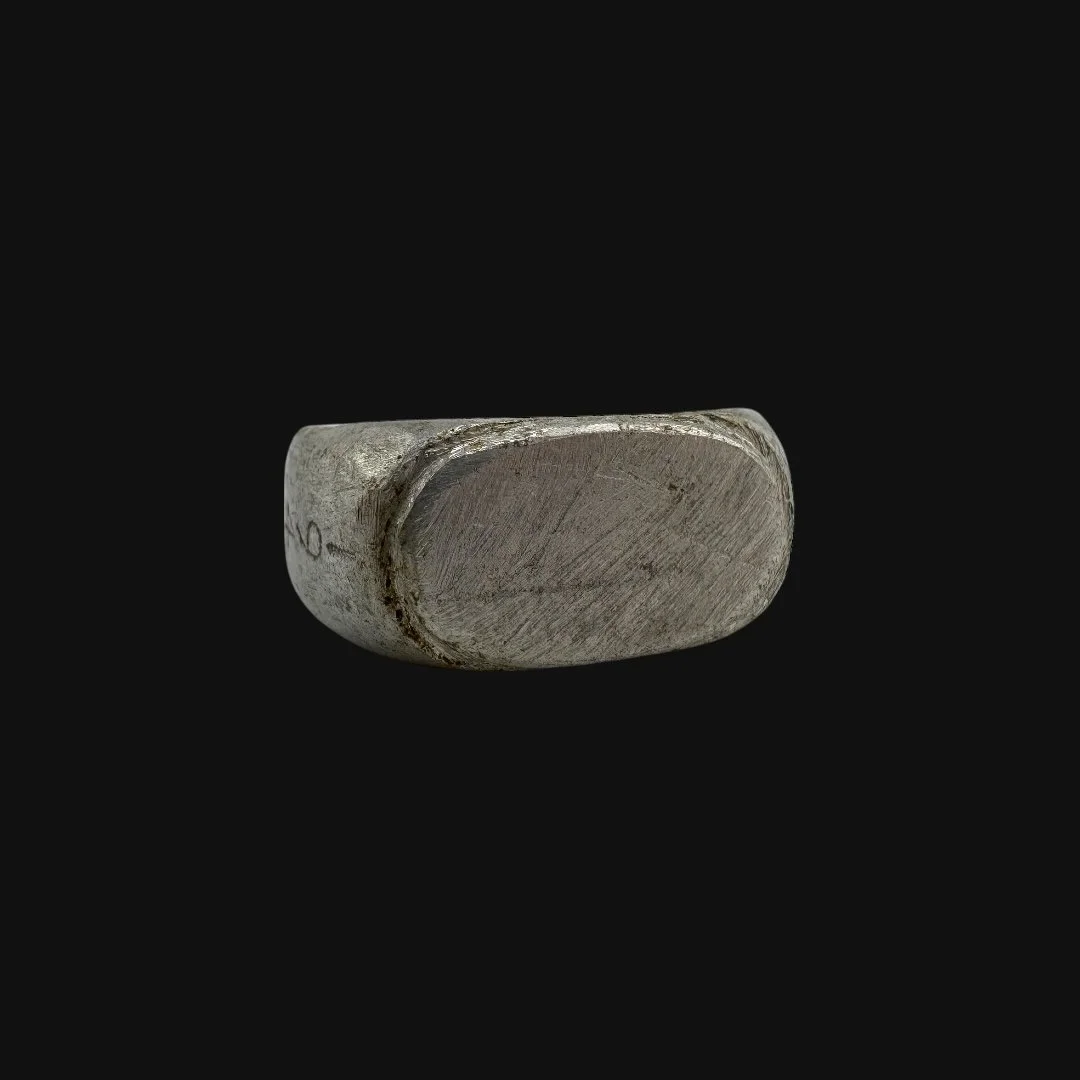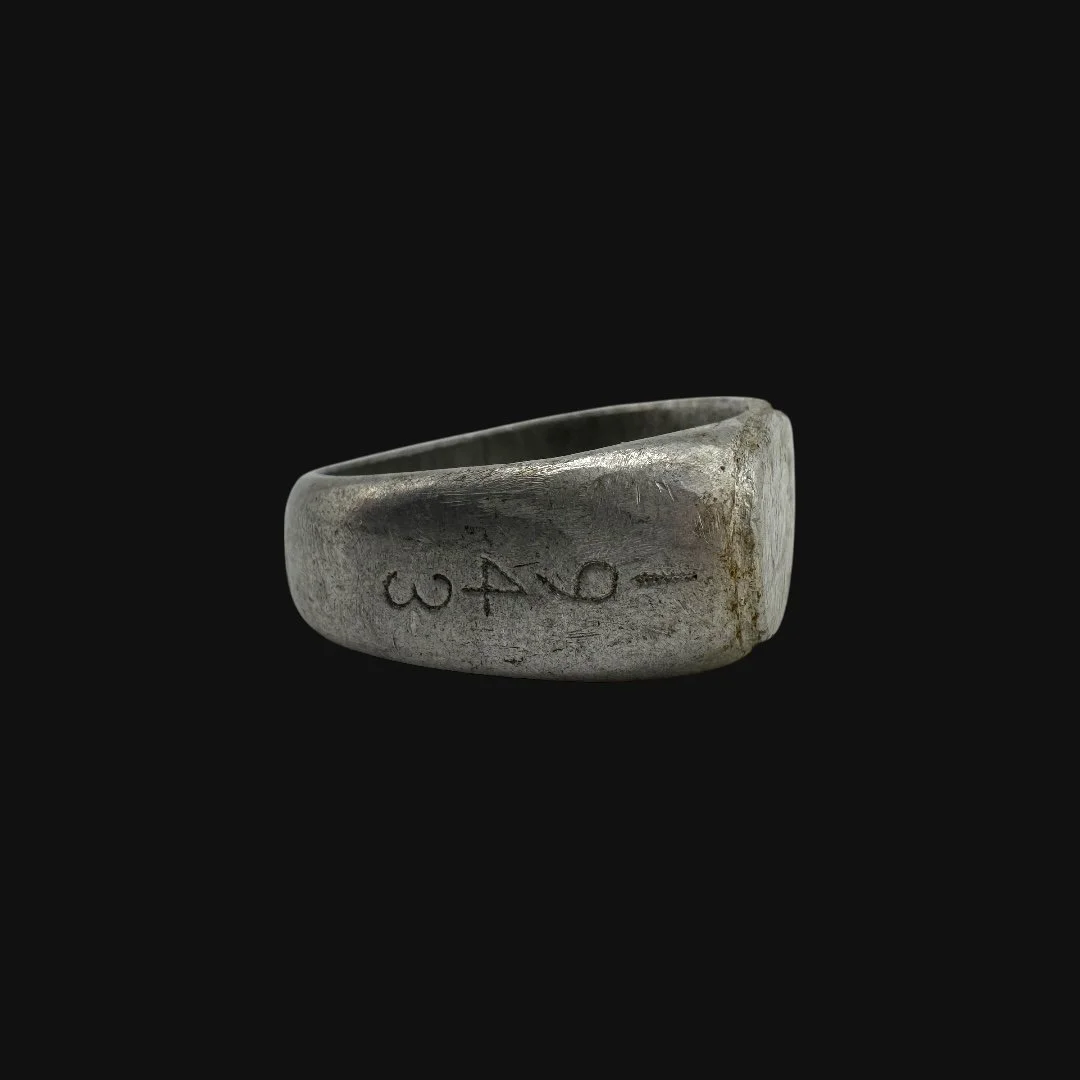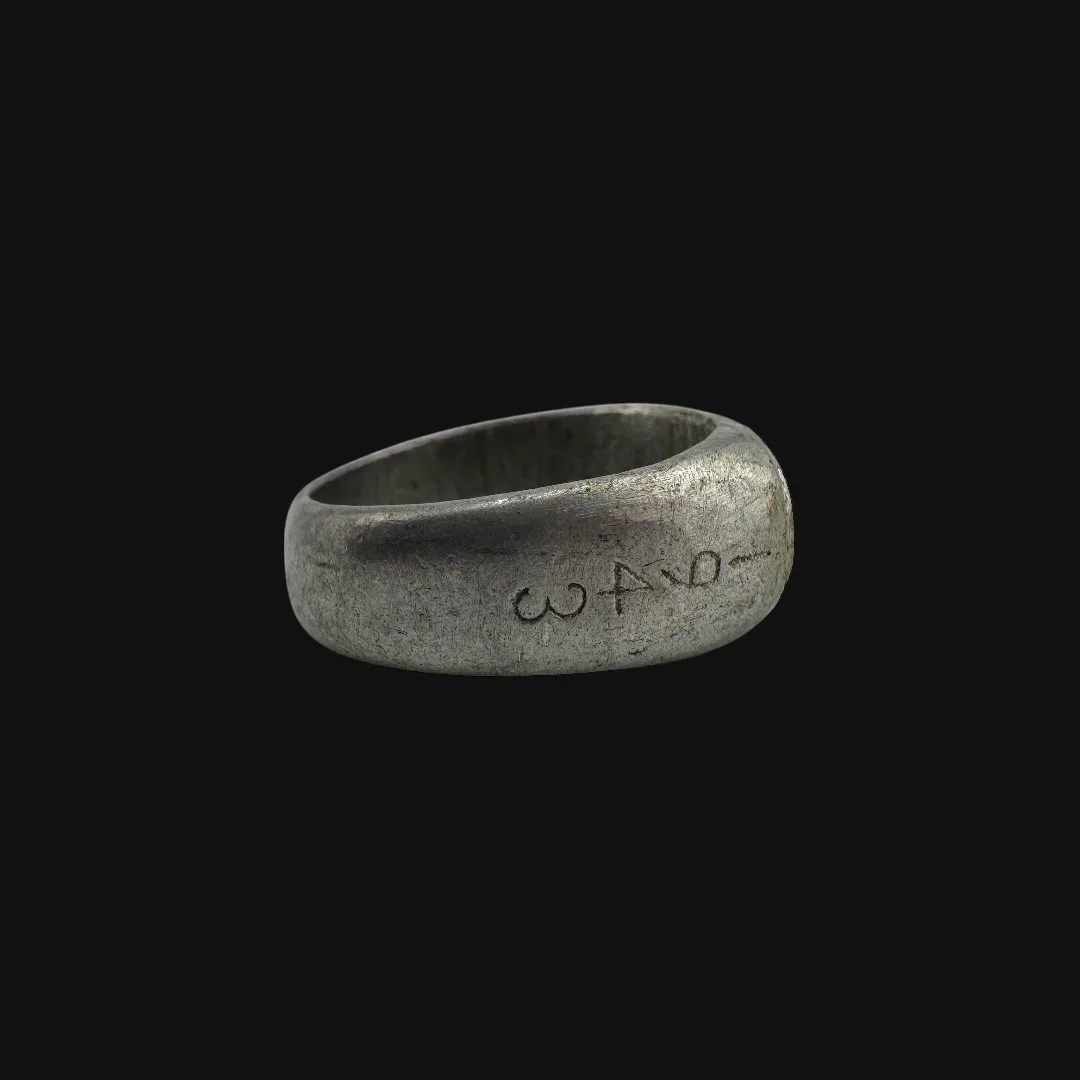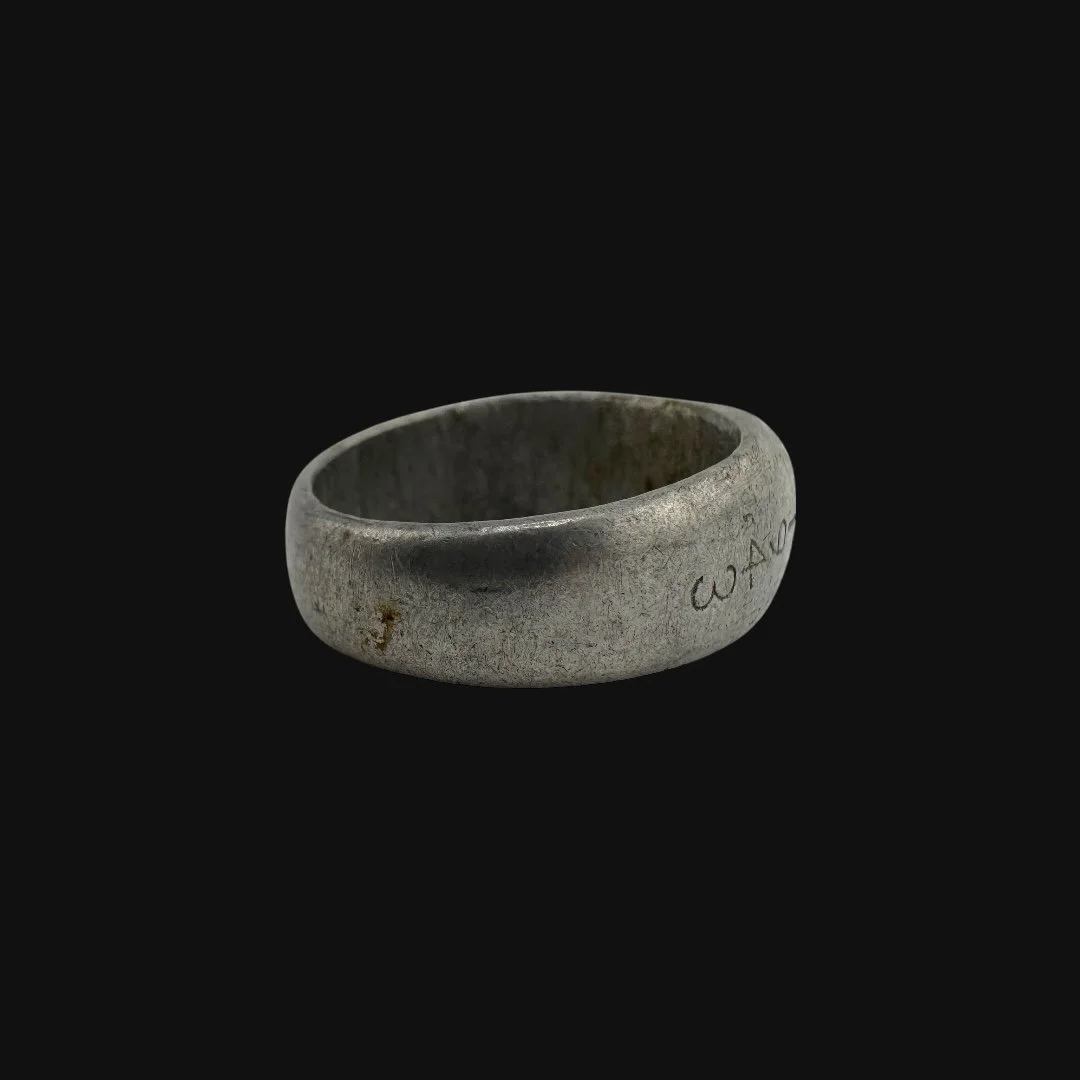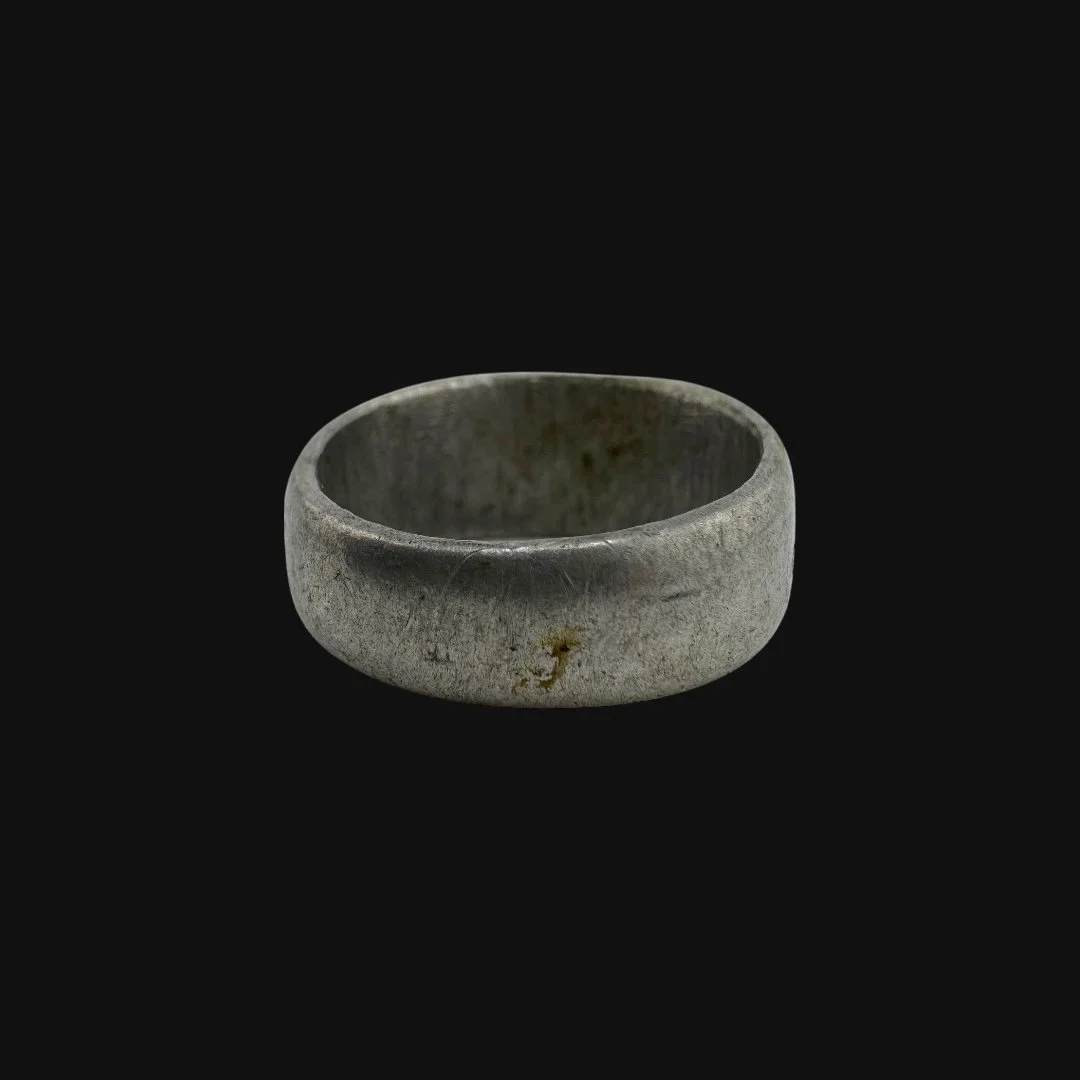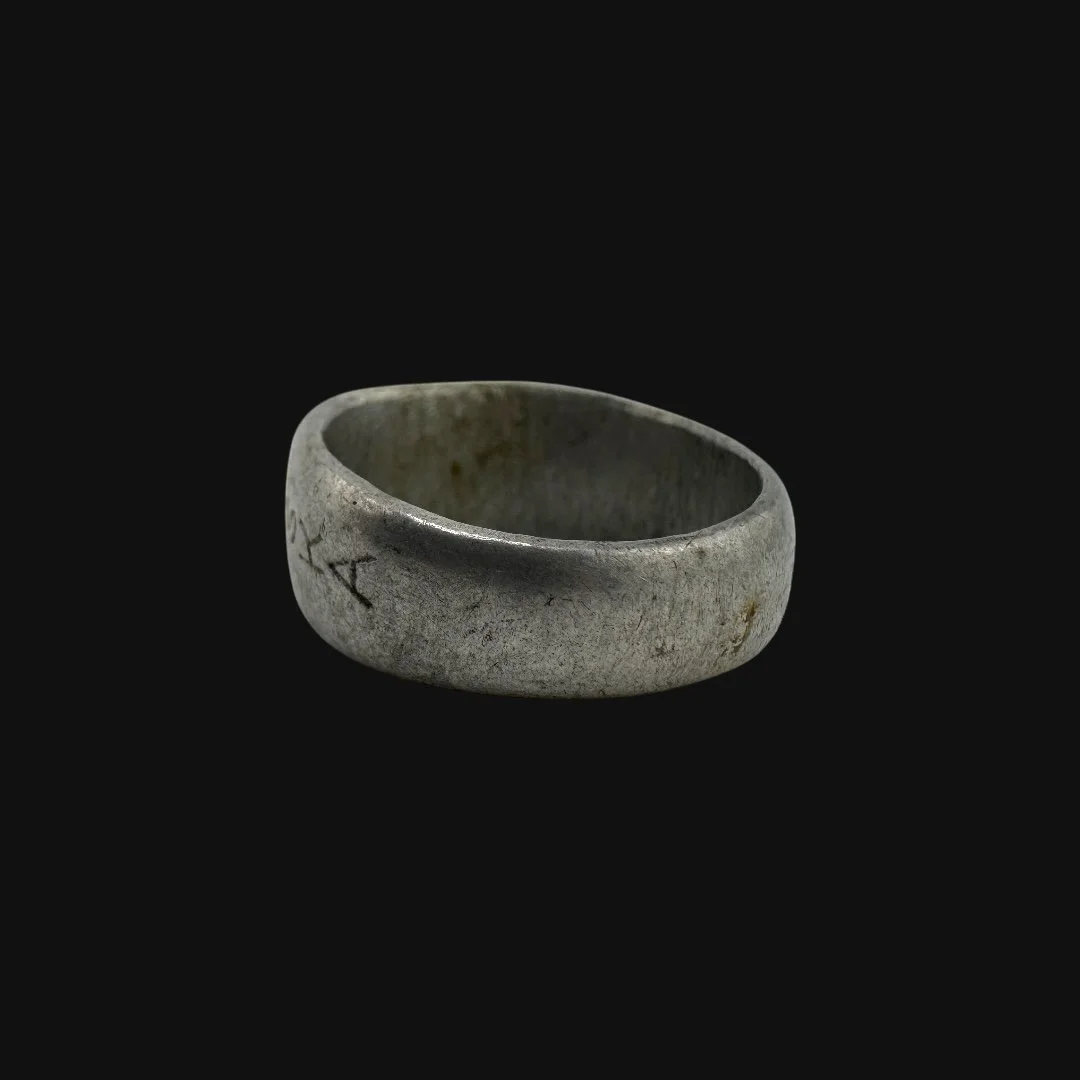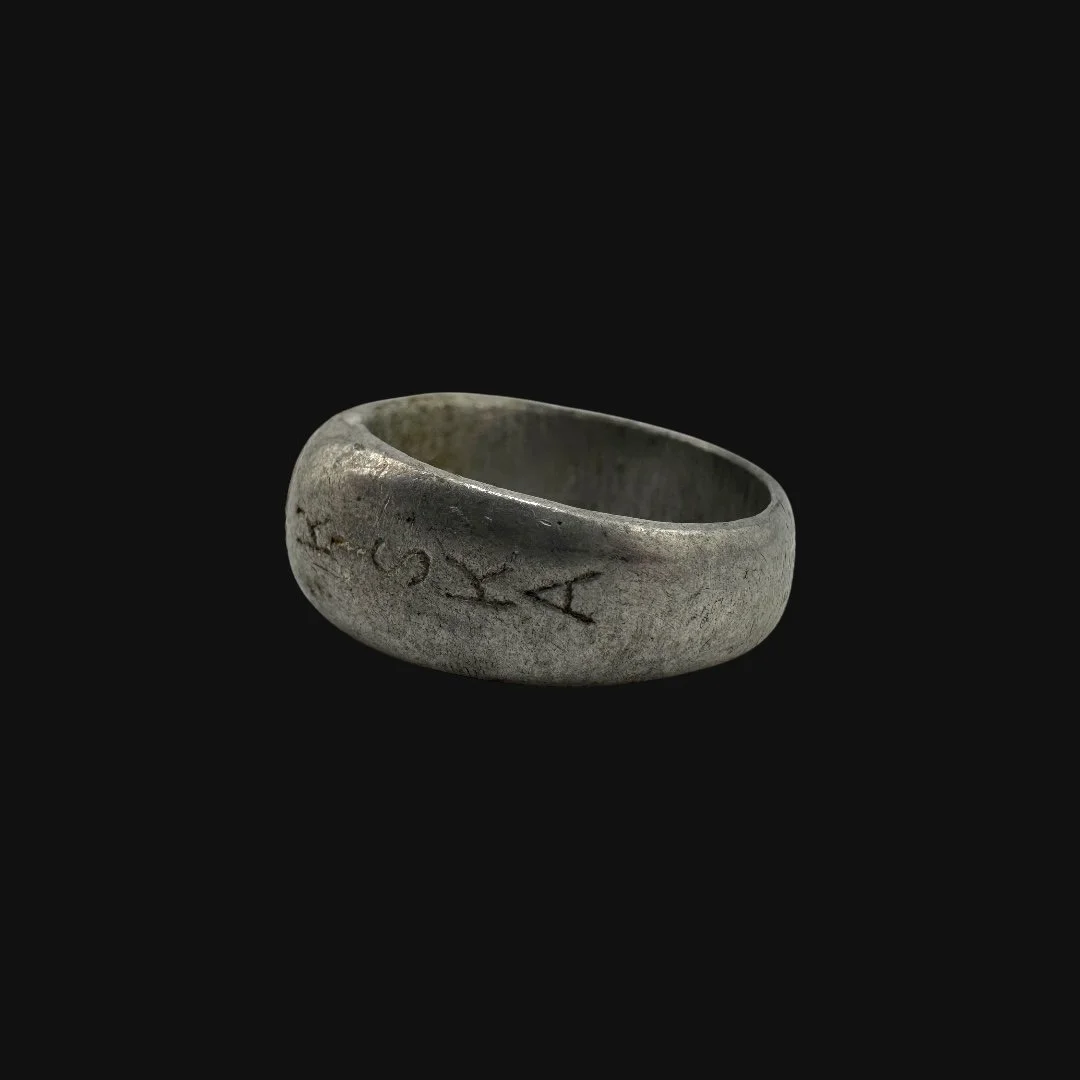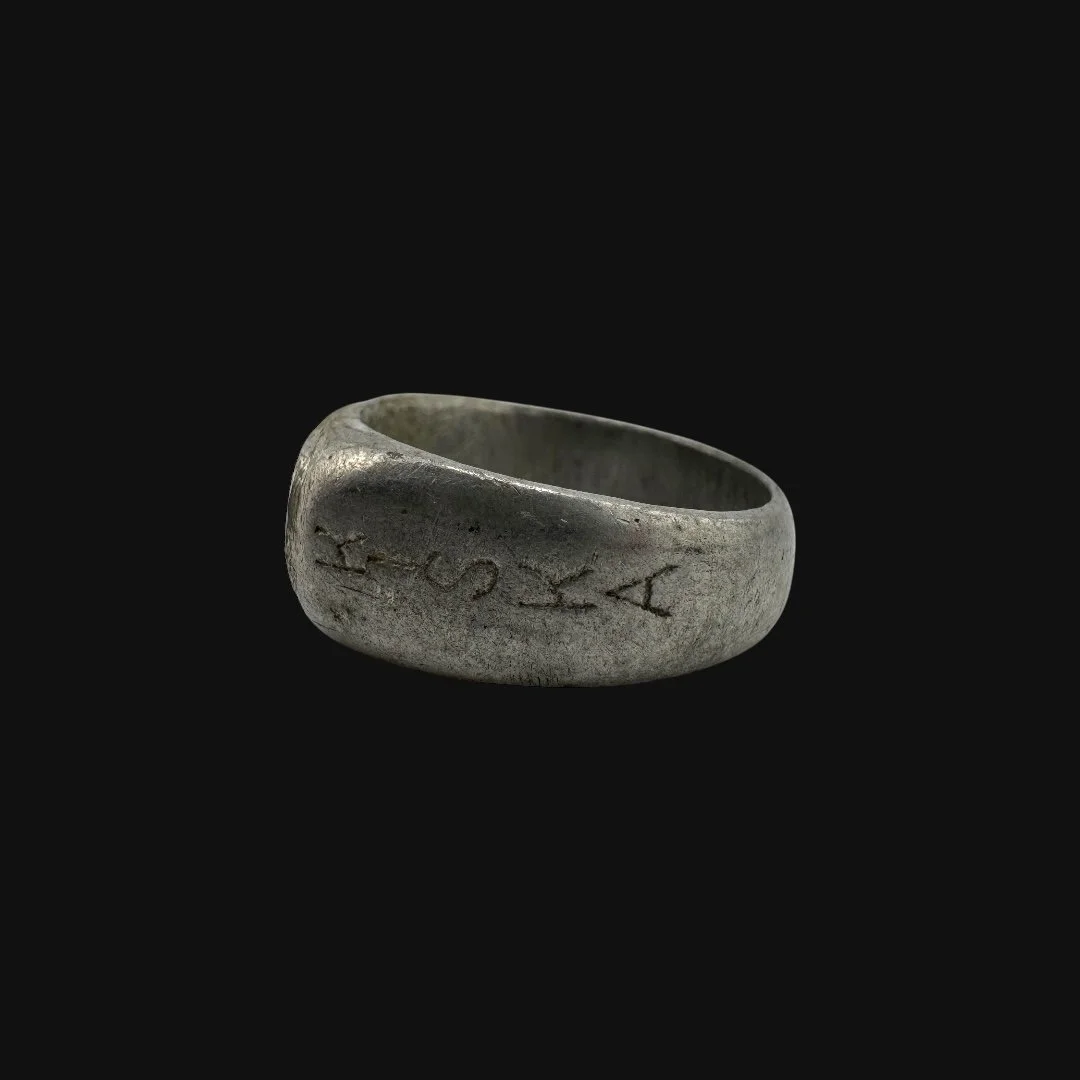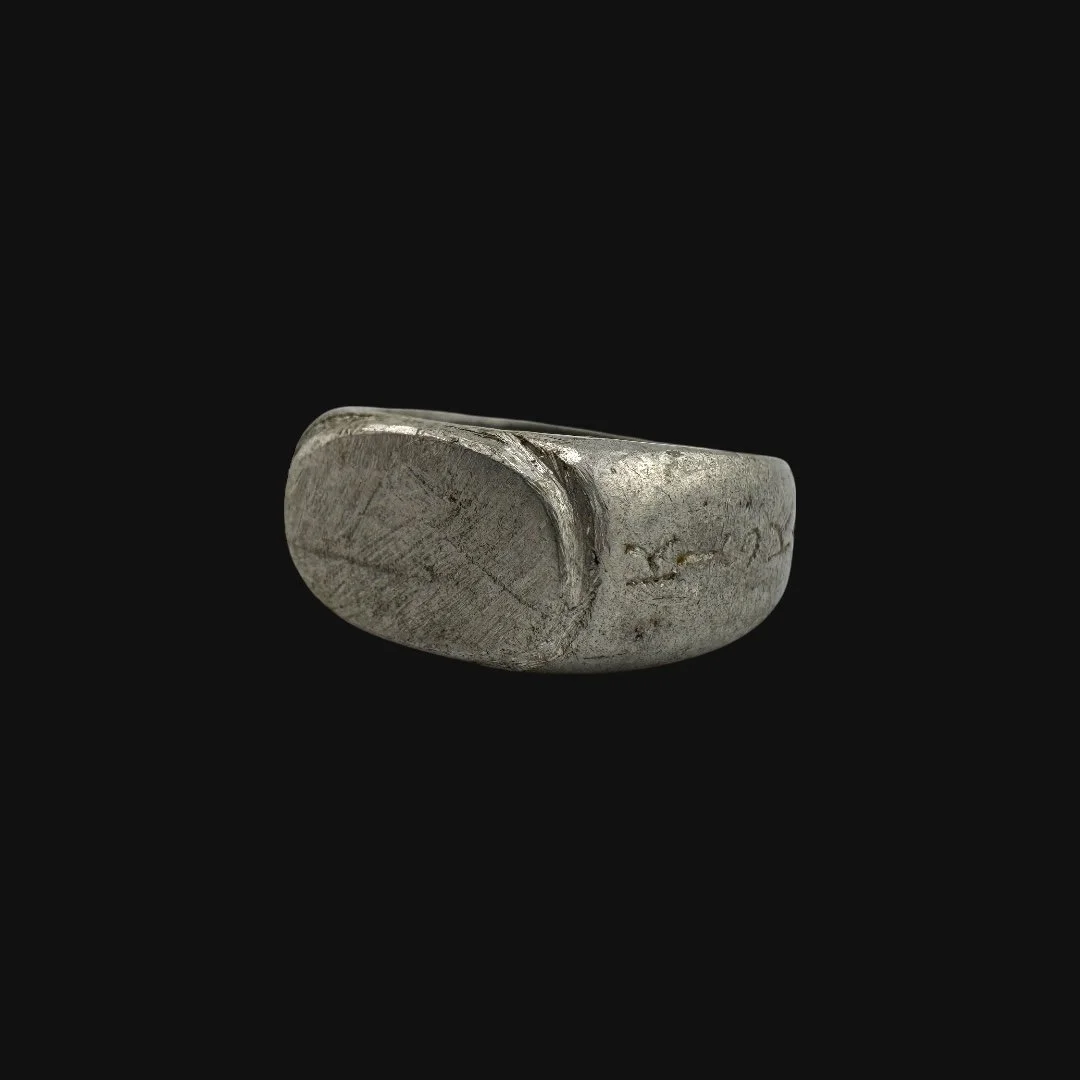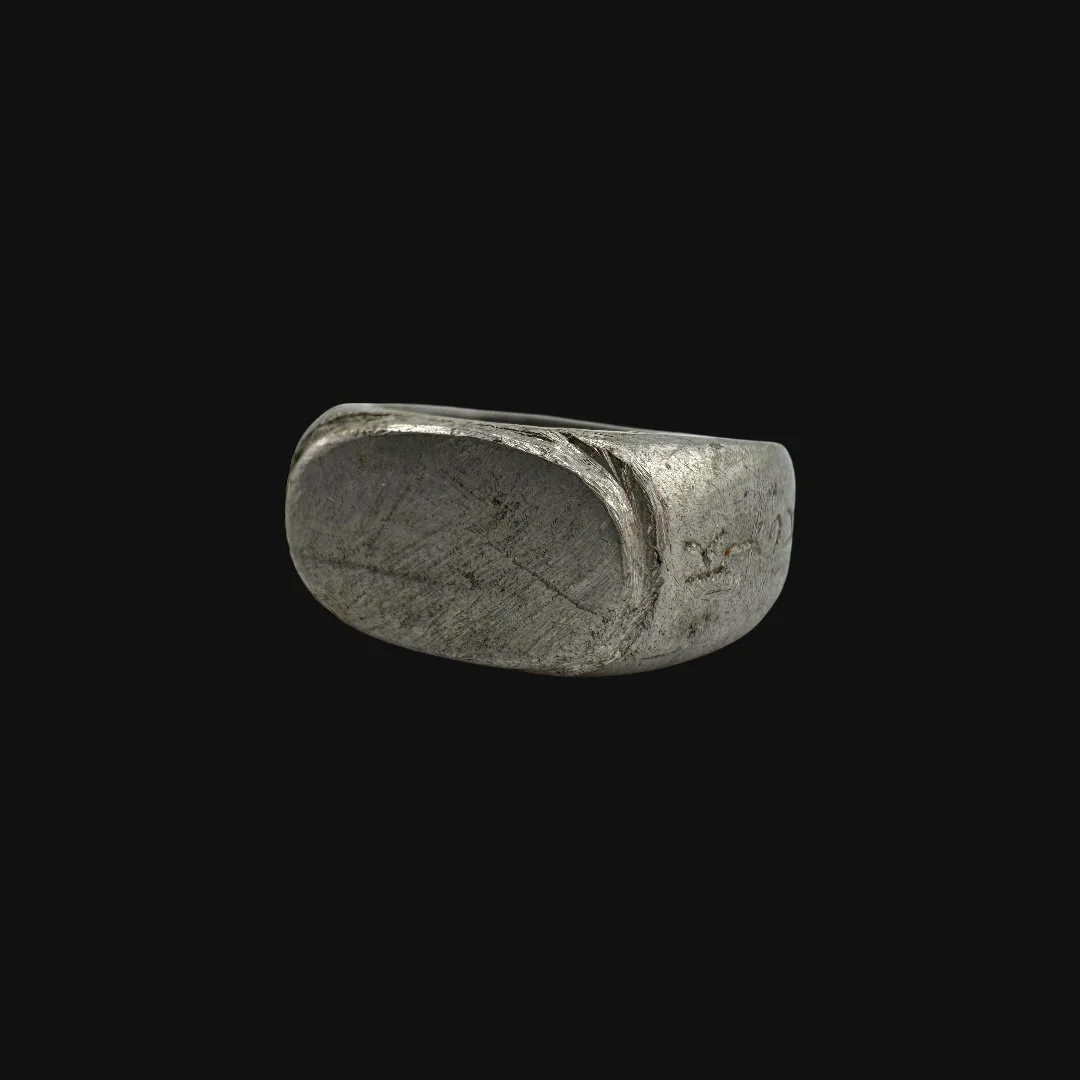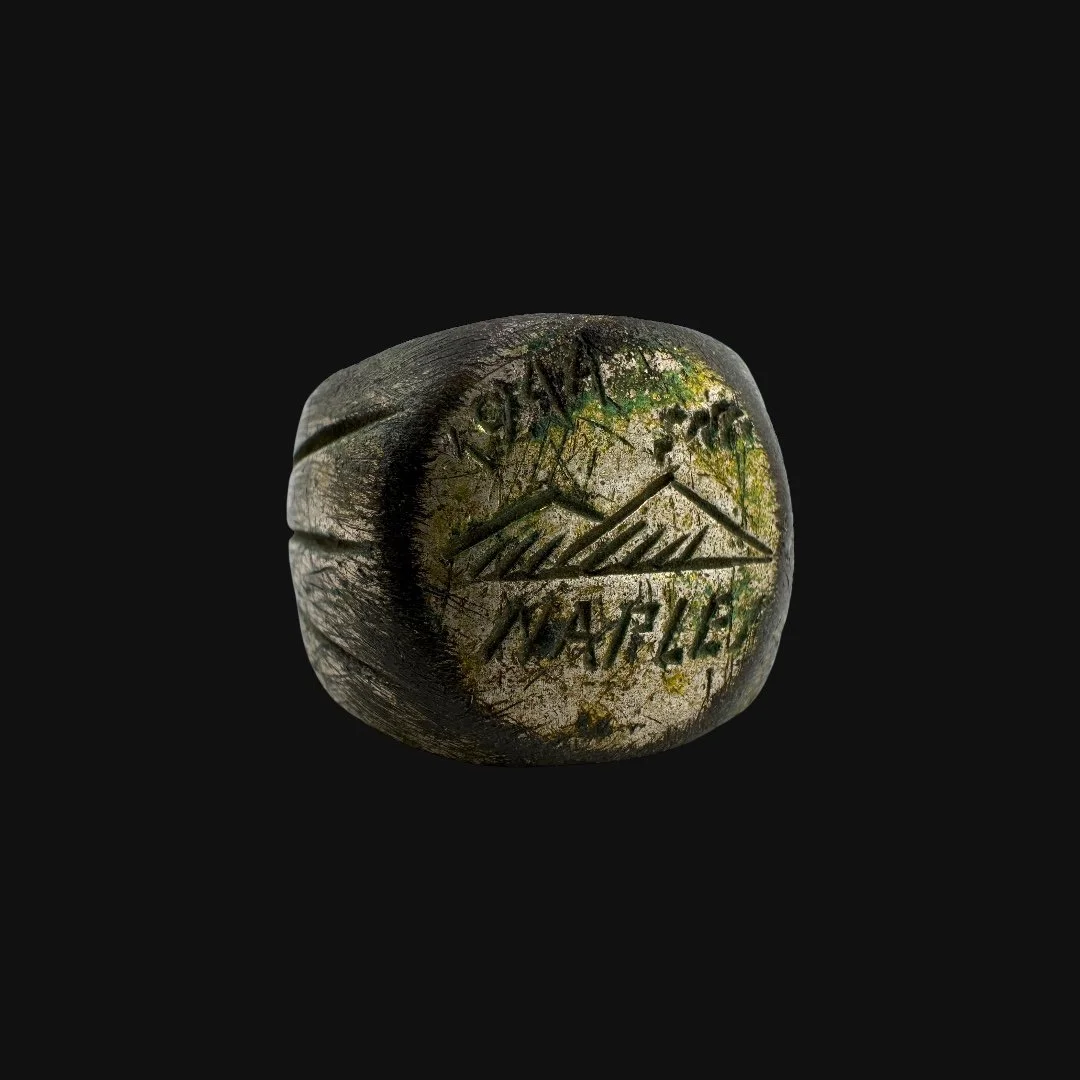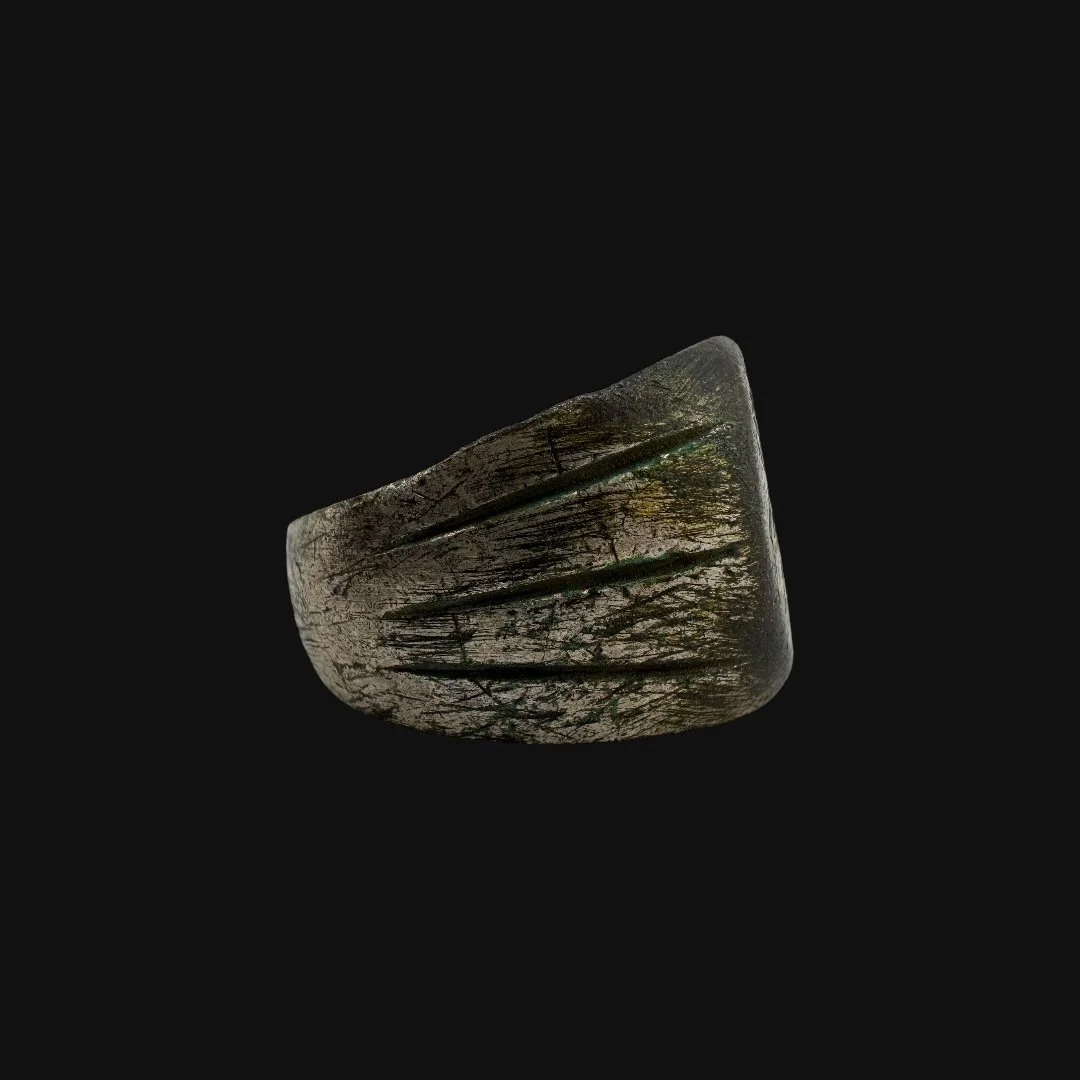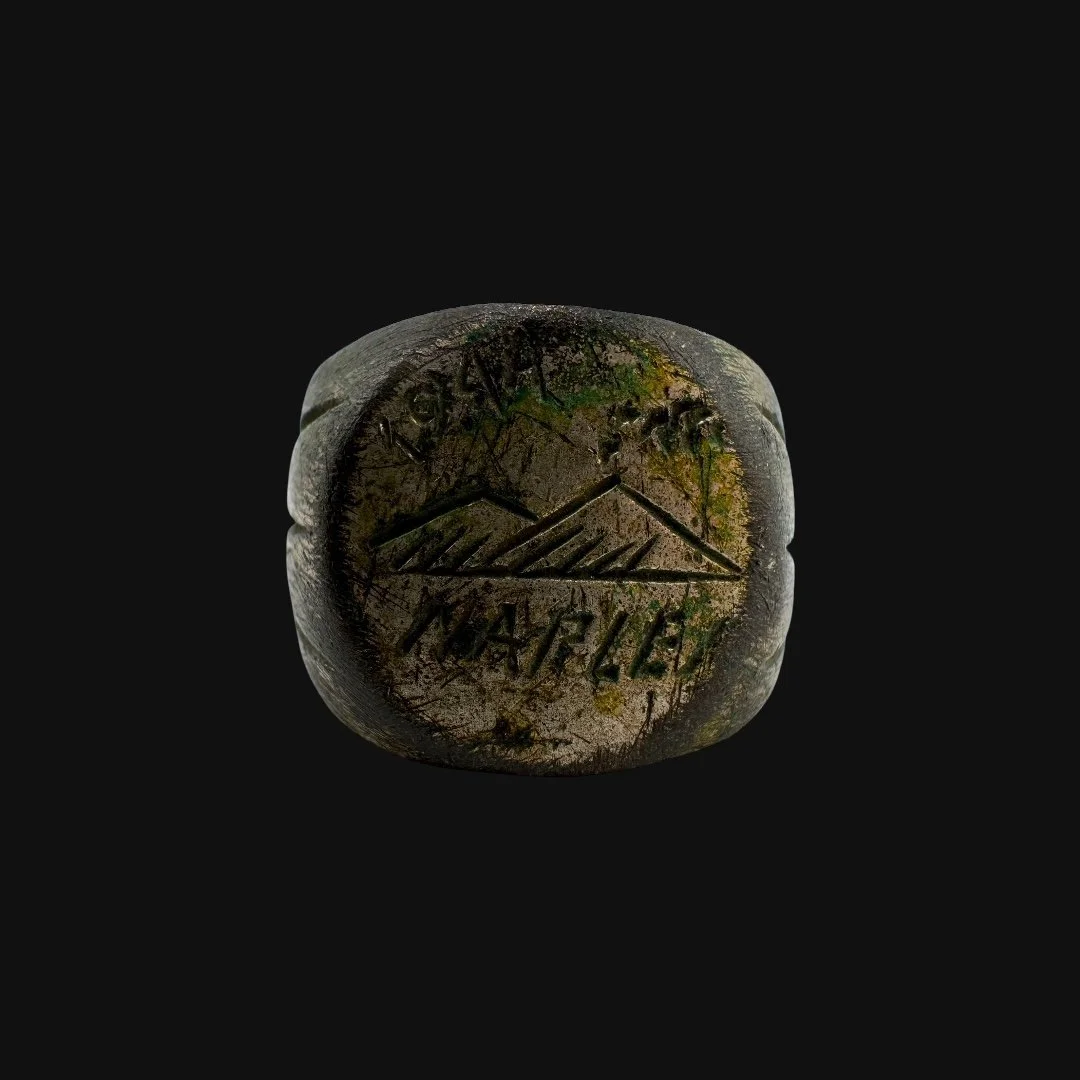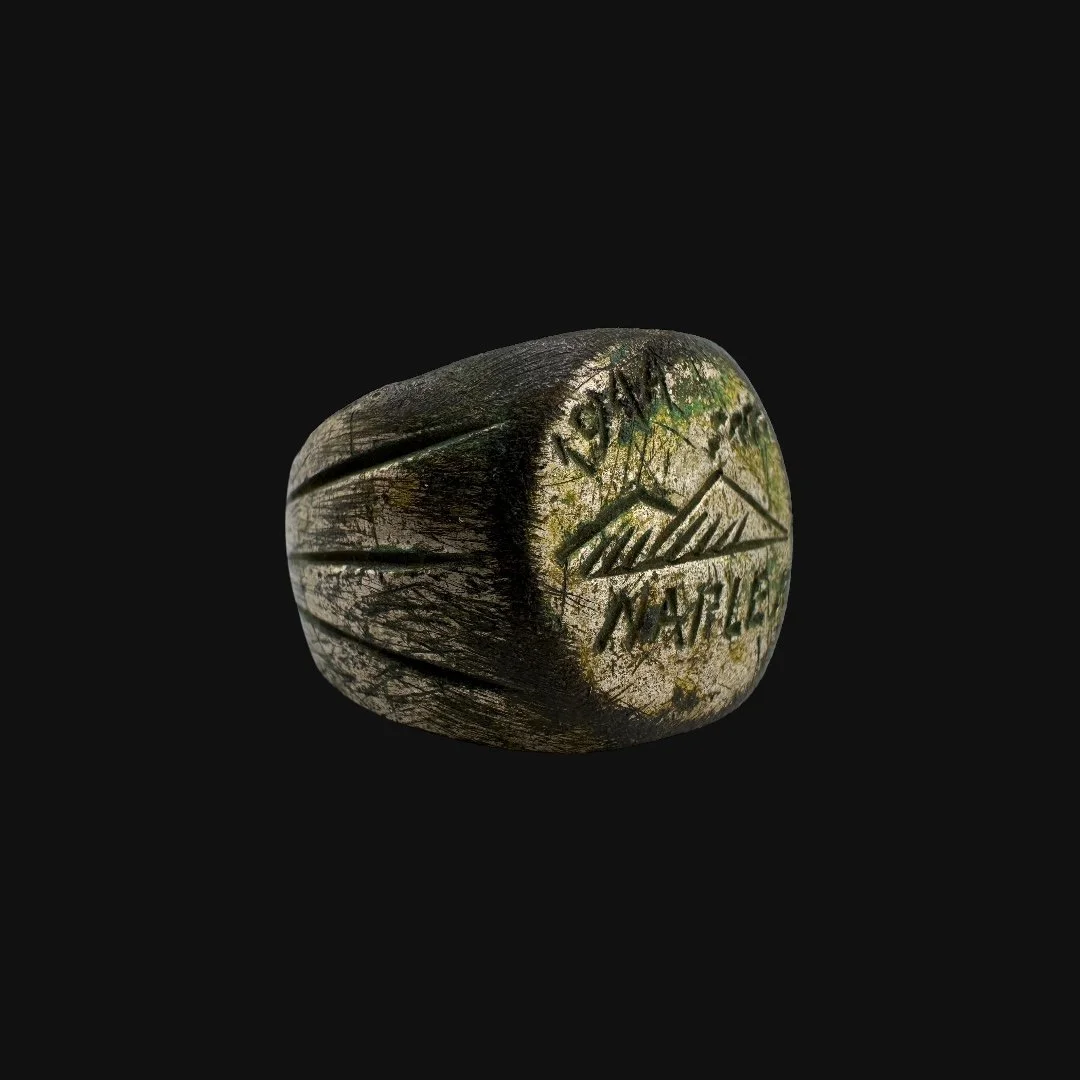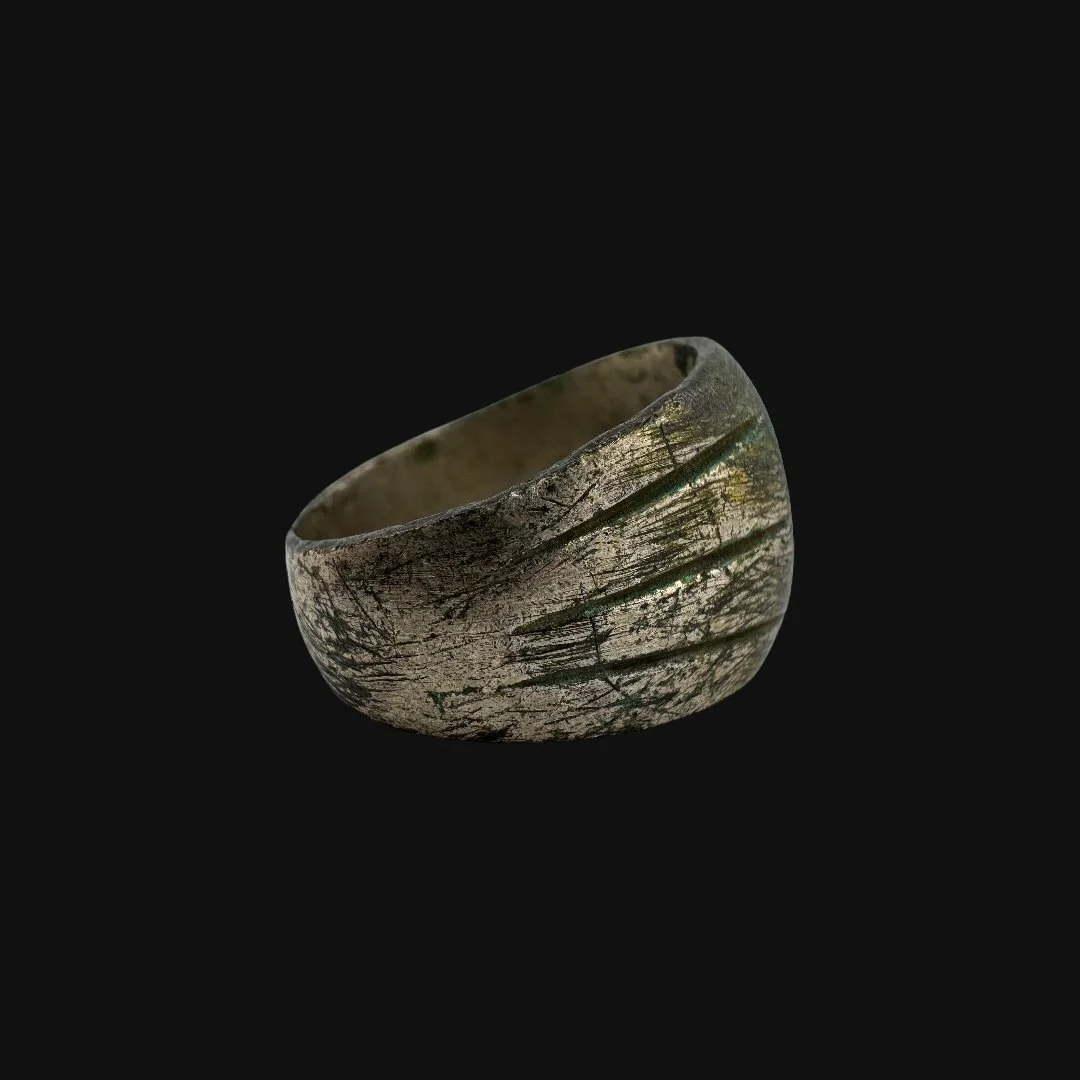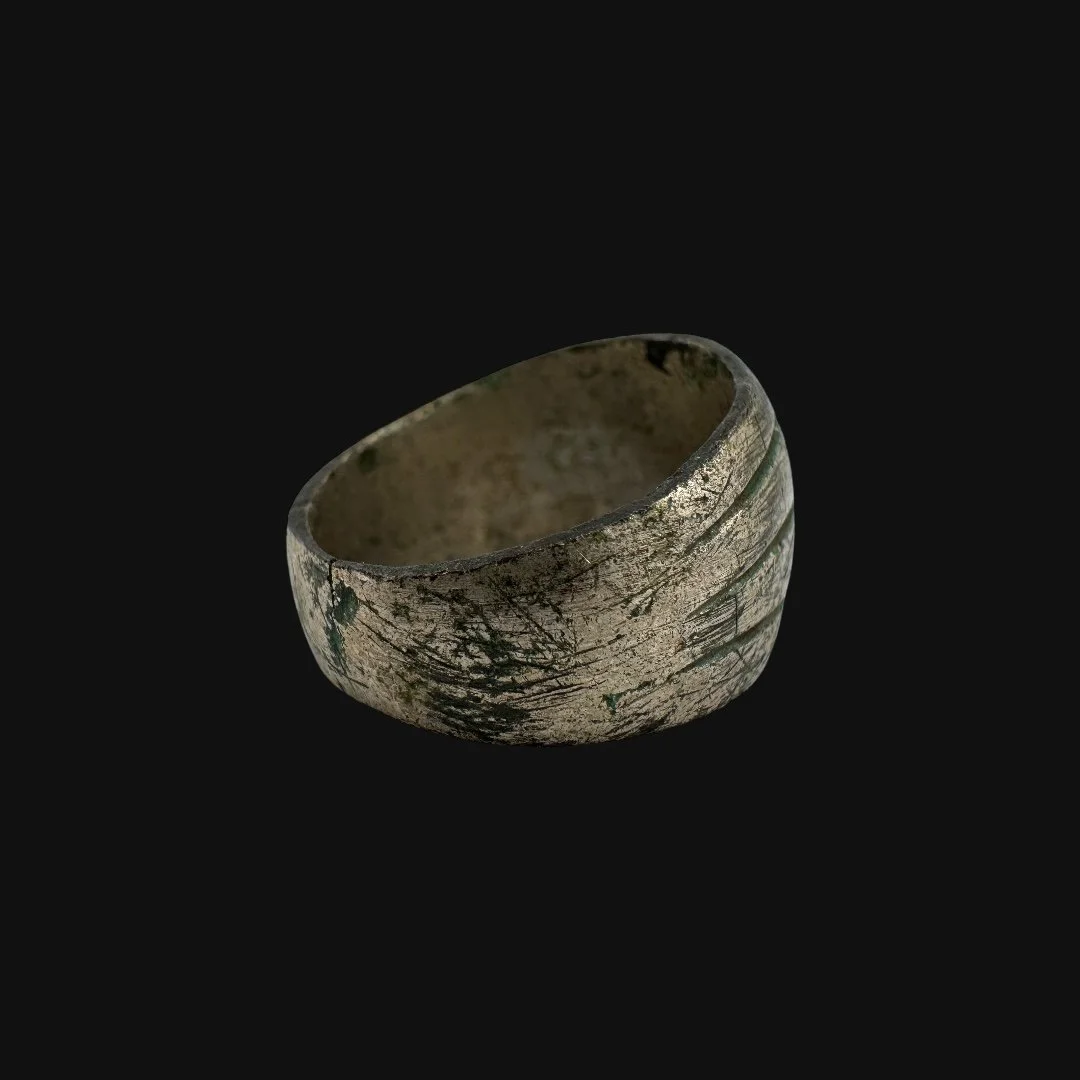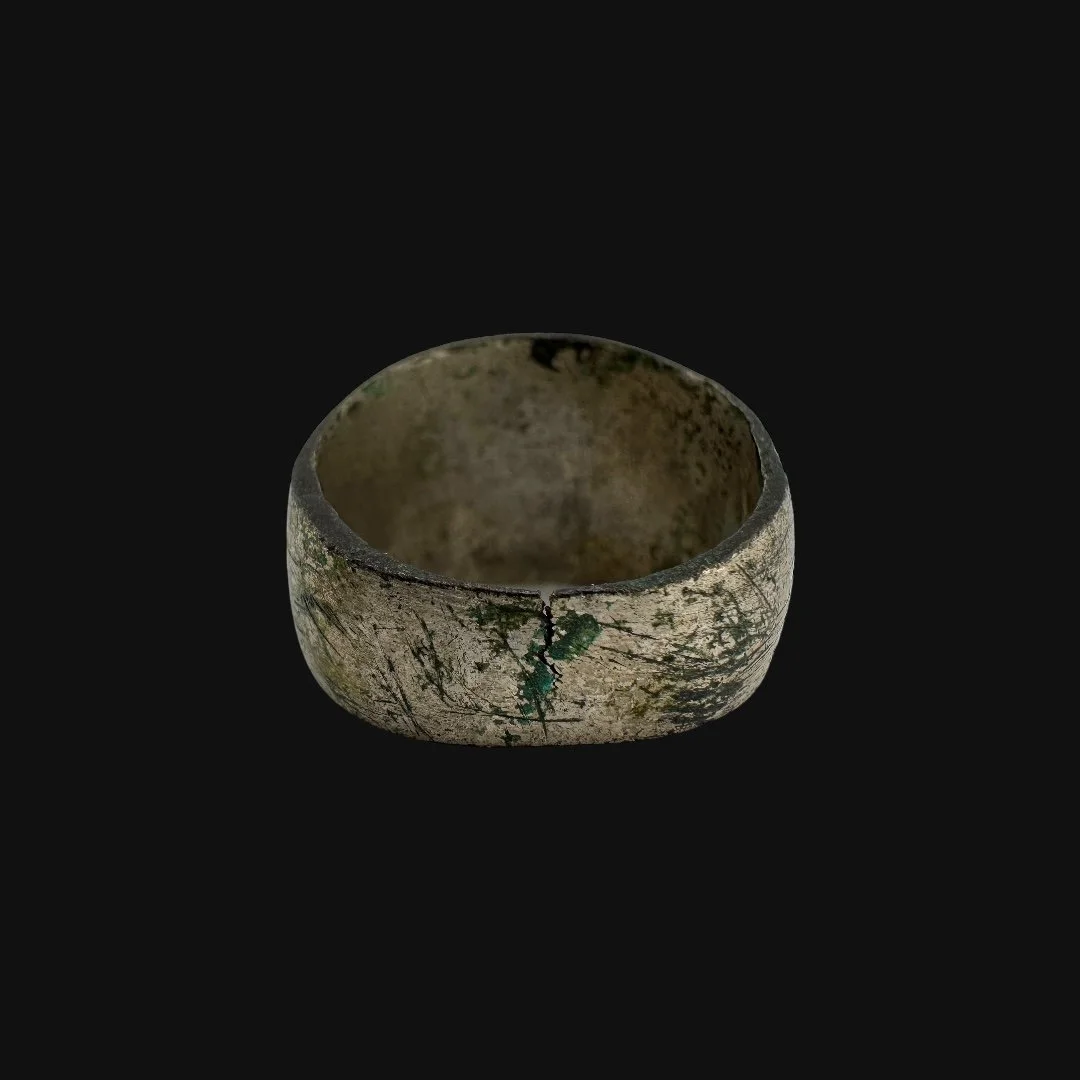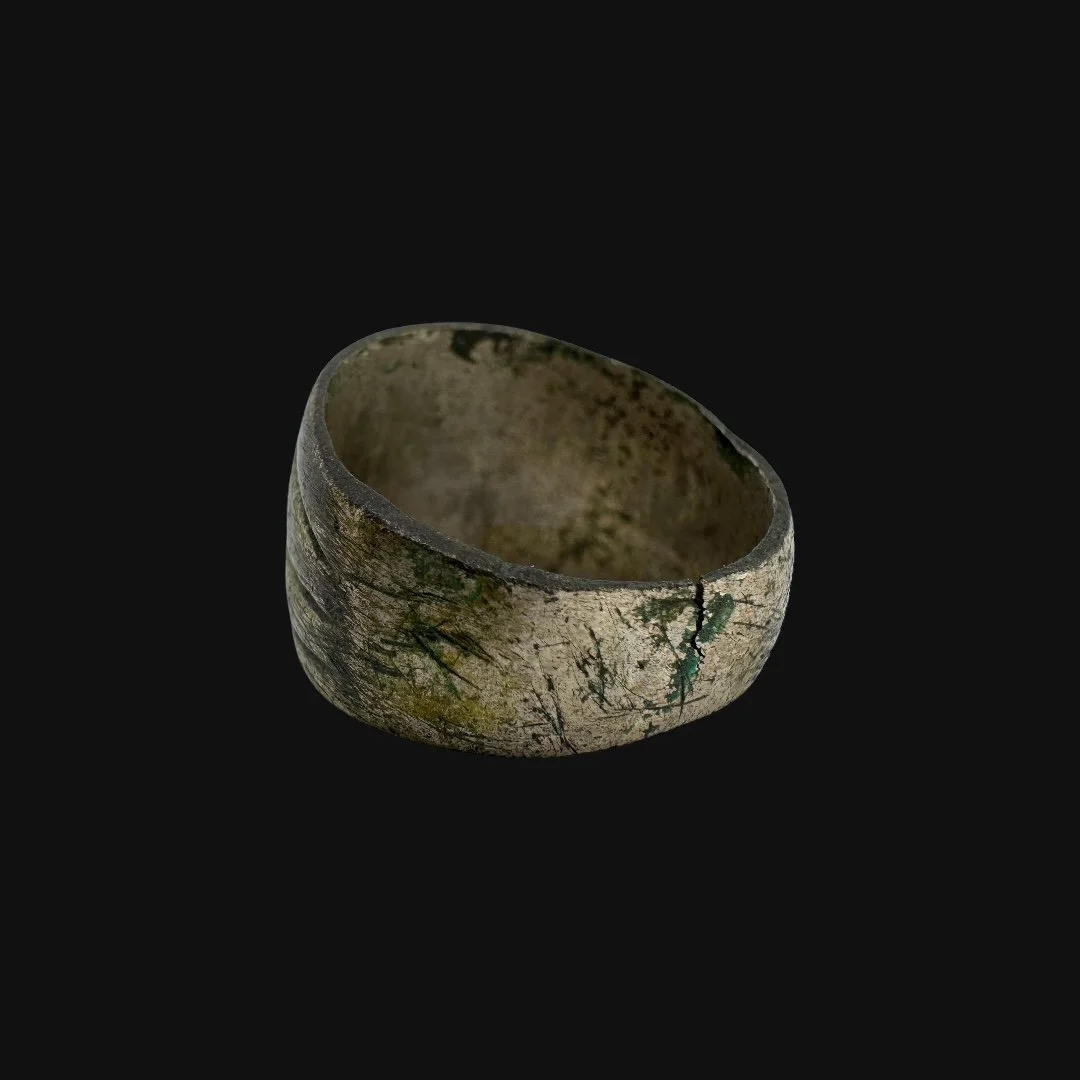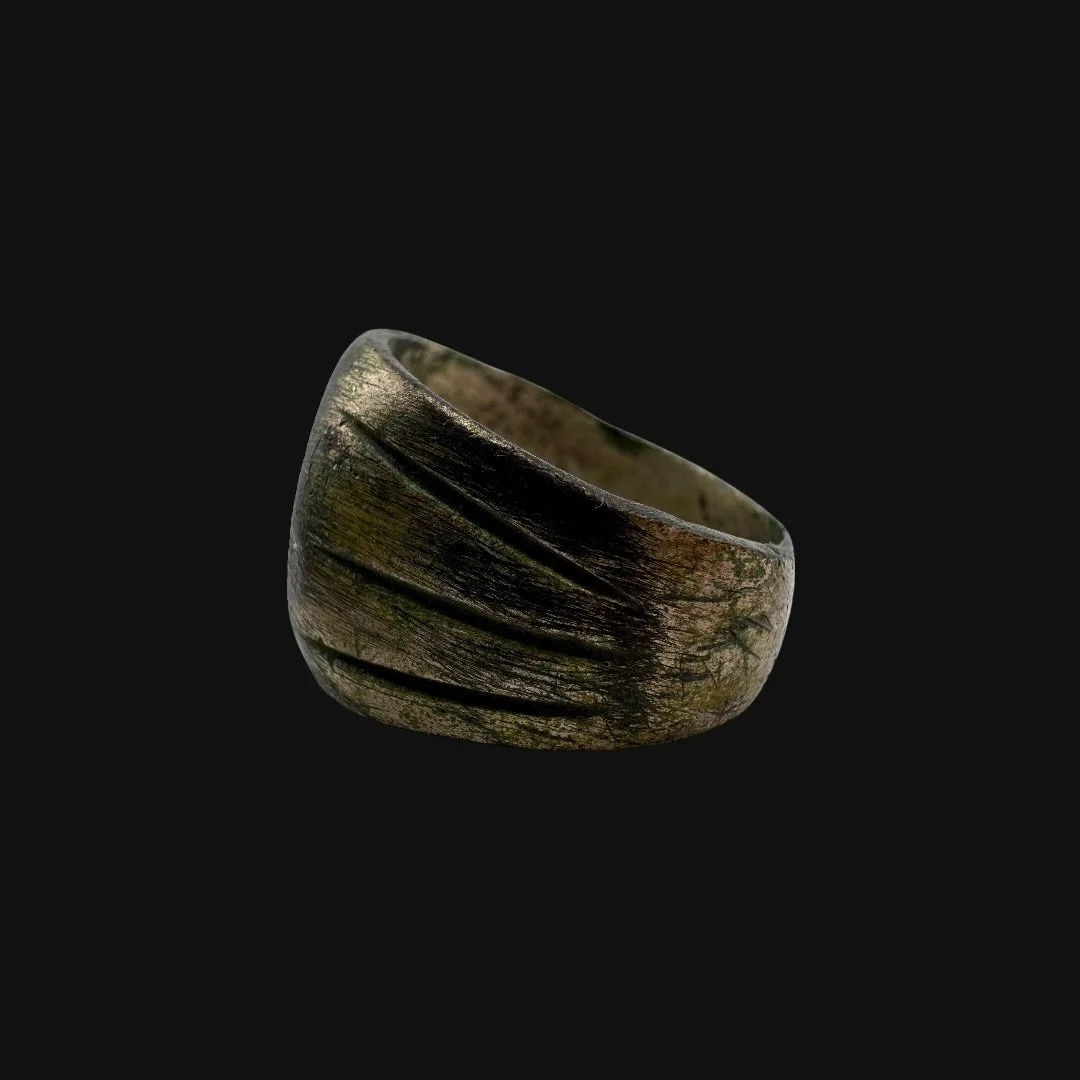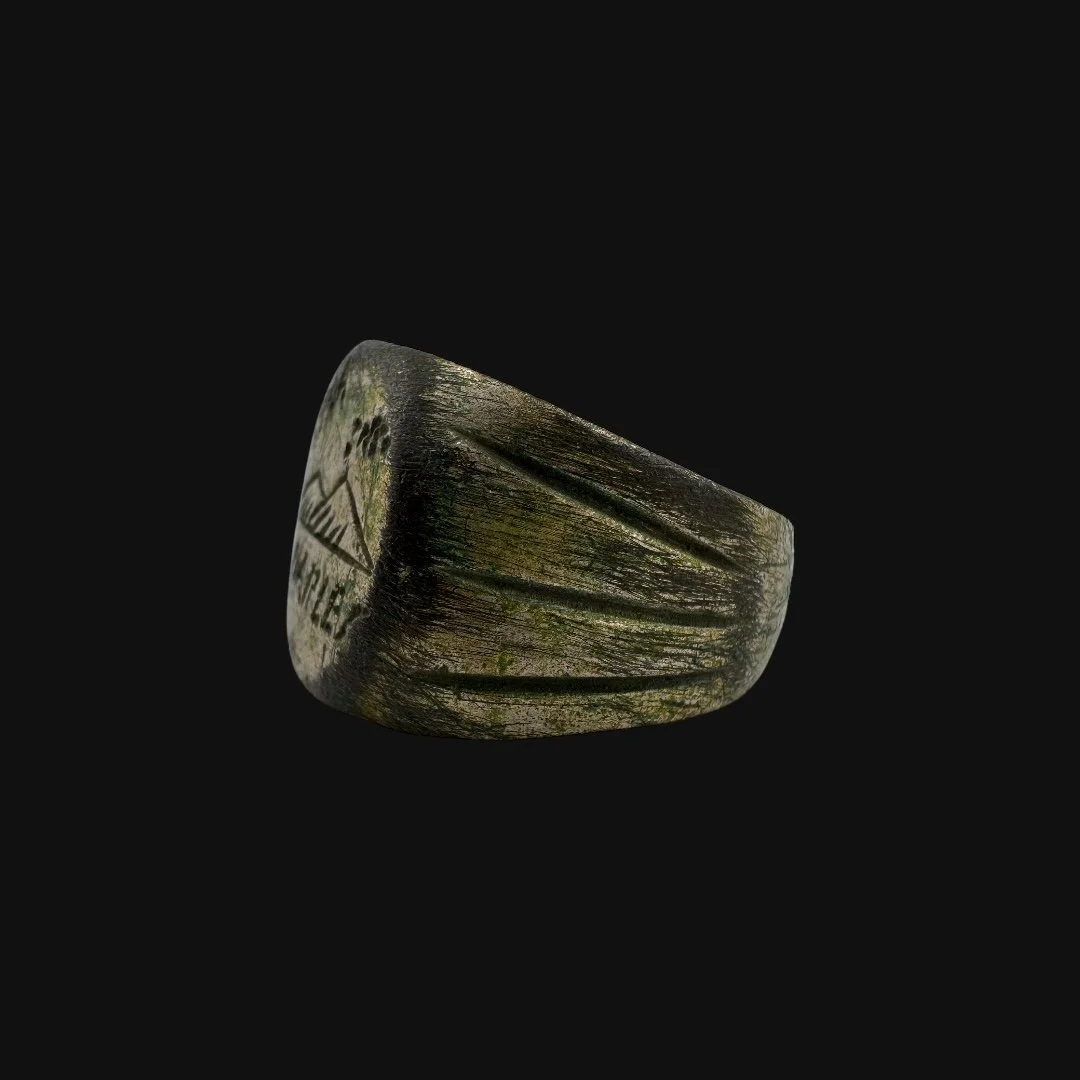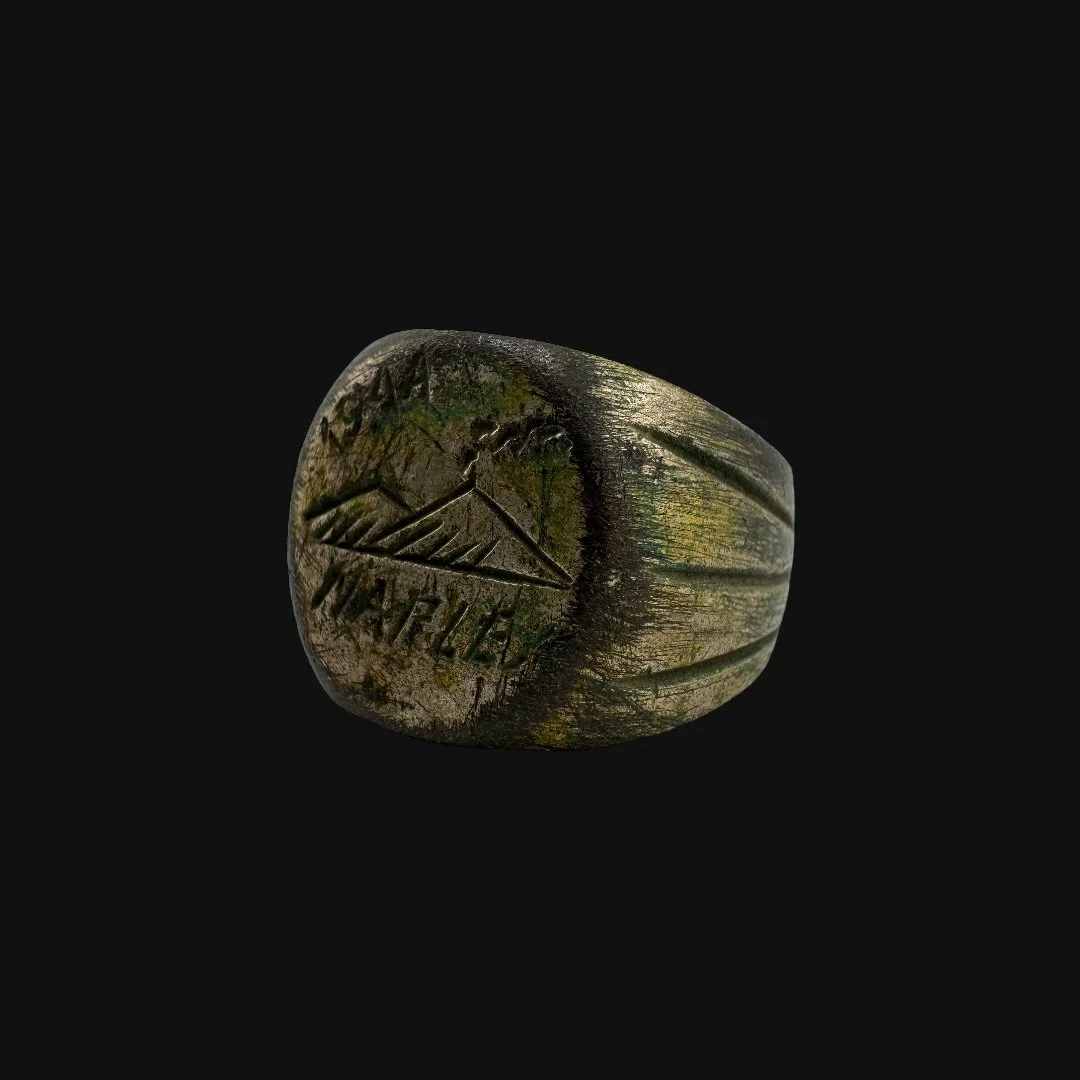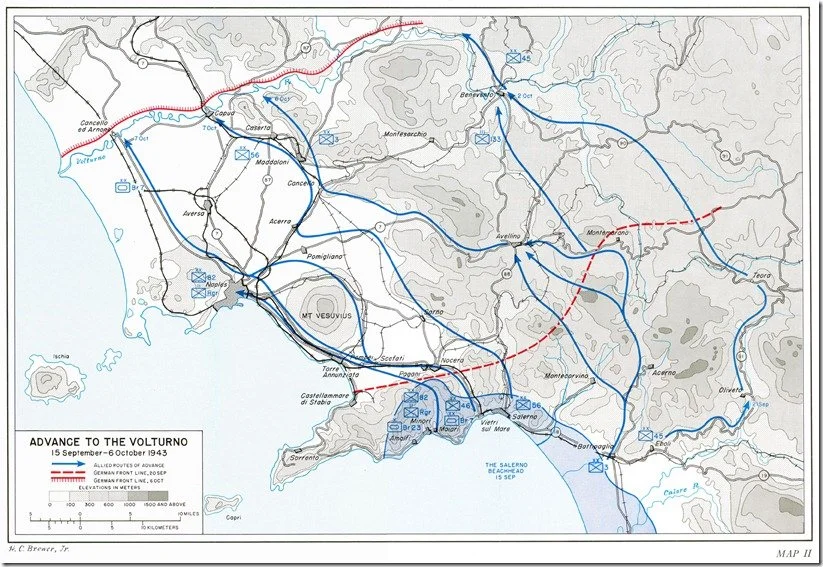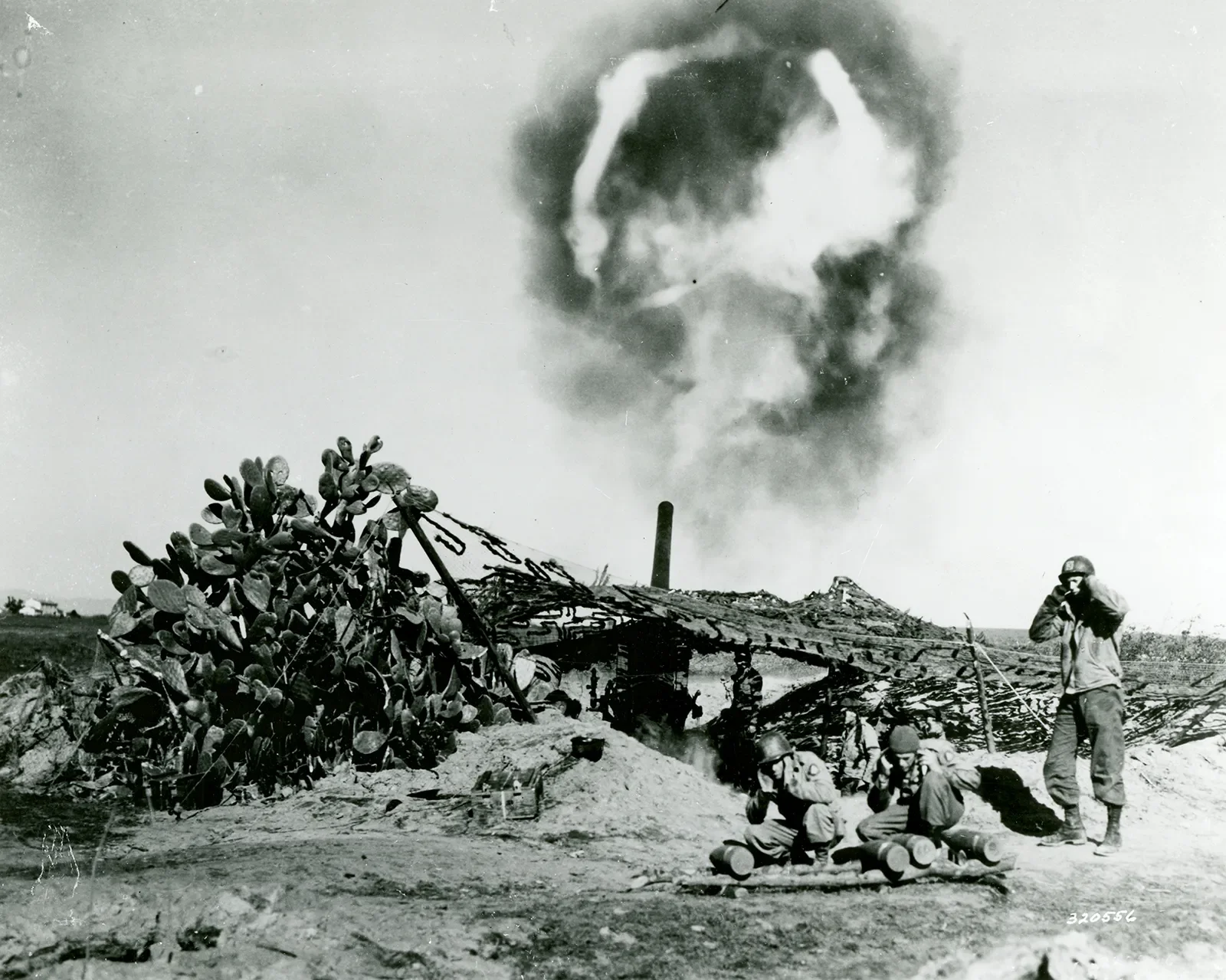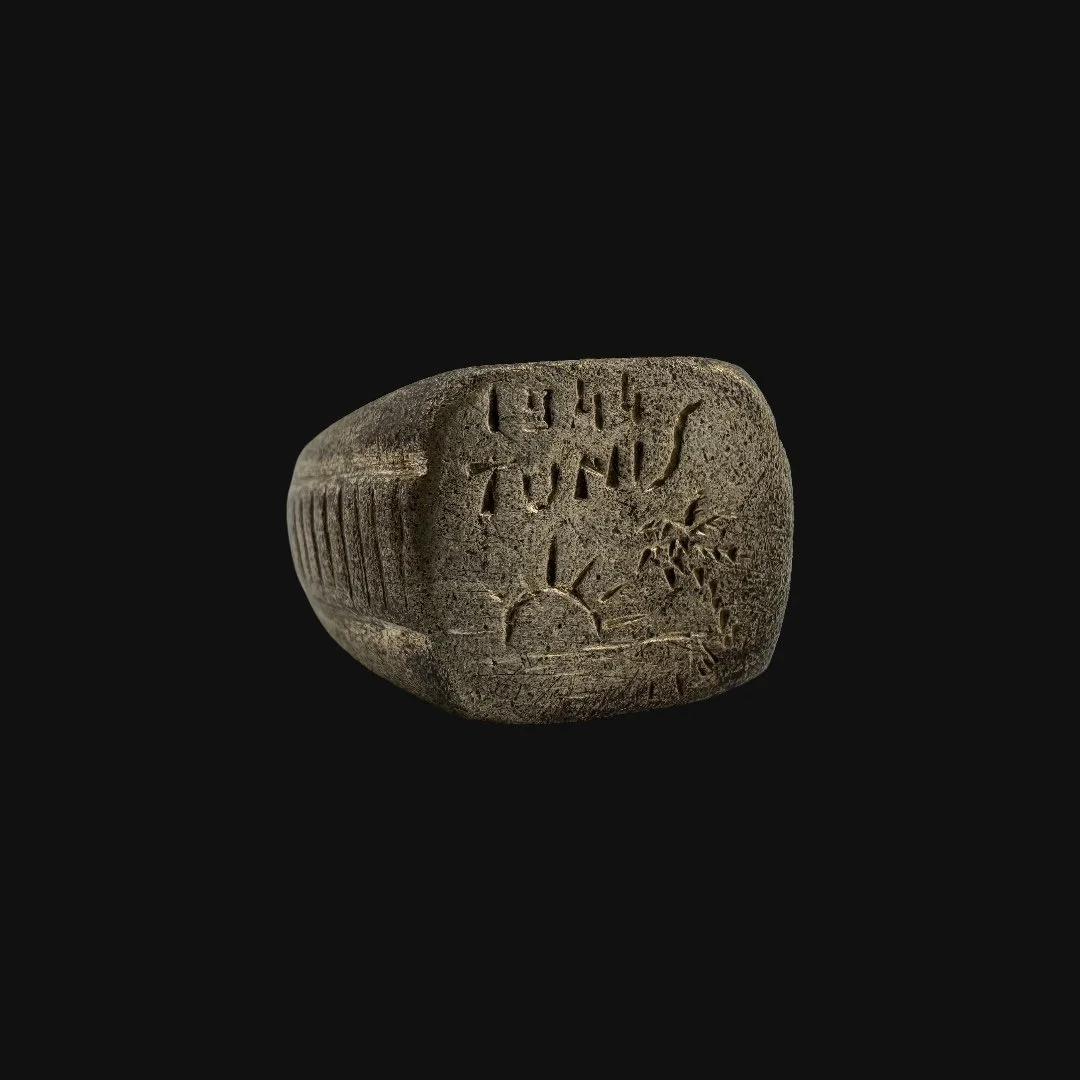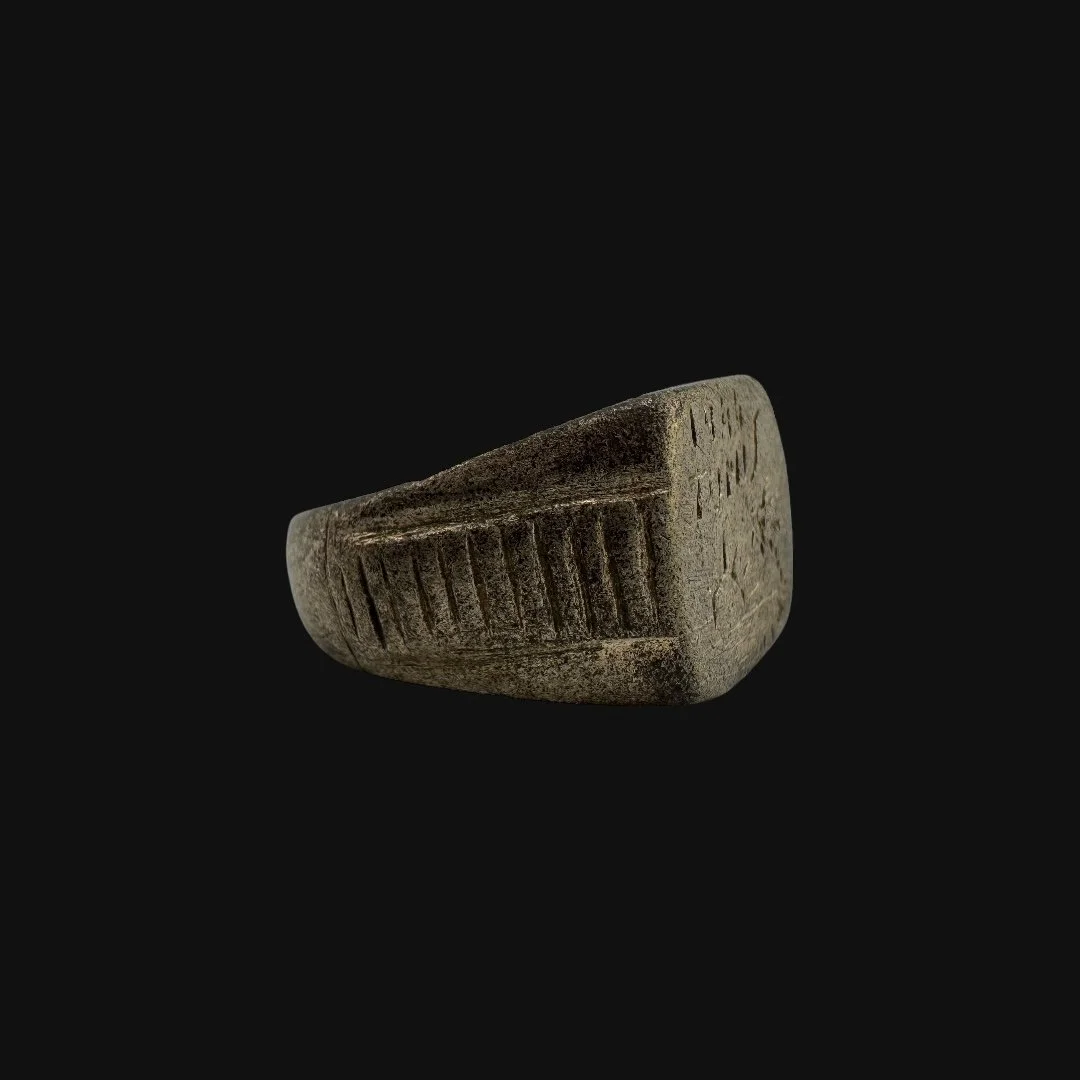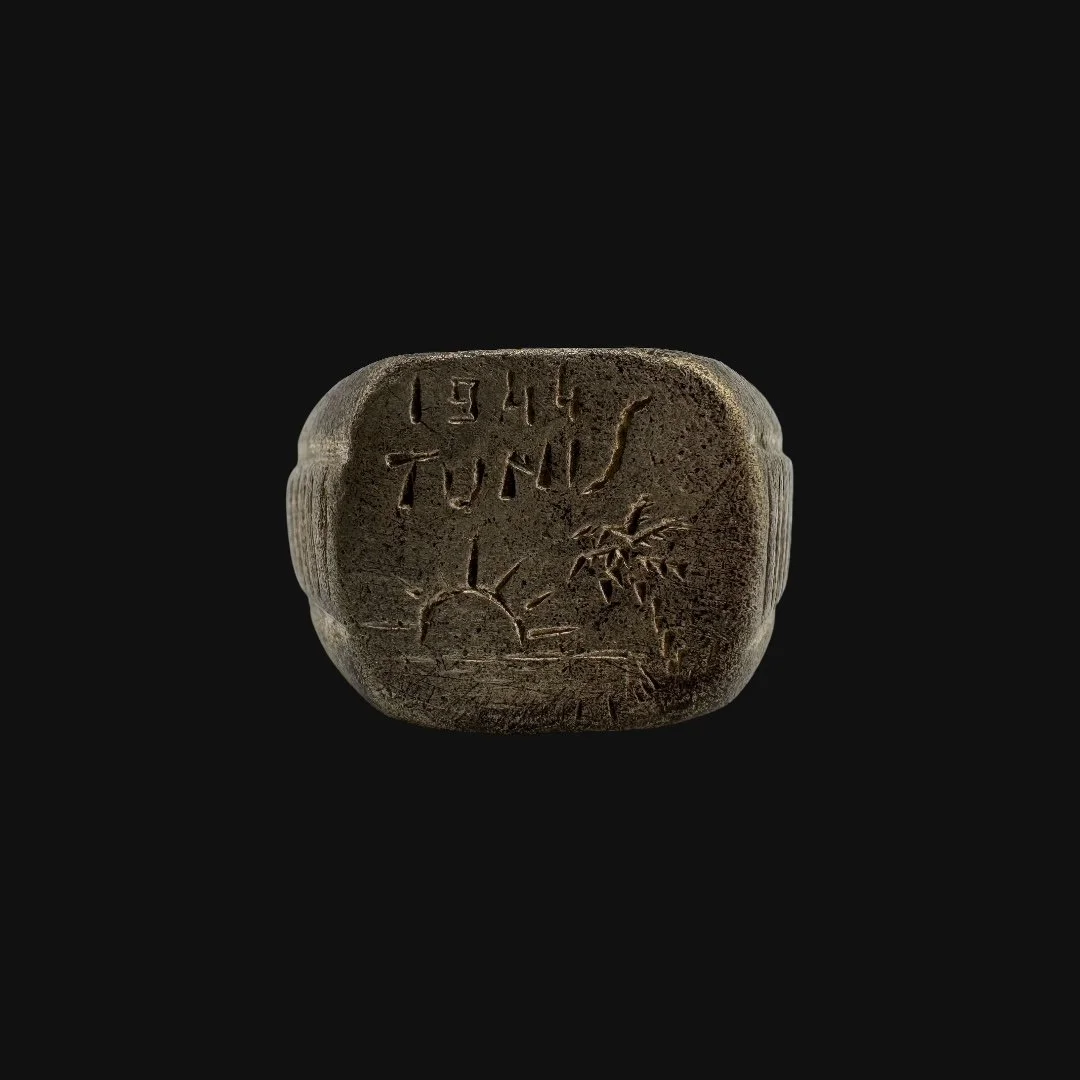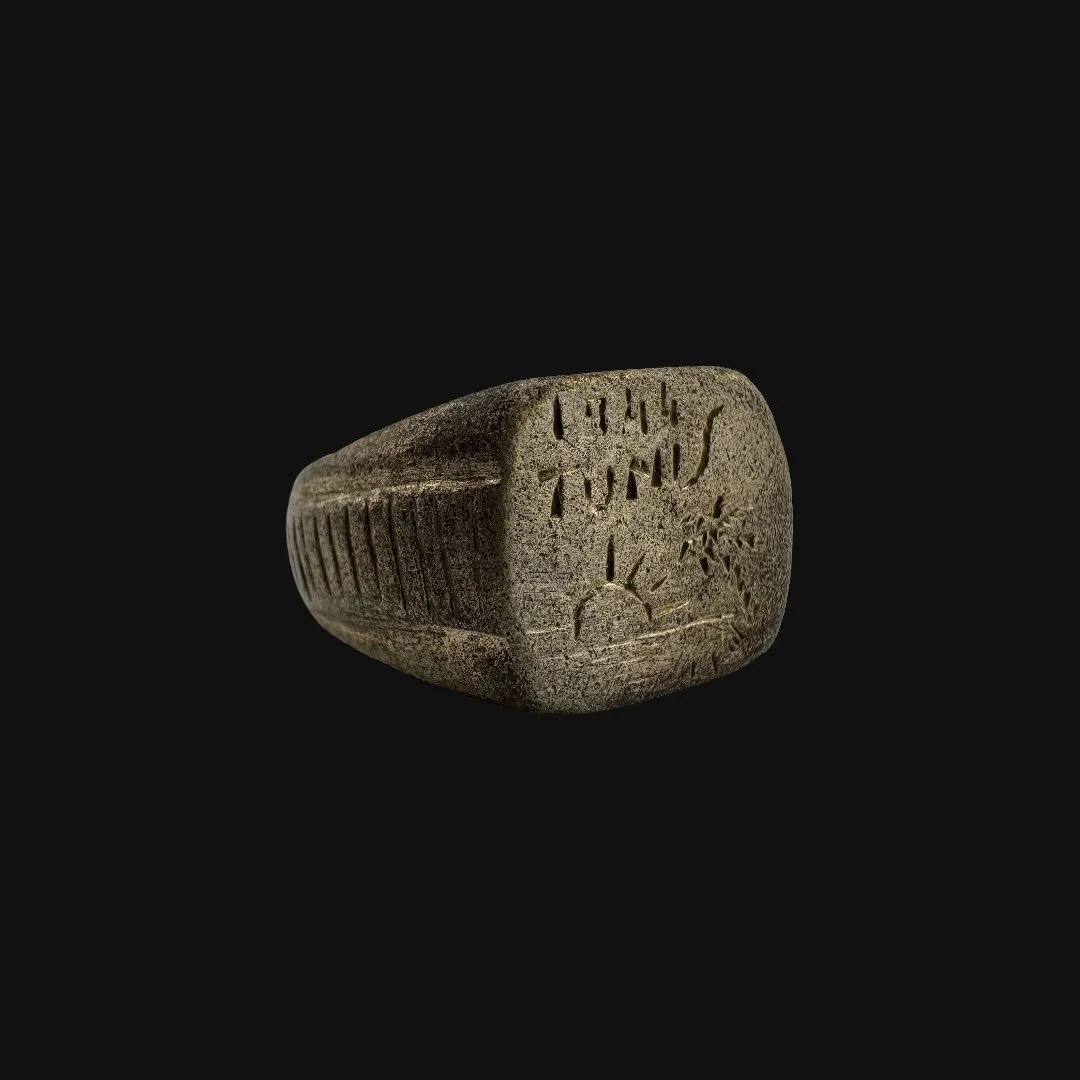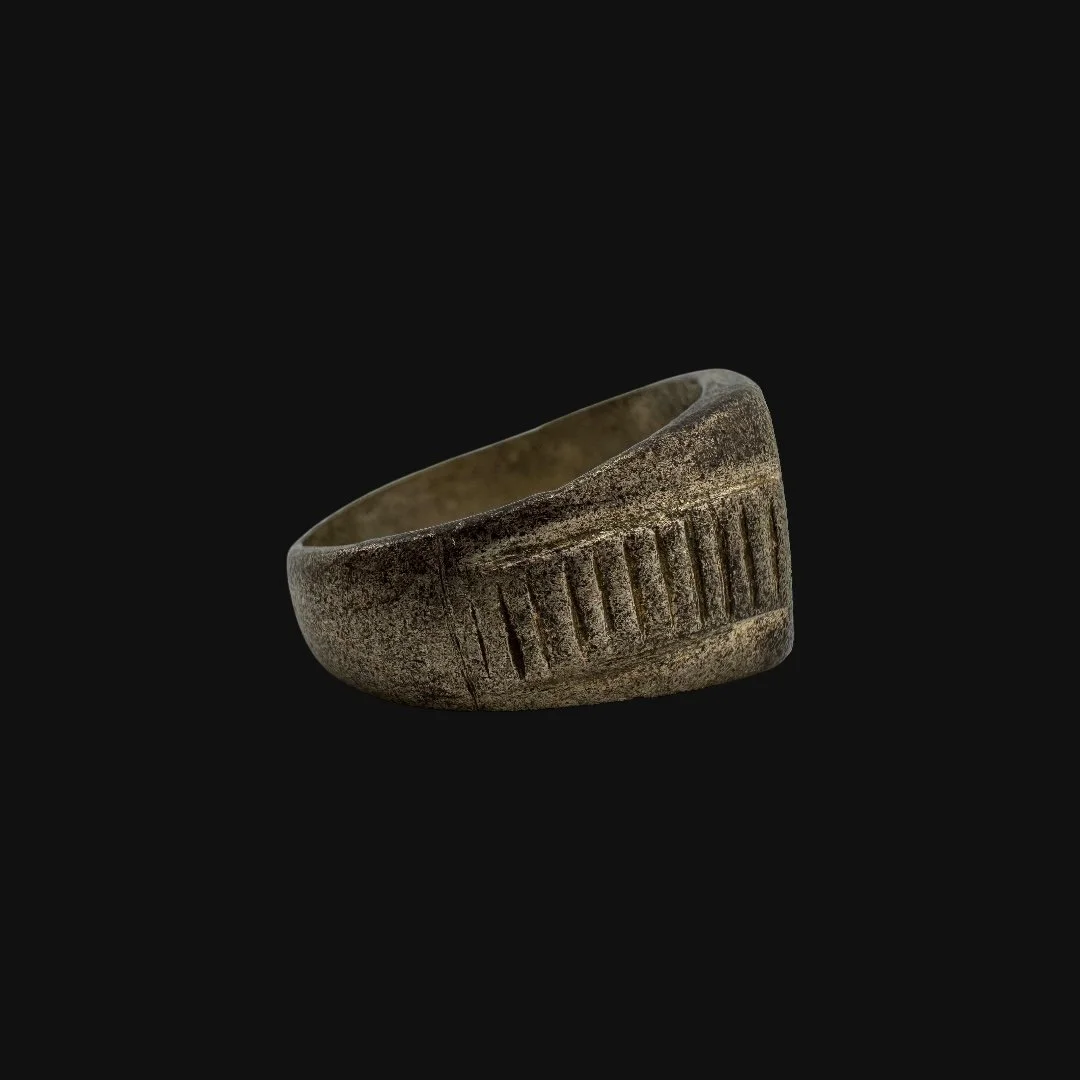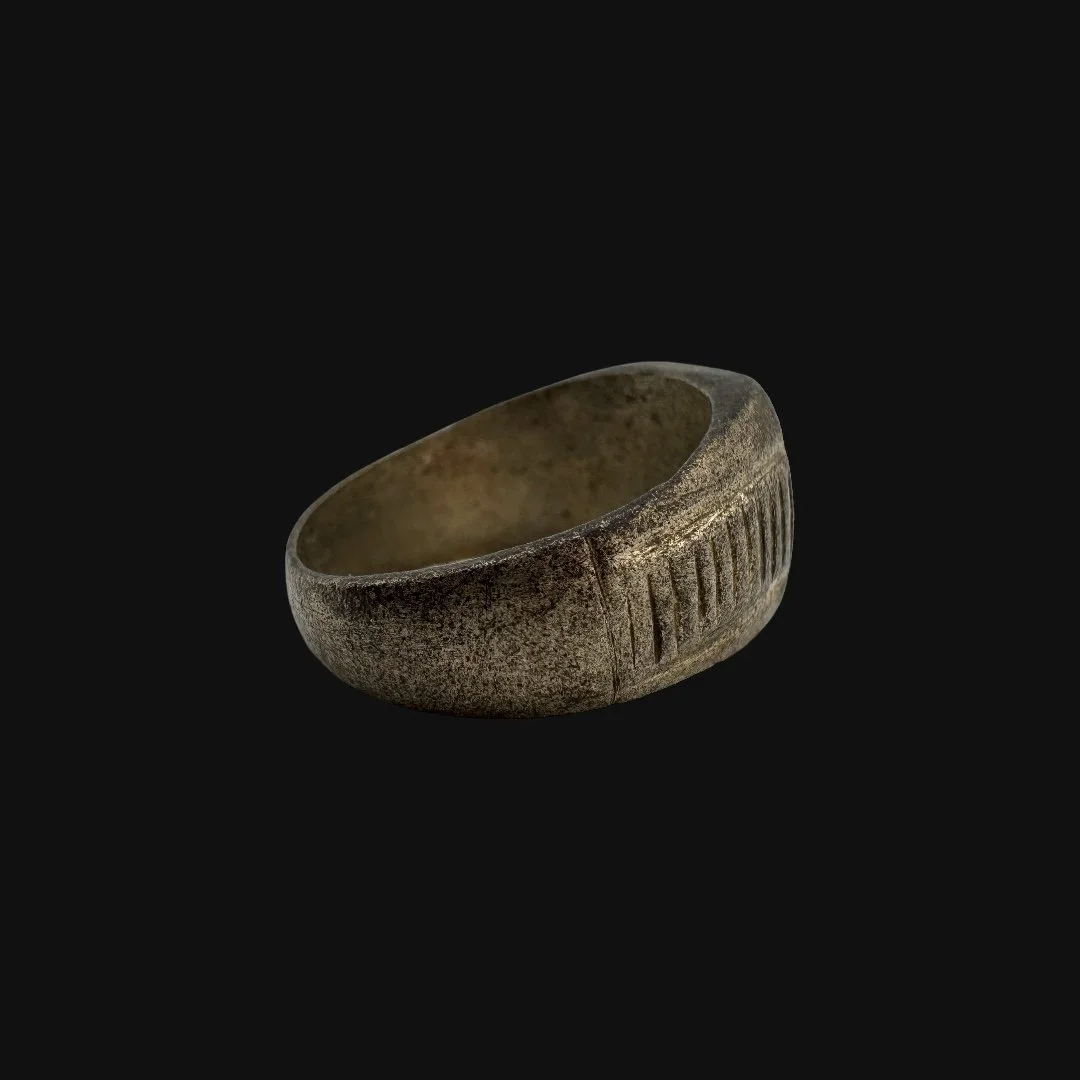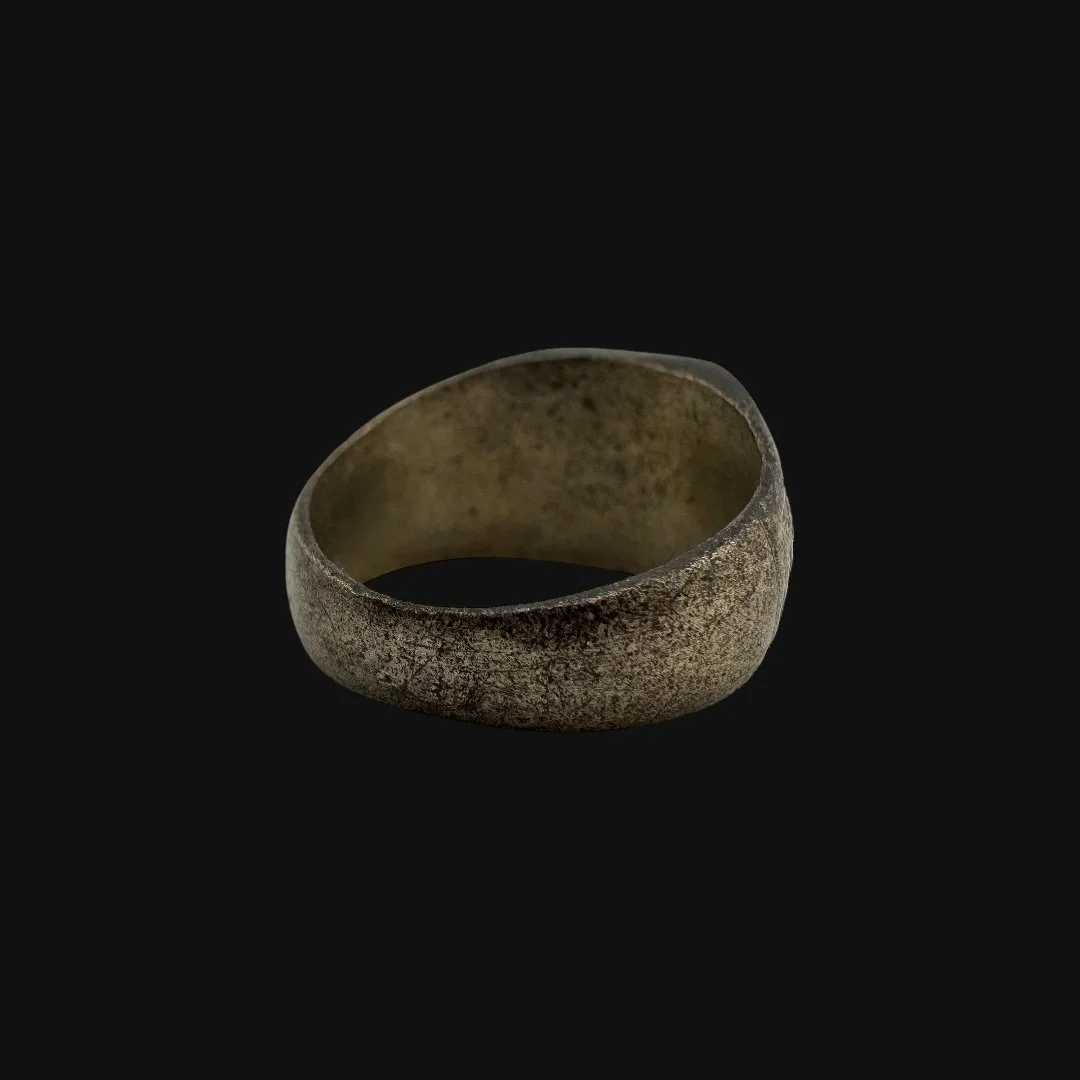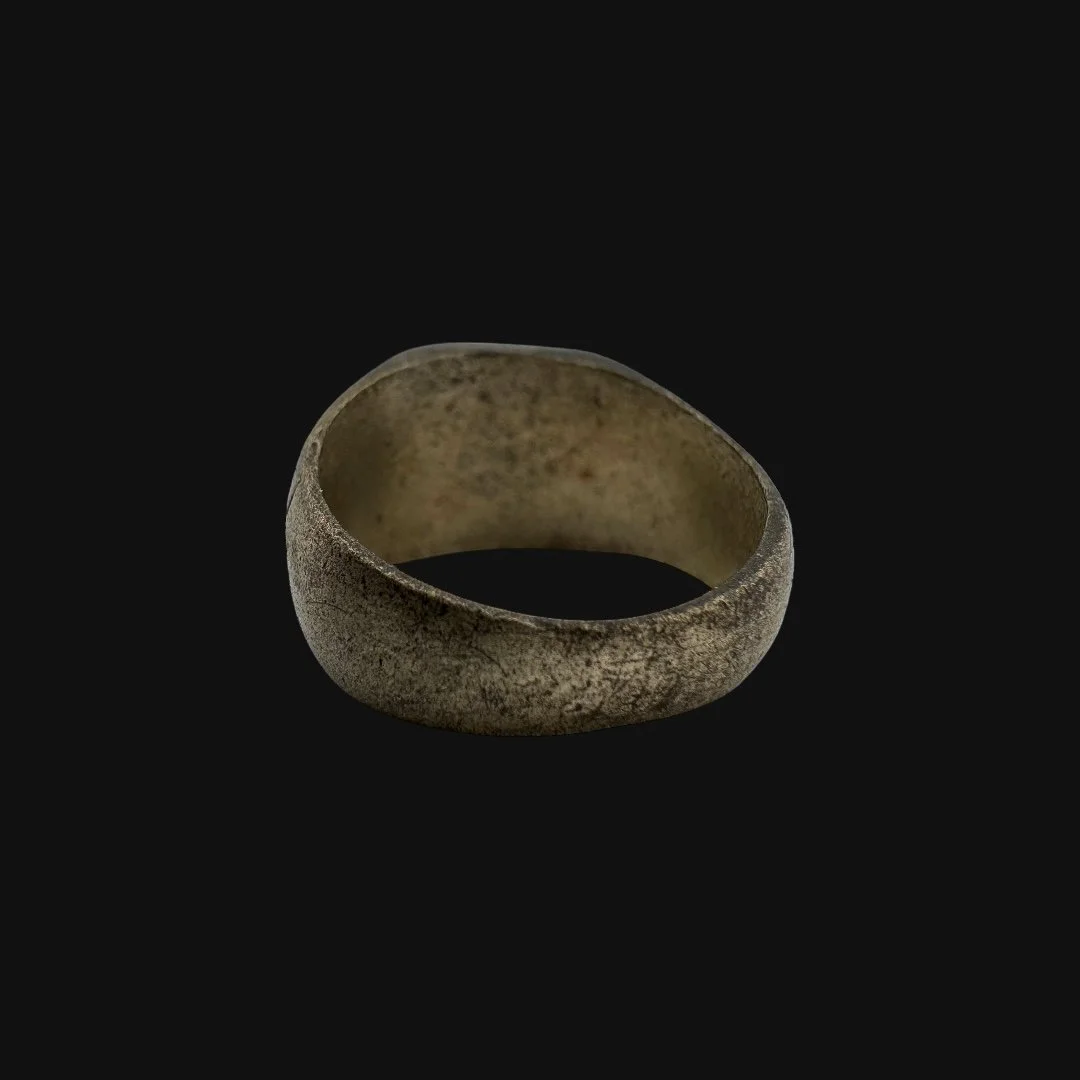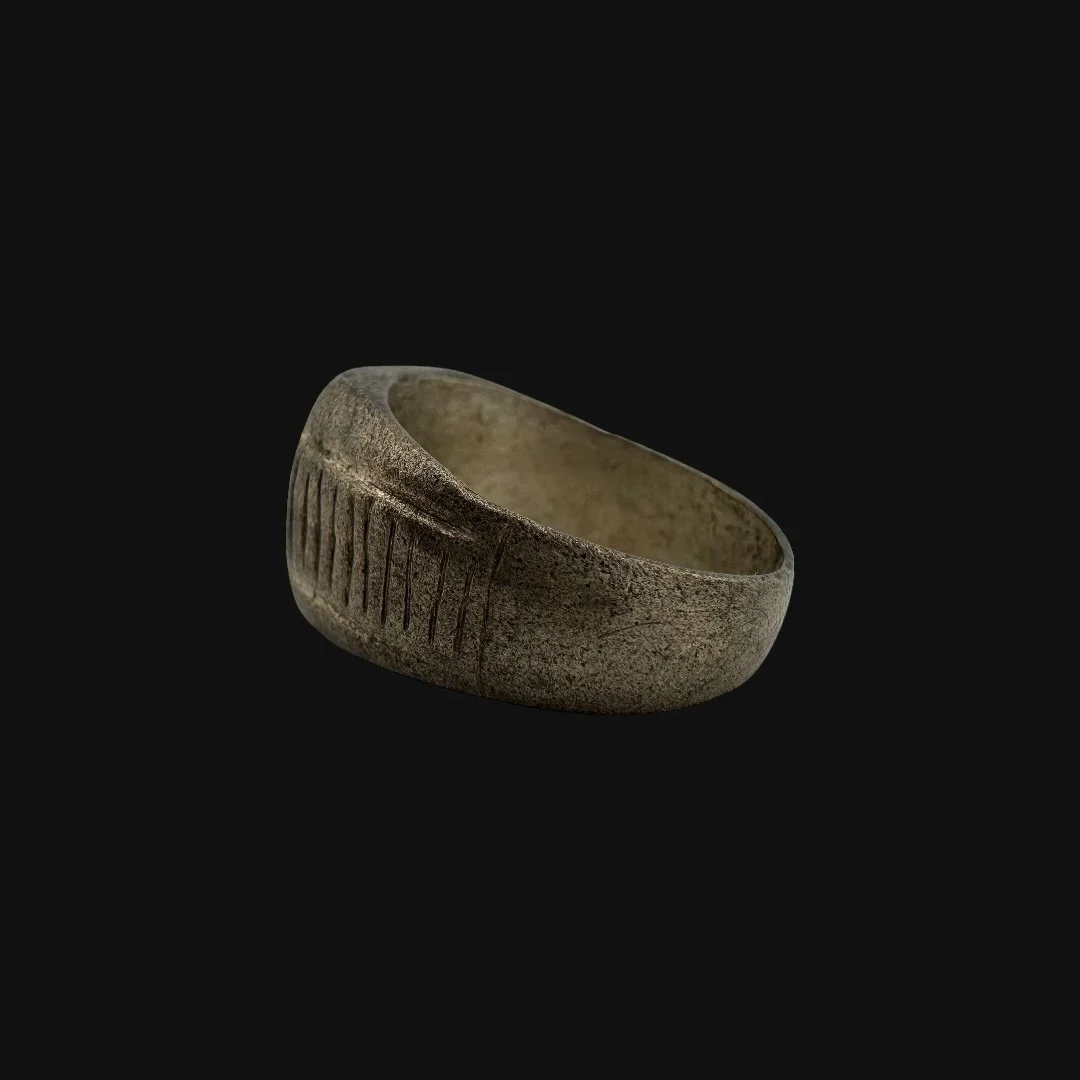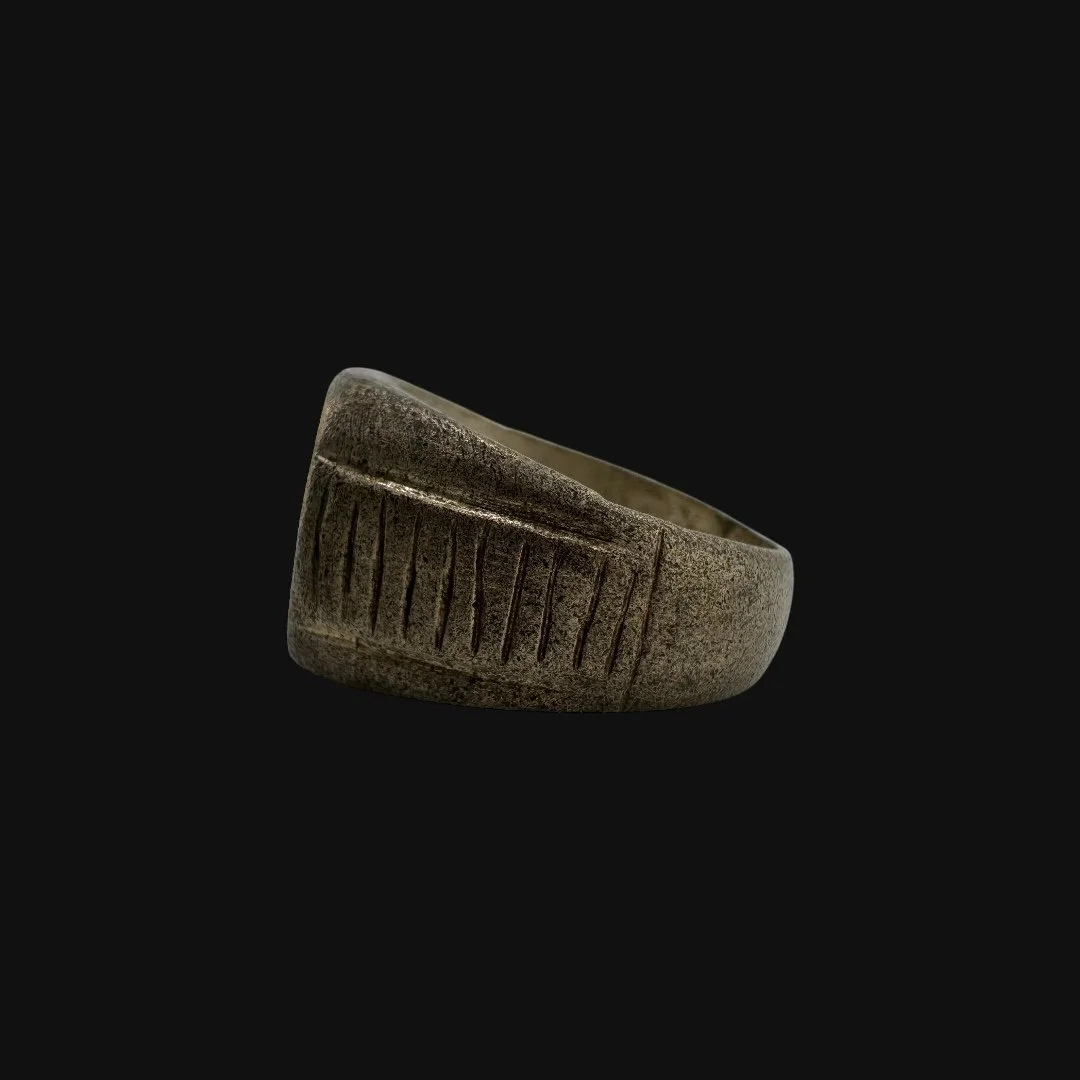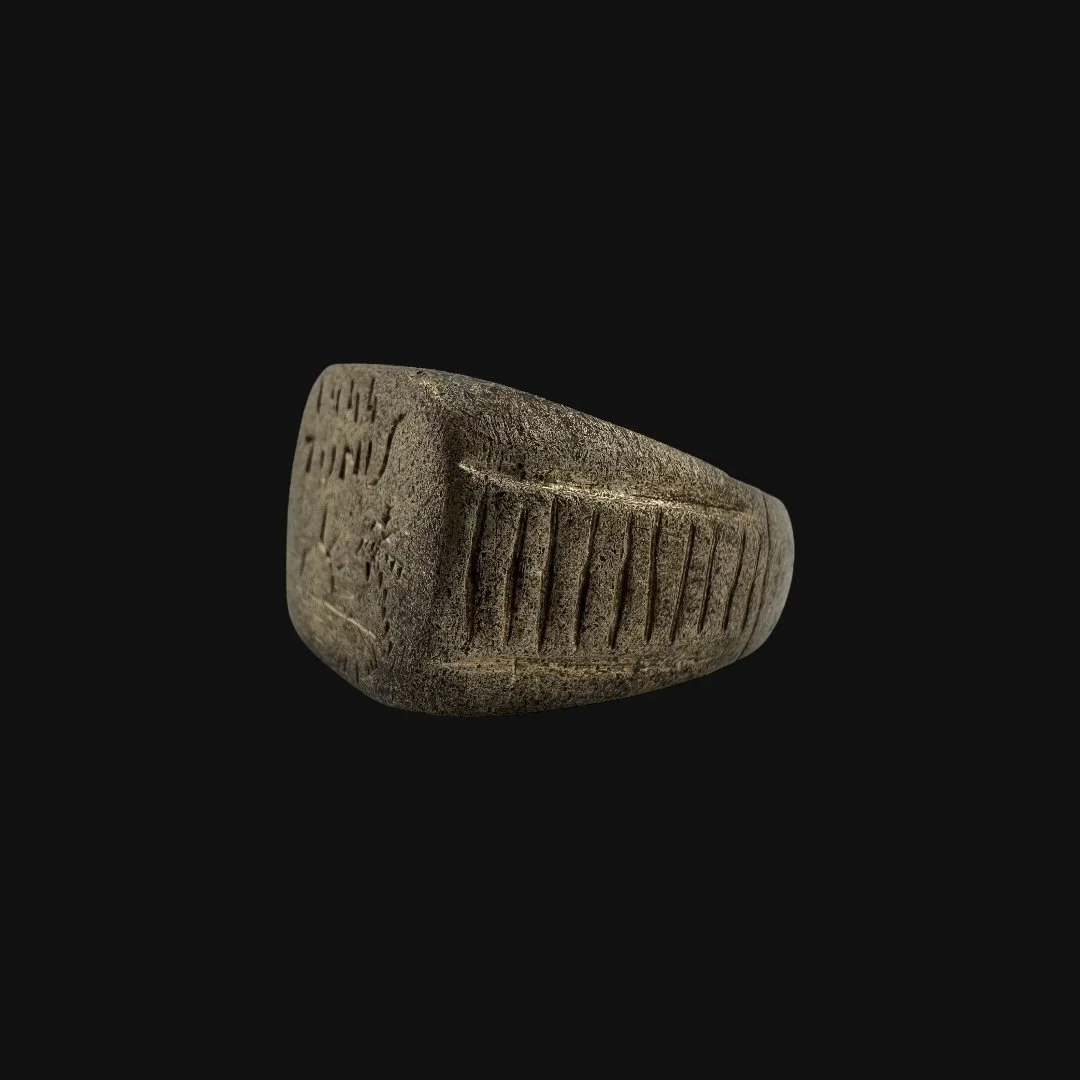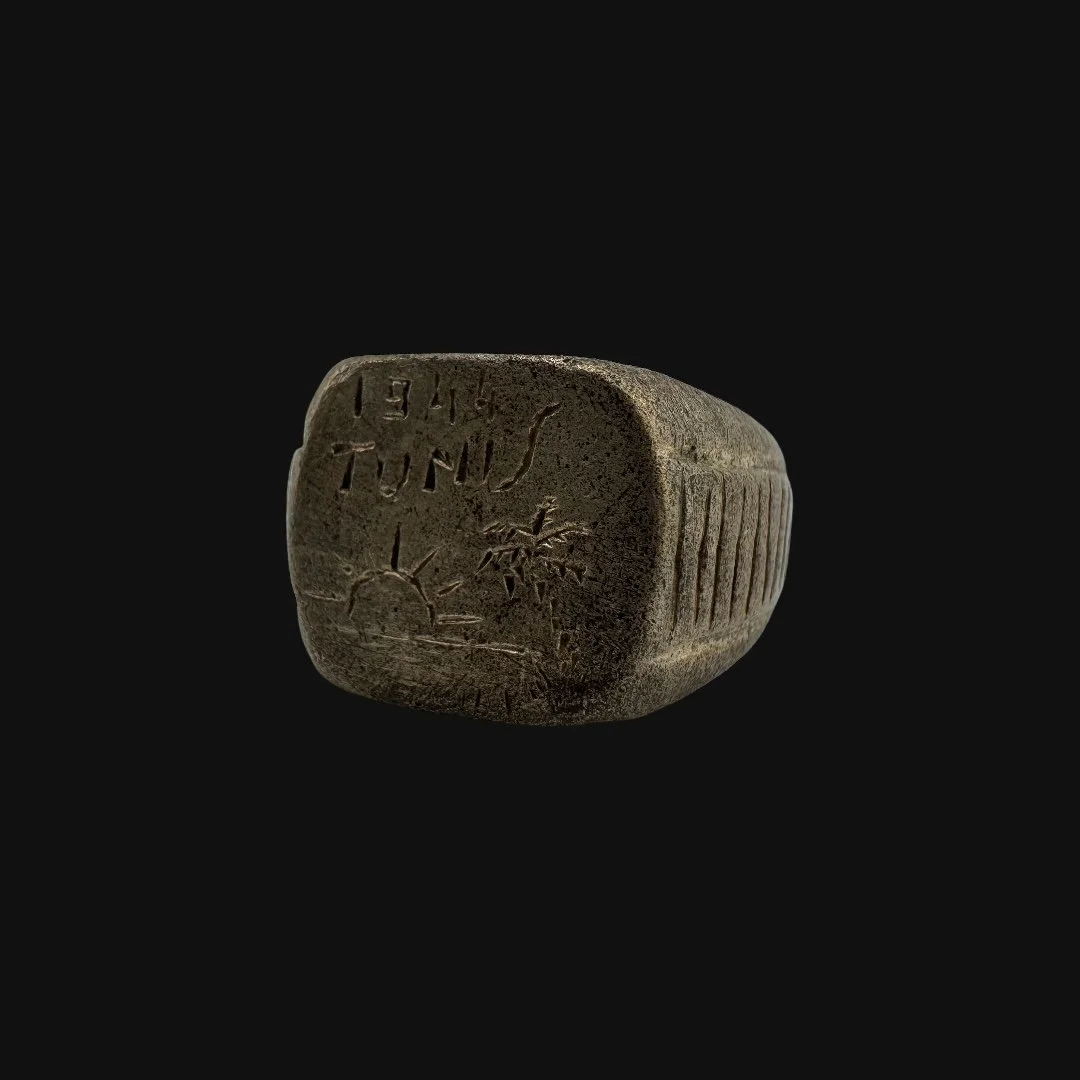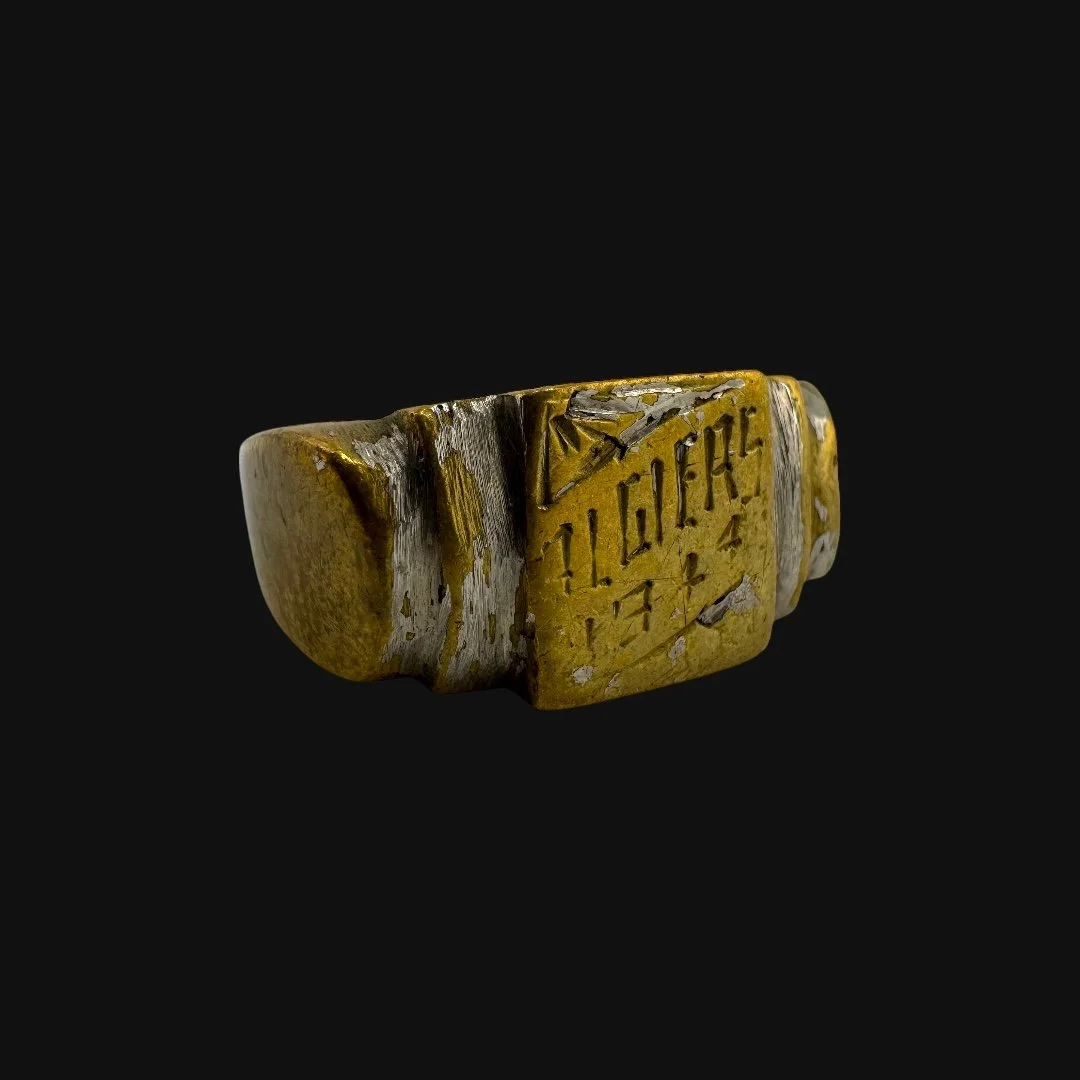 Image 1 of 12
Image 1 of 12

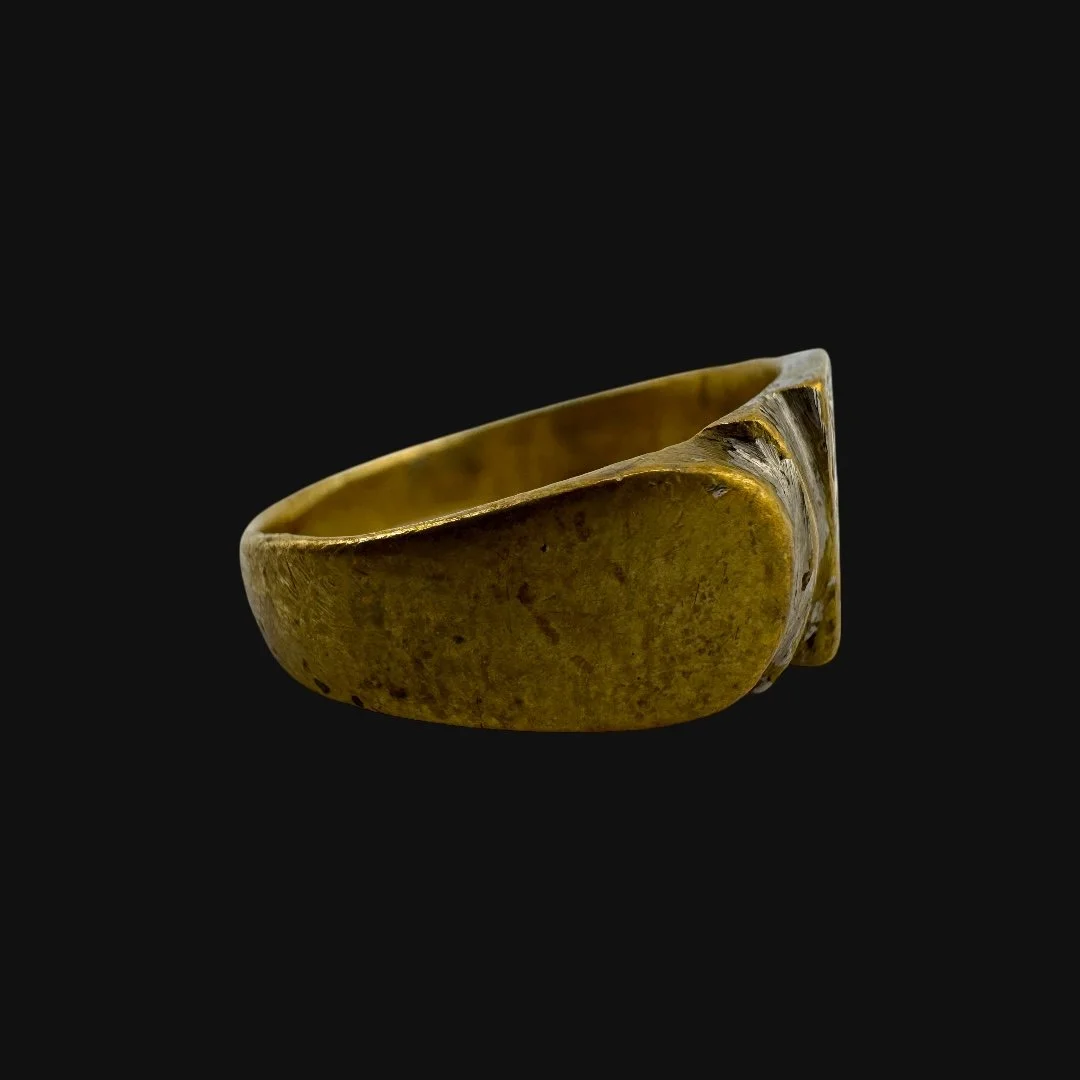 Image 2 of 12
Image 2 of 12

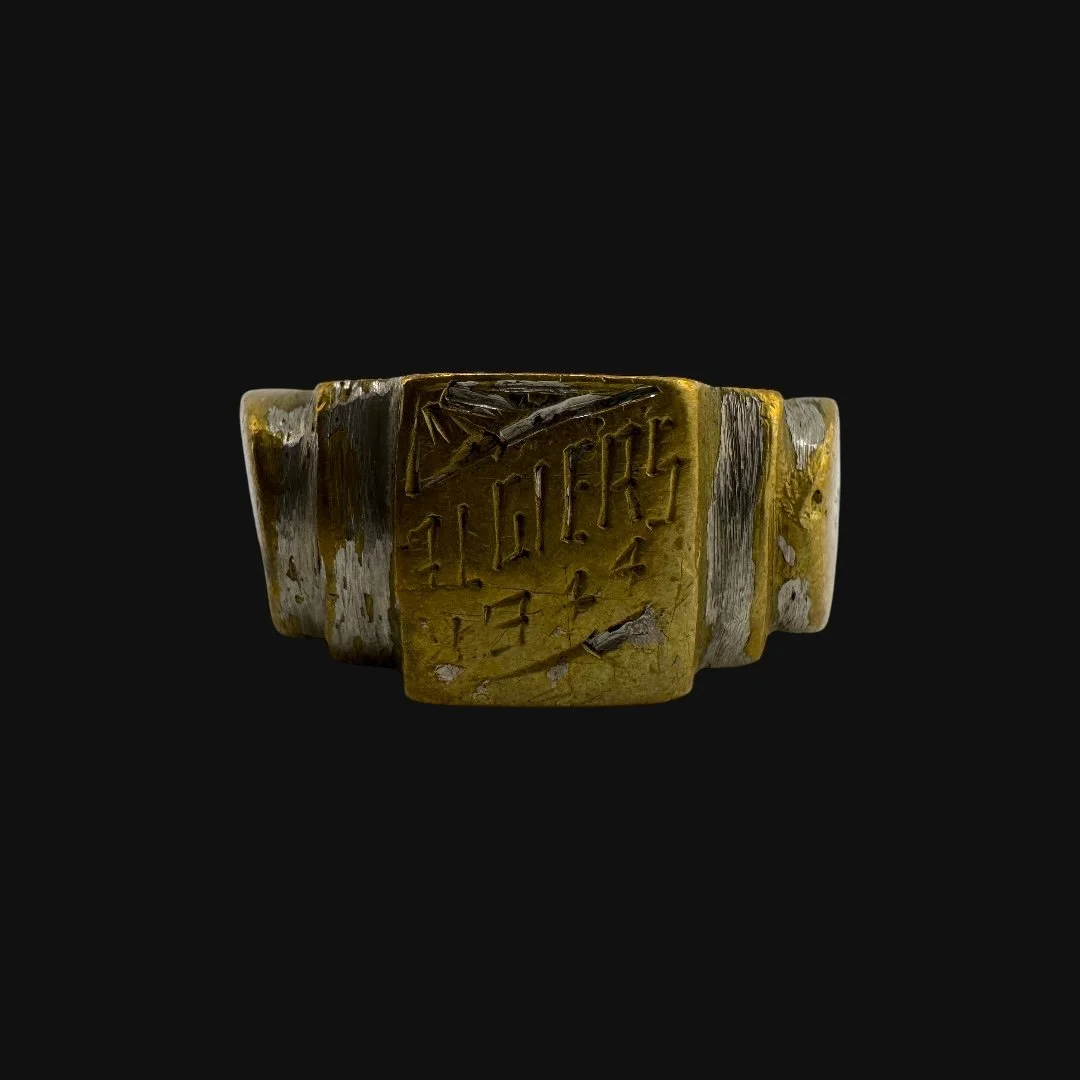 Image 3 of 12
Image 3 of 12

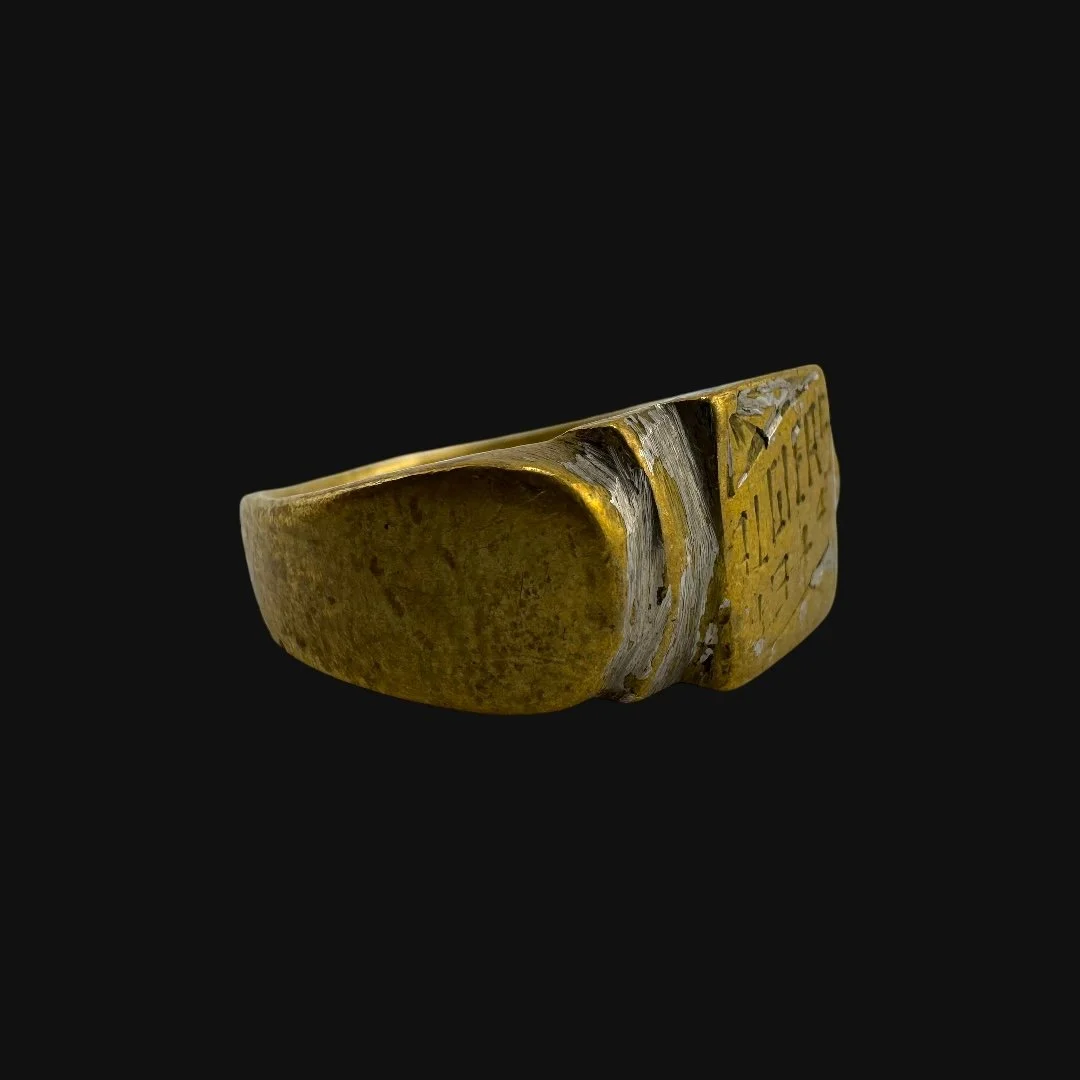 Image 4 of 12
Image 4 of 12

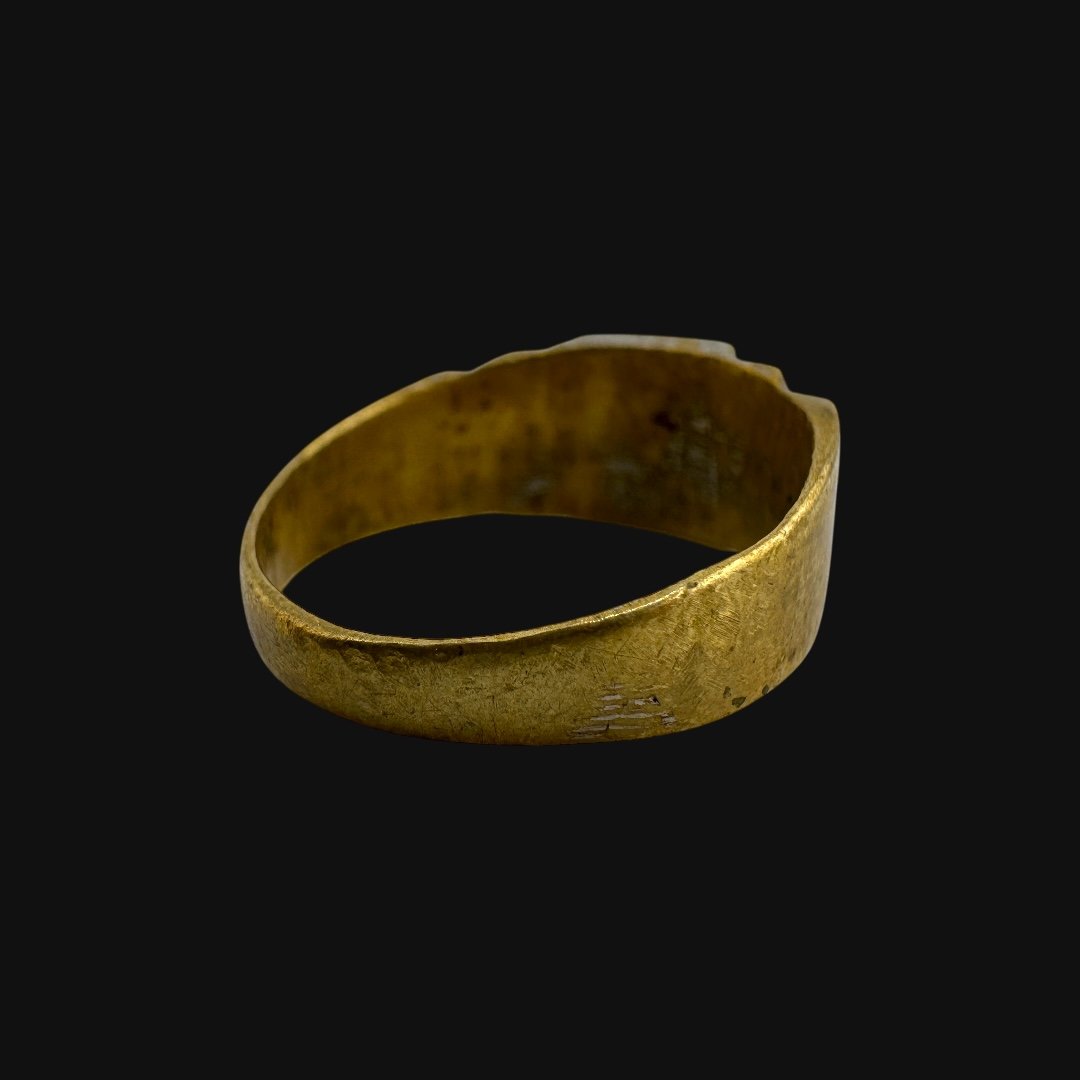 Image 5 of 12
Image 5 of 12

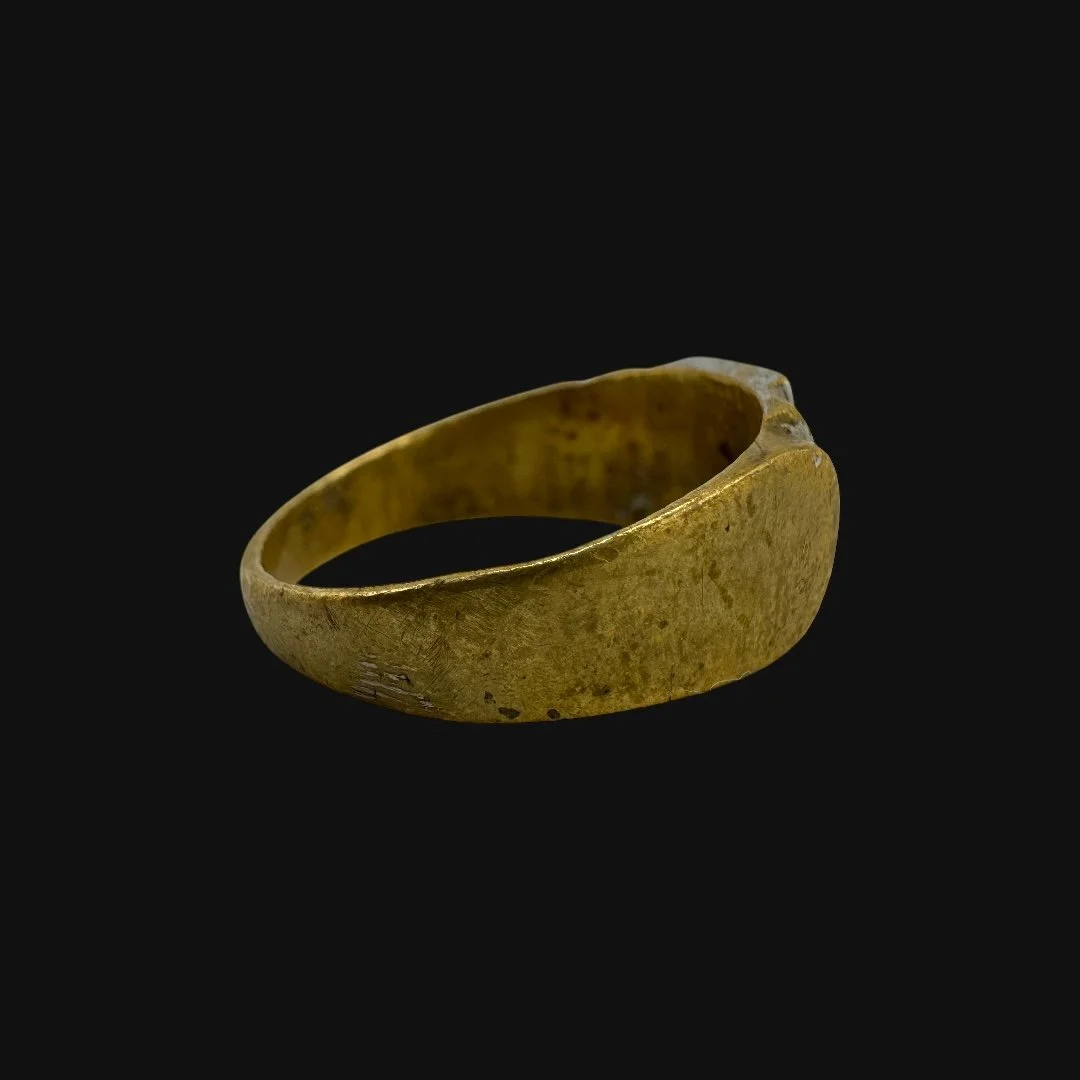 Image 6 of 12
Image 6 of 12

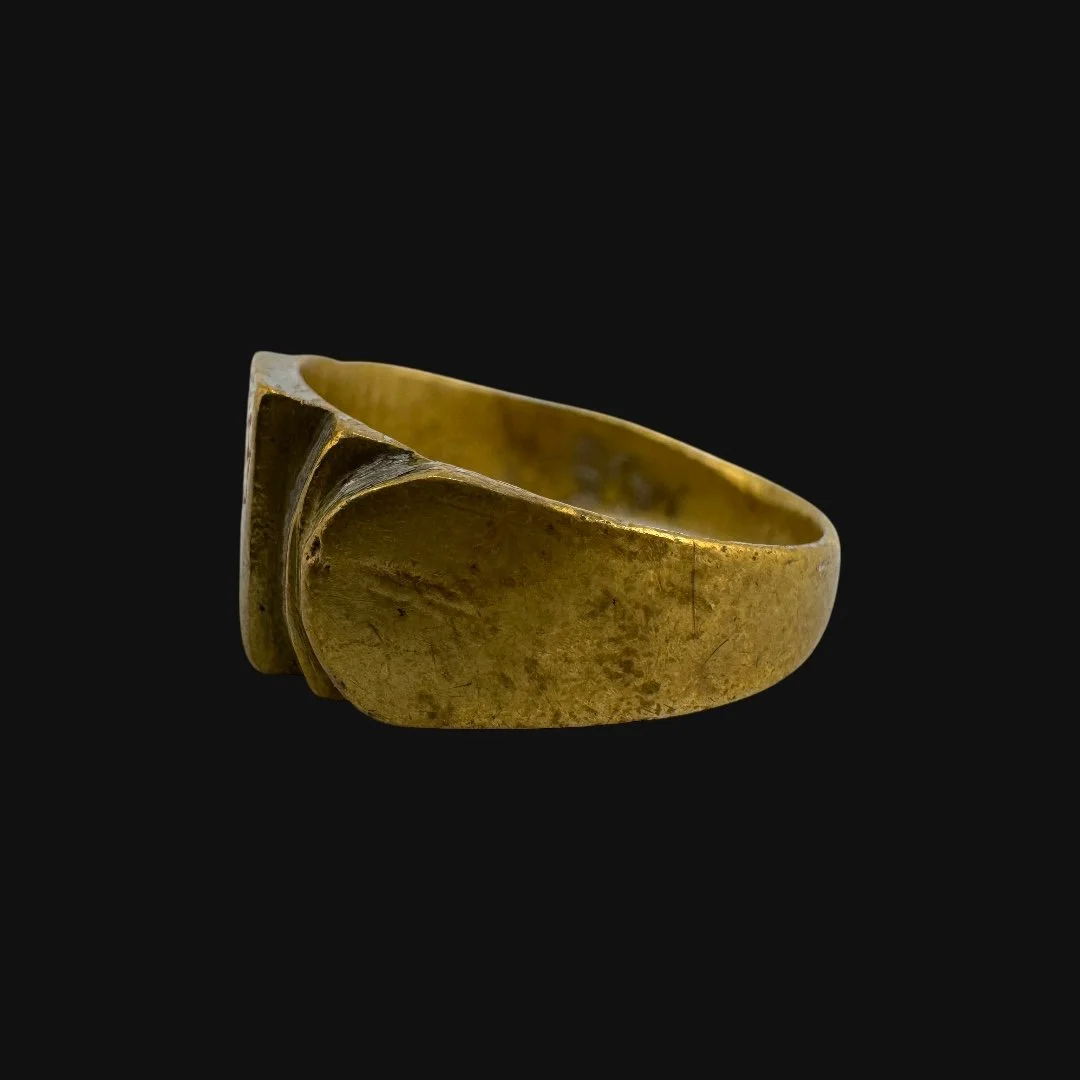 Image 7 of 12
Image 7 of 12

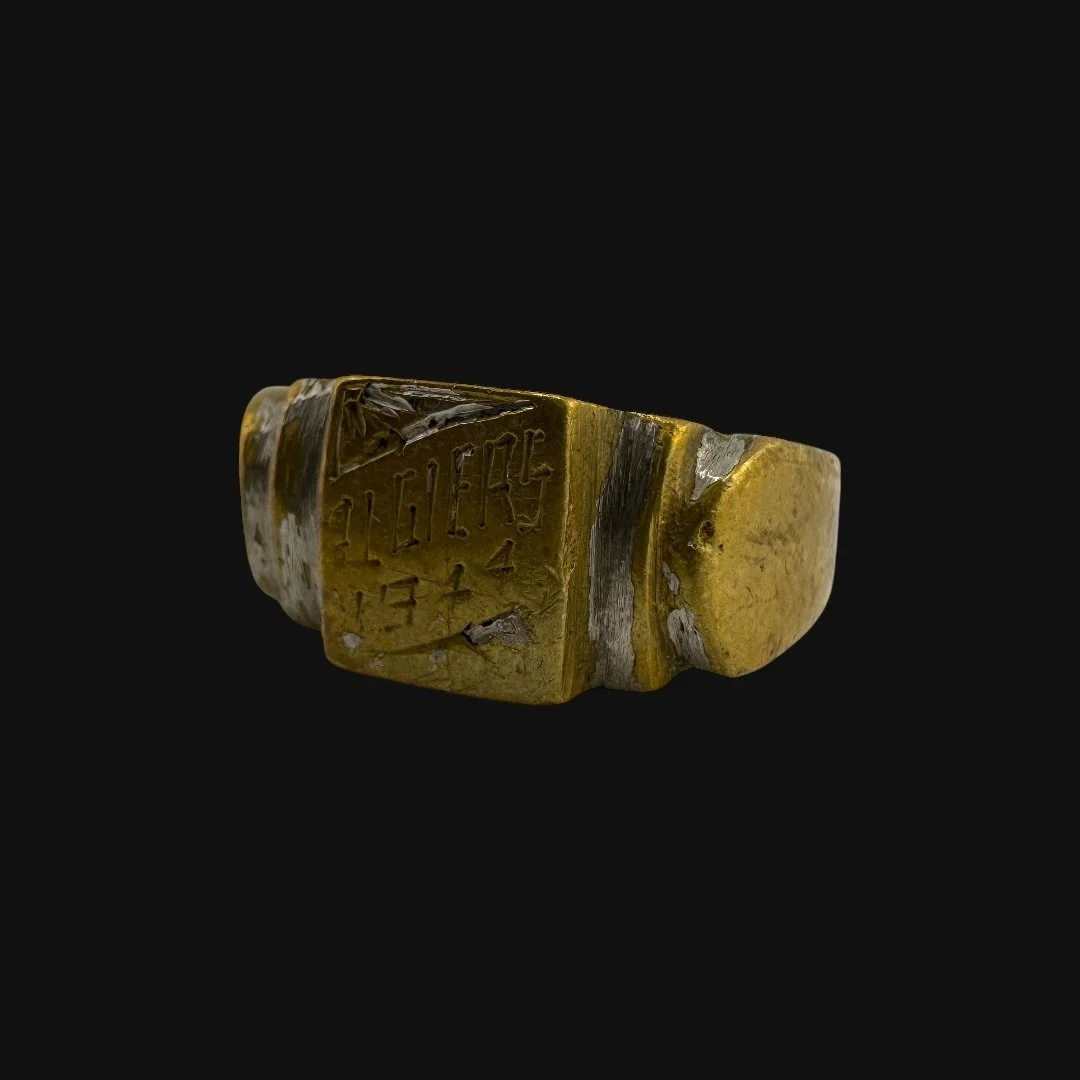 Image 8 of 12
Image 8 of 12

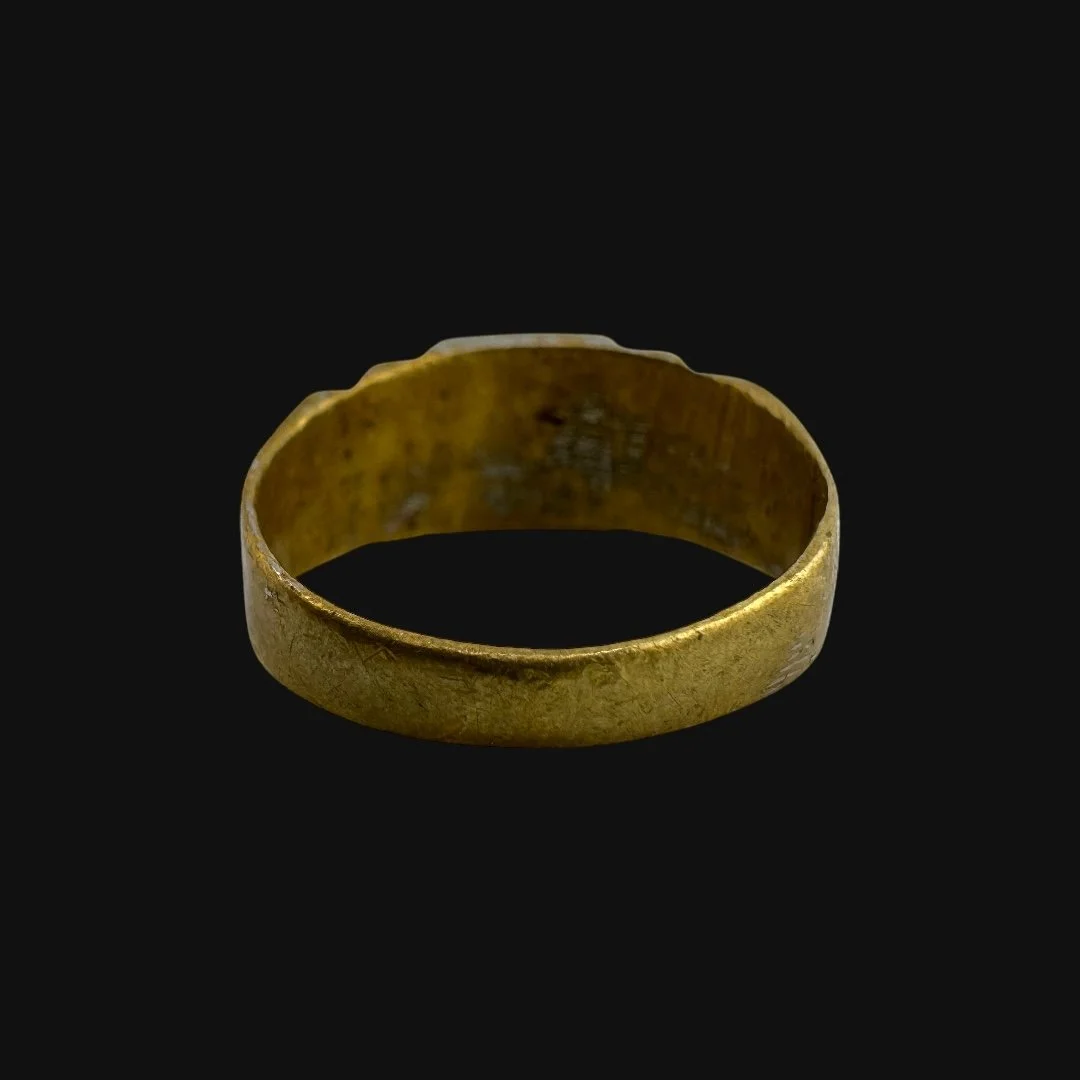 Image 9 of 12
Image 9 of 12

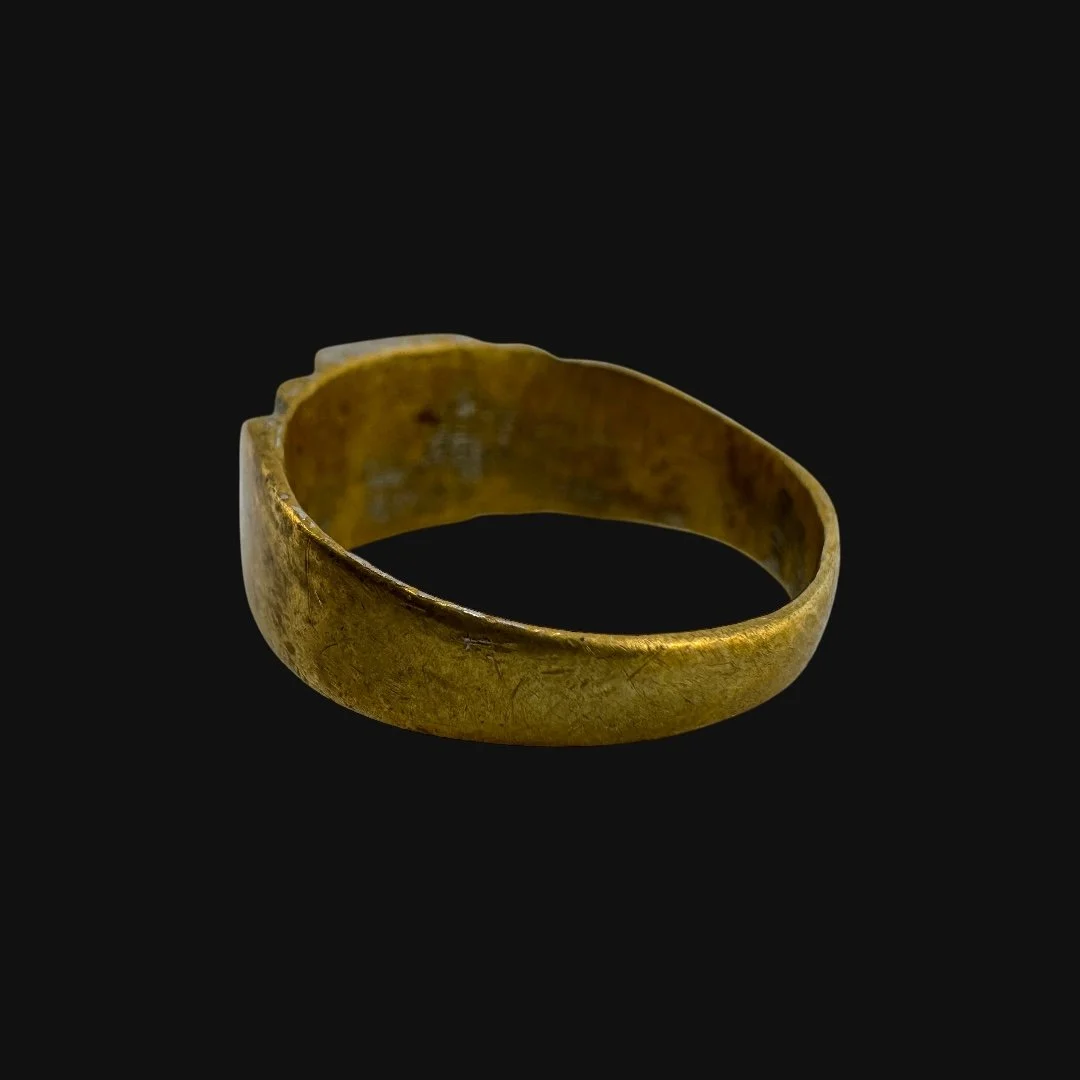 Image 10 of 12
Image 10 of 12

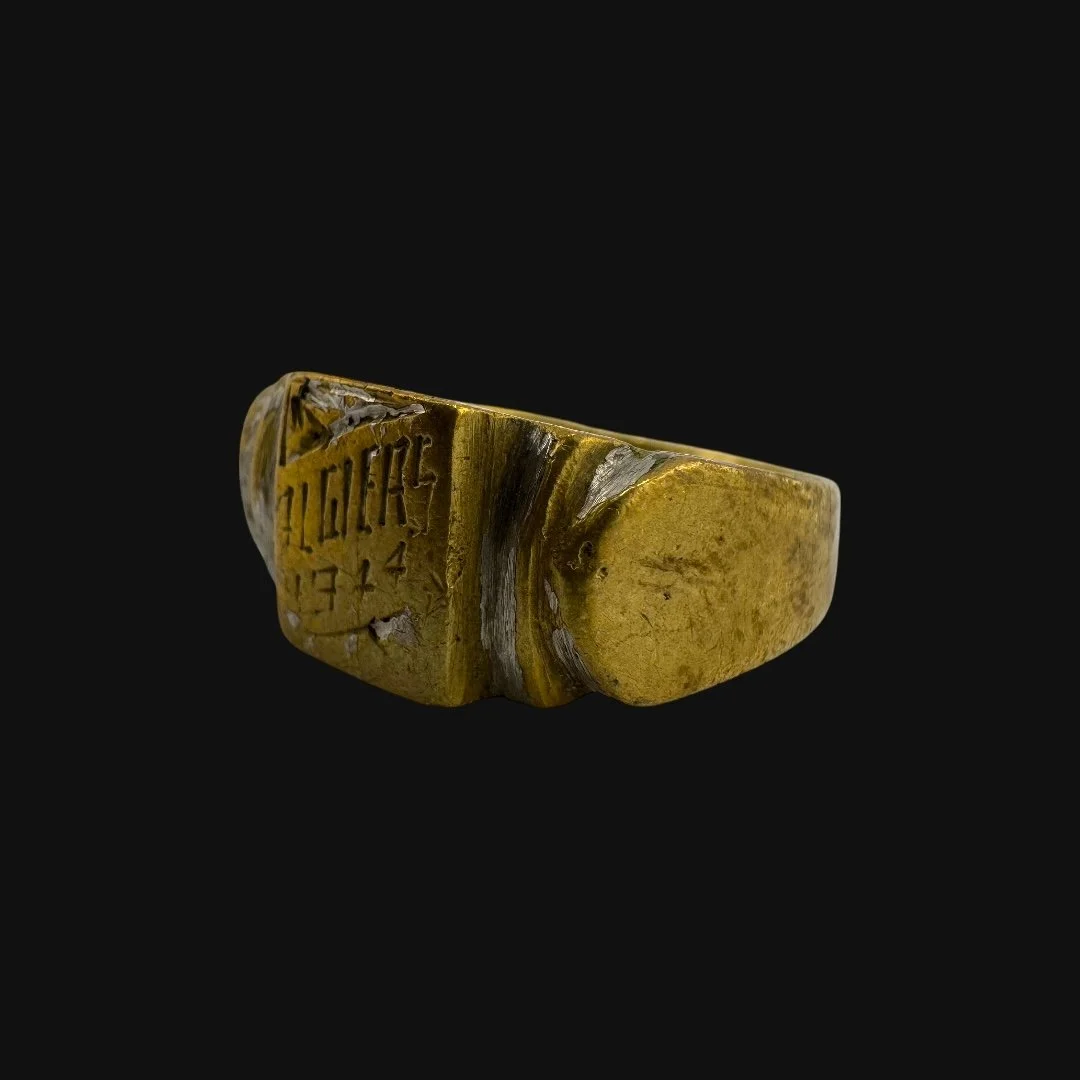 Image 11 of 12
Image 11 of 12

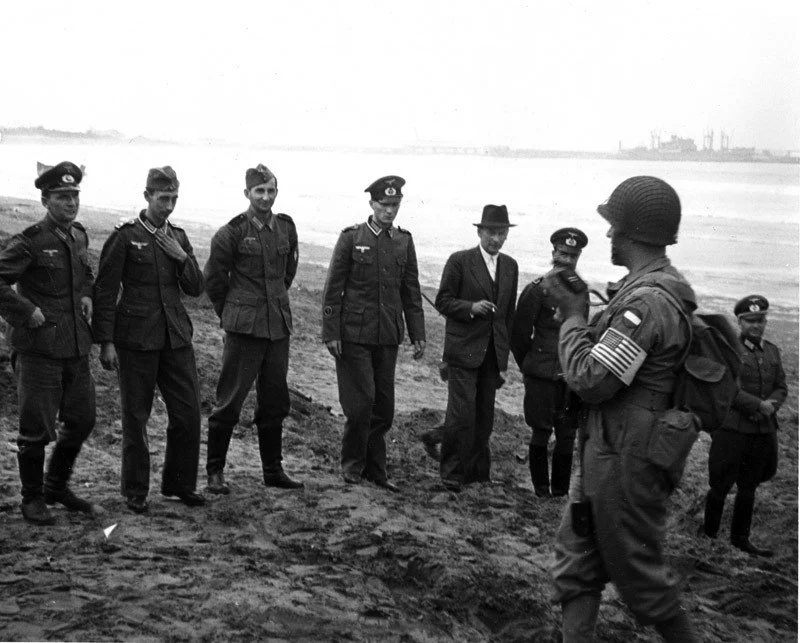 Image 12 of 12
Image 12 of 12













Original WWII “Algiers 1944” U.S. Soldier Handmade Combat Theater Ring – Battlefield Material – Mediterranean Theater (Size 9.5)
Comes with a hand-signed C.O.A. and a full historical research write-up
From: World War II
Dated: 1944
Ring Size: 9.5 (US)
Material: Fired Shell Casing/Discarded Battlefield Material
Theater: Mediterranean Theater
Wearable History Collection:
This authentic 1944 WWII-era ring, preserved in its original and unaltered condition, combines exceptional craftsmanship with lasting durability, making it fully suitable for modern wear today. As part of our exclusive World War II “Wearable History Ring Collection,” it offers the rare opportunity to own and wear a genuine piece of World War II. Both a timeless accessory and a tangible link to the past, this truly one-of-a-kind ring stands as a wearable tribute to the courage and sacrifice of a generation.
Historical Significance to Algiers (Africa):
By 1944, Algiers had become the political and operational nerve center of the Allied Mediterranean campaign. Once the capital of Vichy-controlled Algeria, it had been seized in the opening hours of Operation Torch in November 1942. In the two years since, the city transformed into the headquarters of the French Committee of National Liberation under Charles de Gaulle, serving as the de facto capital of Free France until the liberation of Paris in August 1944. Its position on the Mediterranean made it an indispensable link between the Allied supply lines from the United States and Britain and the combat zones in Italy, Corsica, and southern France. From its bustling harbors and airfields, Allied convoys, troop transports, and warplanes fanned out across the theater.
Militarily, 1944 saw Algiers functioning as a command and logistical hub for the drive into Europe. The Allied Mediterranean Theater of Operations coordinated campaigns in Italy, the Balkans, and the Aegean from offices here, while its naval facilities staged amphibious rehearsals and convoy escorts. The city played a critical supporting role inOperation Dragoon, the August 1944 invasion of southern France, serving as a staging ground for French First Army units under General de Lattre de Tassigny. Troops, tanks, artillery, and supplies were shipped from Algiers to the Riviera, enabling the rapid link-up with Allied forces advancing from Normandy. Intelligence operations flourished as well, with the OSS, SOE, and French resistance networks using Algiers as a secure base for espionage and sabotage missions into occupied Europe.
The city itself reflected the pressures and opportunities of wartime. Allied troops from multiple nations crowded the streets, markets were alive with activity, and the port worked around the clock unloading Liberty ships. Warehouses brimmed with ammunition and fuel while airfields bustled with reconnaissance and transport aircraft. Civilians experienced both economic opportunity and hardship jobs were plentiful, yet inflation, rationing, and overcrowding strained daily life. By the year’s end, Algiers’ strategic role began to diminish as the war’s center of gravity shifted to France and Germany. Yet in 1944, its harbors, political offices, and military headquarters had been central to sustaining the Mediterranean front and launching the operations that helped bring about Nazi Germany’s defeat.
The Legacy Within This Ring:
This World War II ring, inscribed “ALGIERS 1944,” was handcrafted in theater by a U.S. soldier from discarded wartime/battlefield materials. Created in the bustling Allied stronghold of Algiers, it reflects both the ingenuity of its maker and the city’s vital role in 1944 as the political center of Free France and a key base for Mediterranean operations, including preparations for the invasion of southern France. More than a souvenir, it is a preserved fragment of resilience, artistry, and the campaign that pushed the Allies toward victory in Europe.
Comes with a hand-signed C.O.A. and a full historical research write-up
From: World War II
Dated: 1944
Ring Size: 9.5 (US)
Material: Fired Shell Casing/Discarded Battlefield Material
Theater: Mediterranean Theater
Wearable History Collection:
This authentic 1944 WWII-era ring, preserved in its original and unaltered condition, combines exceptional craftsmanship with lasting durability, making it fully suitable for modern wear today. As part of our exclusive World War II “Wearable History Ring Collection,” it offers the rare opportunity to own and wear a genuine piece of World War II. Both a timeless accessory and a tangible link to the past, this truly one-of-a-kind ring stands as a wearable tribute to the courage and sacrifice of a generation.
Historical Significance to Algiers (Africa):
By 1944, Algiers had become the political and operational nerve center of the Allied Mediterranean campaign. Once the capital of Vichy-controlled Algeria, it had been seized in the opening hours of Operation Torch in November 1942. In the two years since, the city transformed into the headquarters of the French Committee of National Liberation under Charles de Gaulle, serving as the de facto capital of Free France until the liberation of Paris in August 1944. Its position on the Mediterranean made it an indispensable link between the Allied supply lines from the United States and Britain and the combat zones in Italy, Corsica, and southern France. From its bustling harbors and airfields, Allied convoys, troop transports, and warplanes fanned out across the theater.
Militarily, 1944 saw Algiers functioning as a command and logistical hub for the drive into Europe. The Allied Mediterranean Theater of Operations coordinated campaigns in Italy, the Balkans, and the Aegean from offices here, while its naval facilities staged amphibious rehearsals and convoy escorts. The city played a critical supporting role inOperation Dragoon, the August 1944 invasion of southern France, serving as a staging ground for French First Army units under General de Lattre de Tassigny. Troops, tanks, artillery, and supplies were shipped from Algiers to the Riviera, enabling the rapid link-up with Allied forces advancing from Normandy. Intelligence operations flourished as well, with the OSS, SOE, and French resistance networks using Algiers as a secure base for espionage and sabotage missions into occupied Europe.
The city itself reflected the pressures and opportunities of wartime. Allied troops from multiple nations crowded the streets, markets were alive with activity, and the port worked around the clock unloading Liberty ships. Warehouses brimmed with ammunition and fuel while airfields bustled with reconnaissance and transport aircraft. Civilians experienced both economic opportunity and hardship jobs were plentiful, yet inflation, rationing, and overcrowding strained daily life. By the year’s end, Algiers’ strategic role began to diminish as the war’s center of gravity shifted to France and Germany. Yet in 1944, its harbors, political offices, and military headquarters had been central to sustaining the Mediterranean front and launching the operations that helped bring about Nazi Germany’s defeat.
The Legacy Within This Ring:
This World War II ring, inscribed “ALGIERS 1944,” was handcrafted in theater by a U.S. soldier from discarded wartime/battlefield materials. Created in the bustling Allied stronghold of Algiers, it reflects both the ingenuity of its maker and the city’s vital role in 1944 as the political center of Free France and a key base for Mediterranean operations, including preparations for the invasion of southern France. More than a souvenir, it is a preserved fragment of resilience, artistry, and the campaign that pushed the Allies toward victory in Europe.
